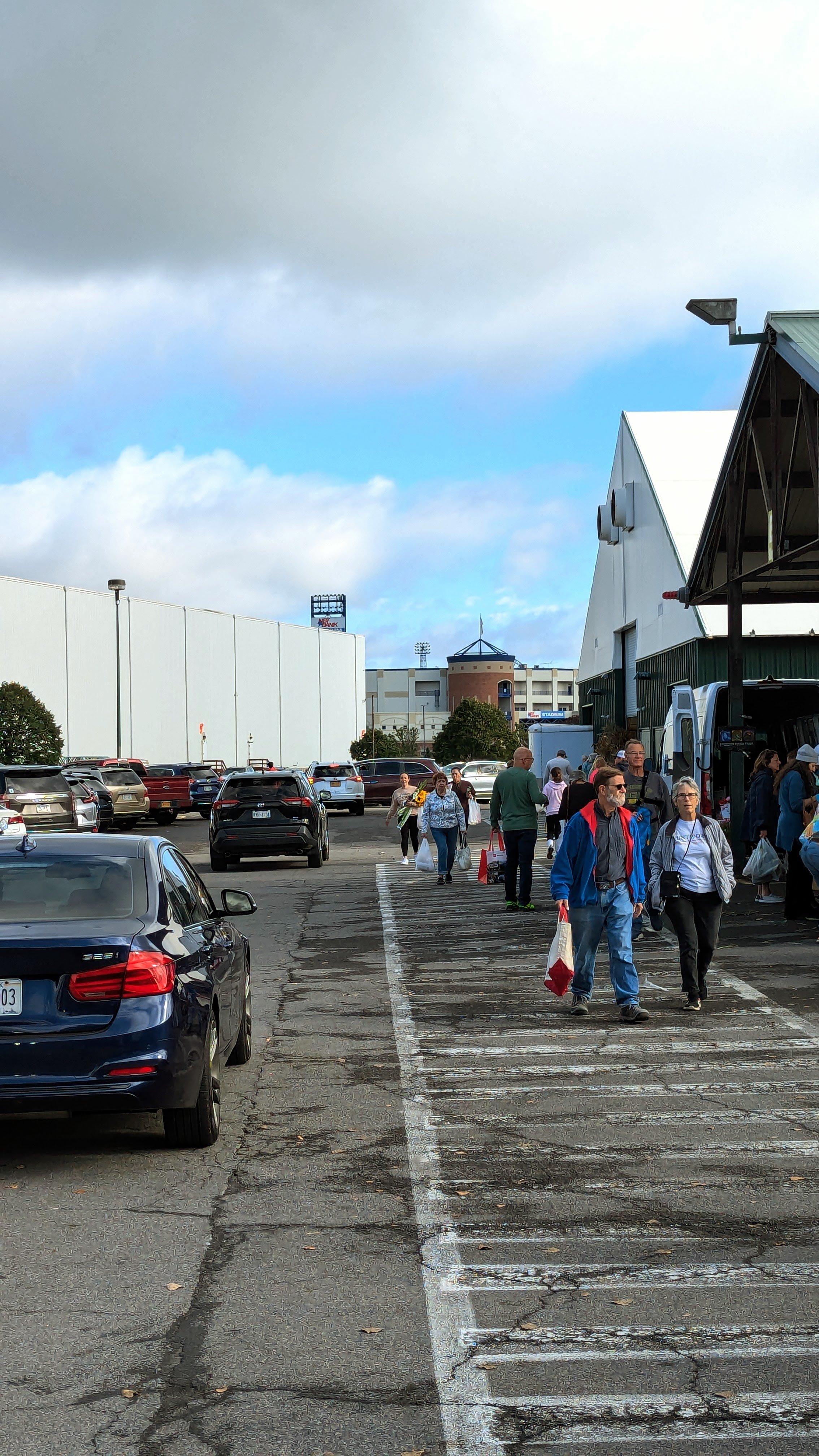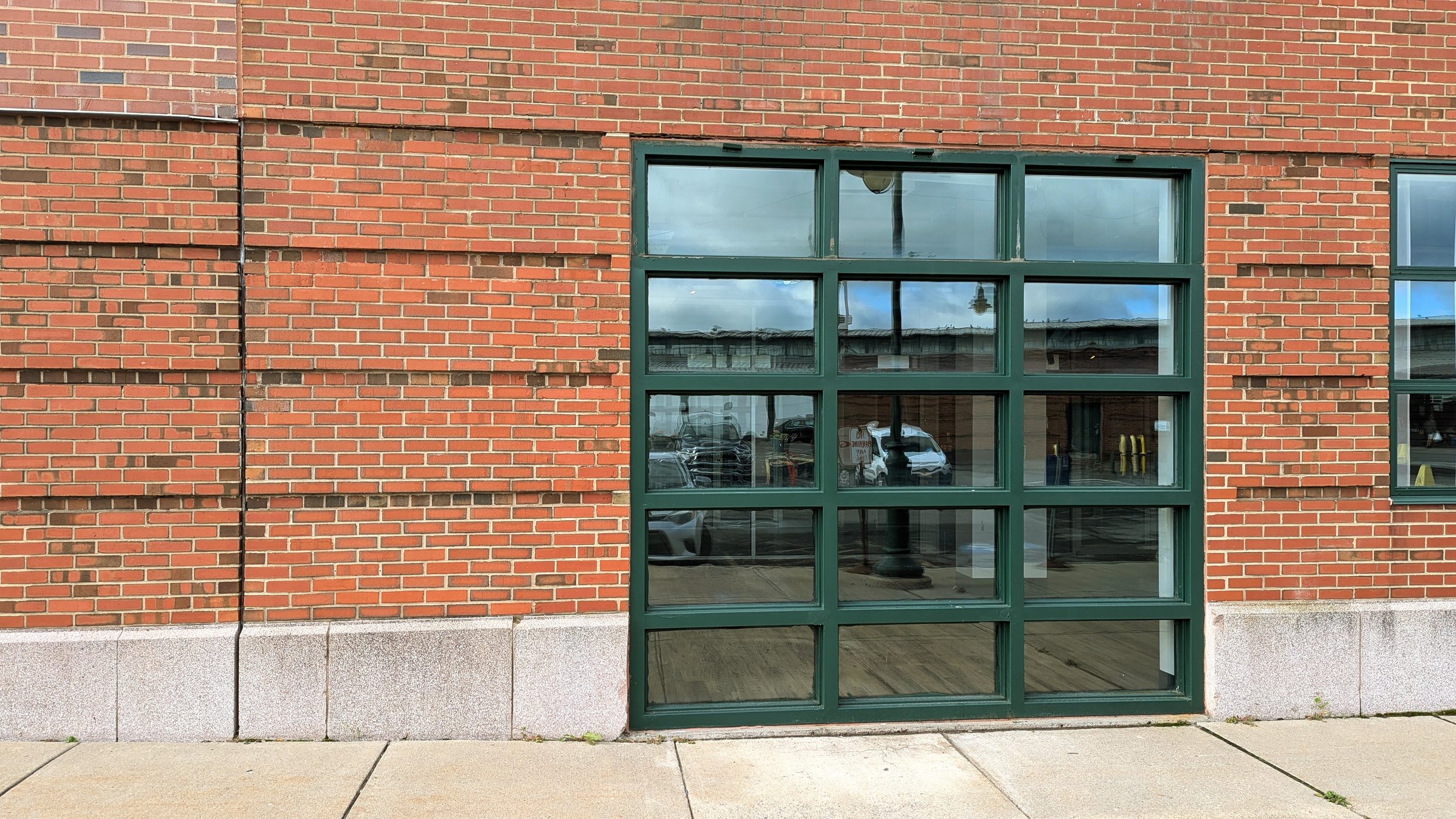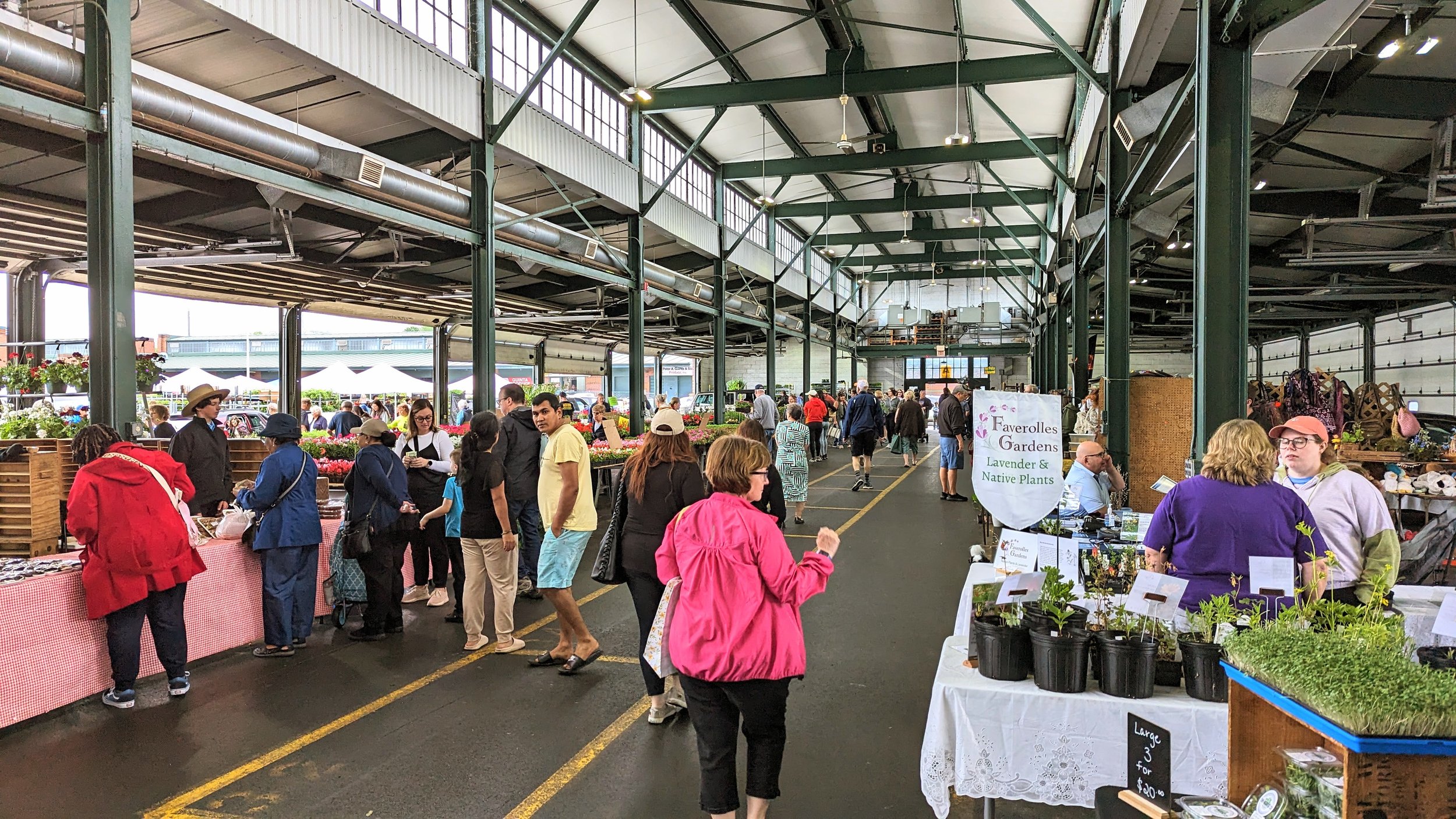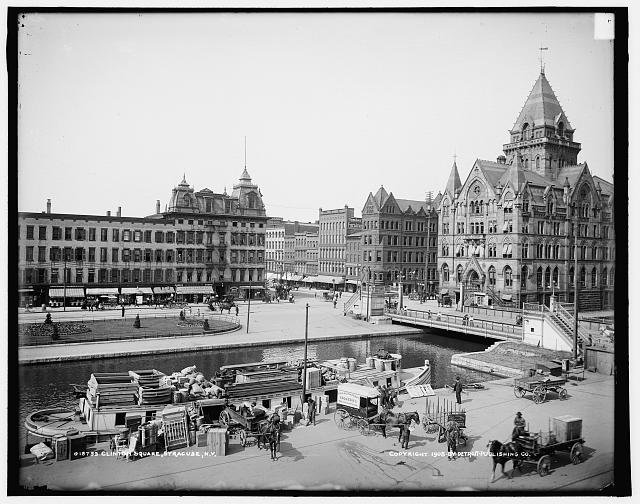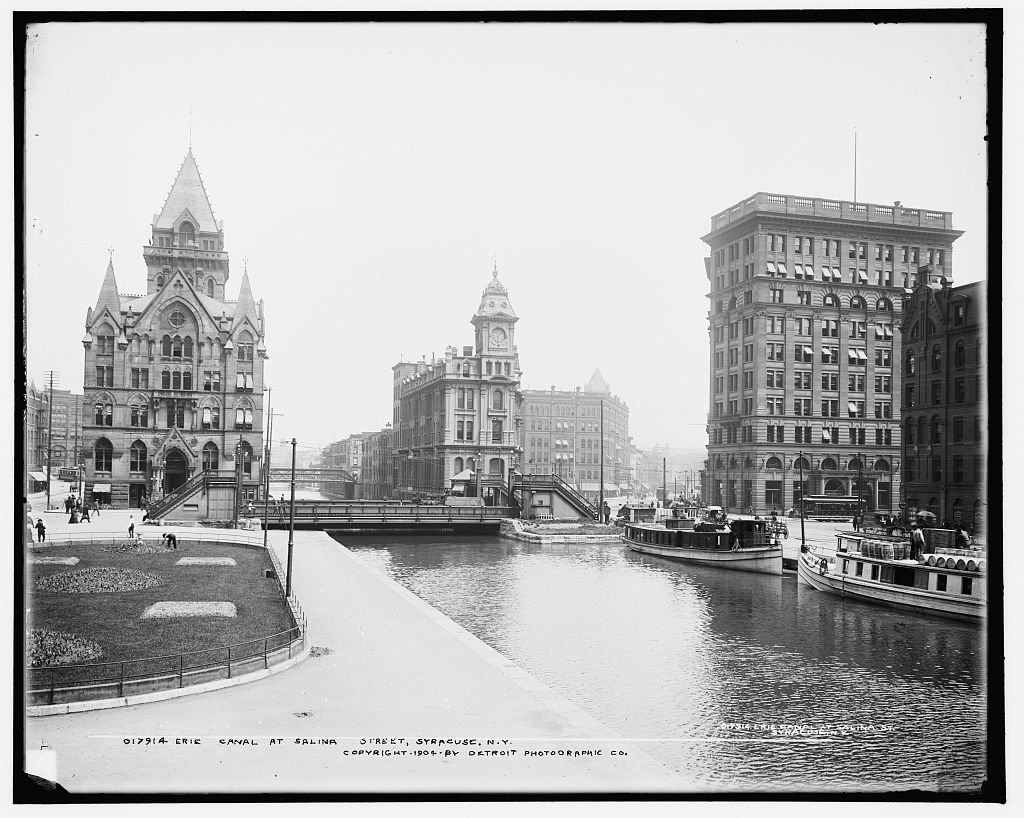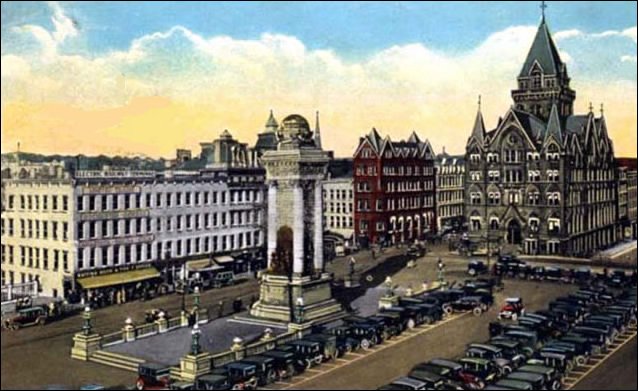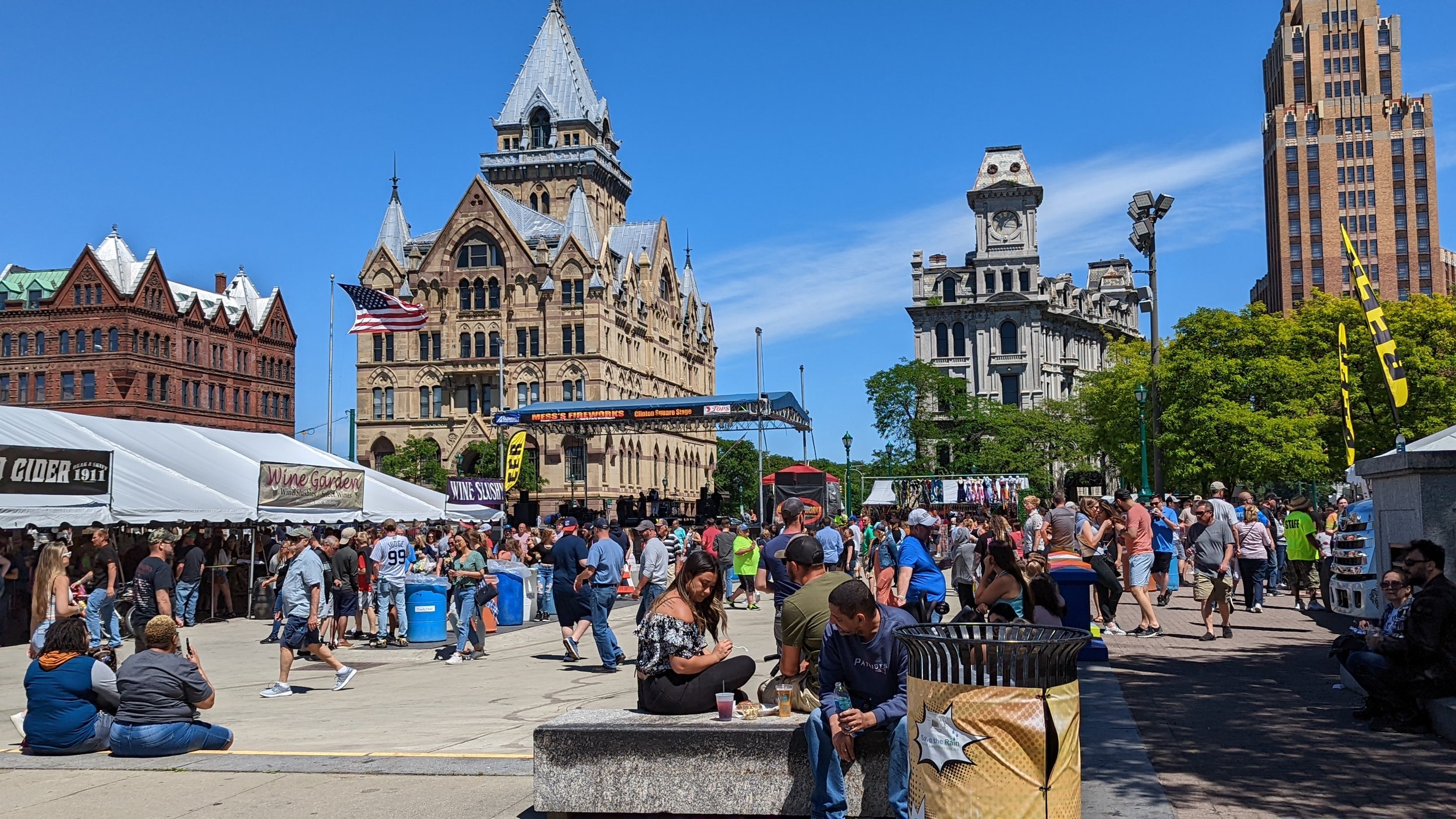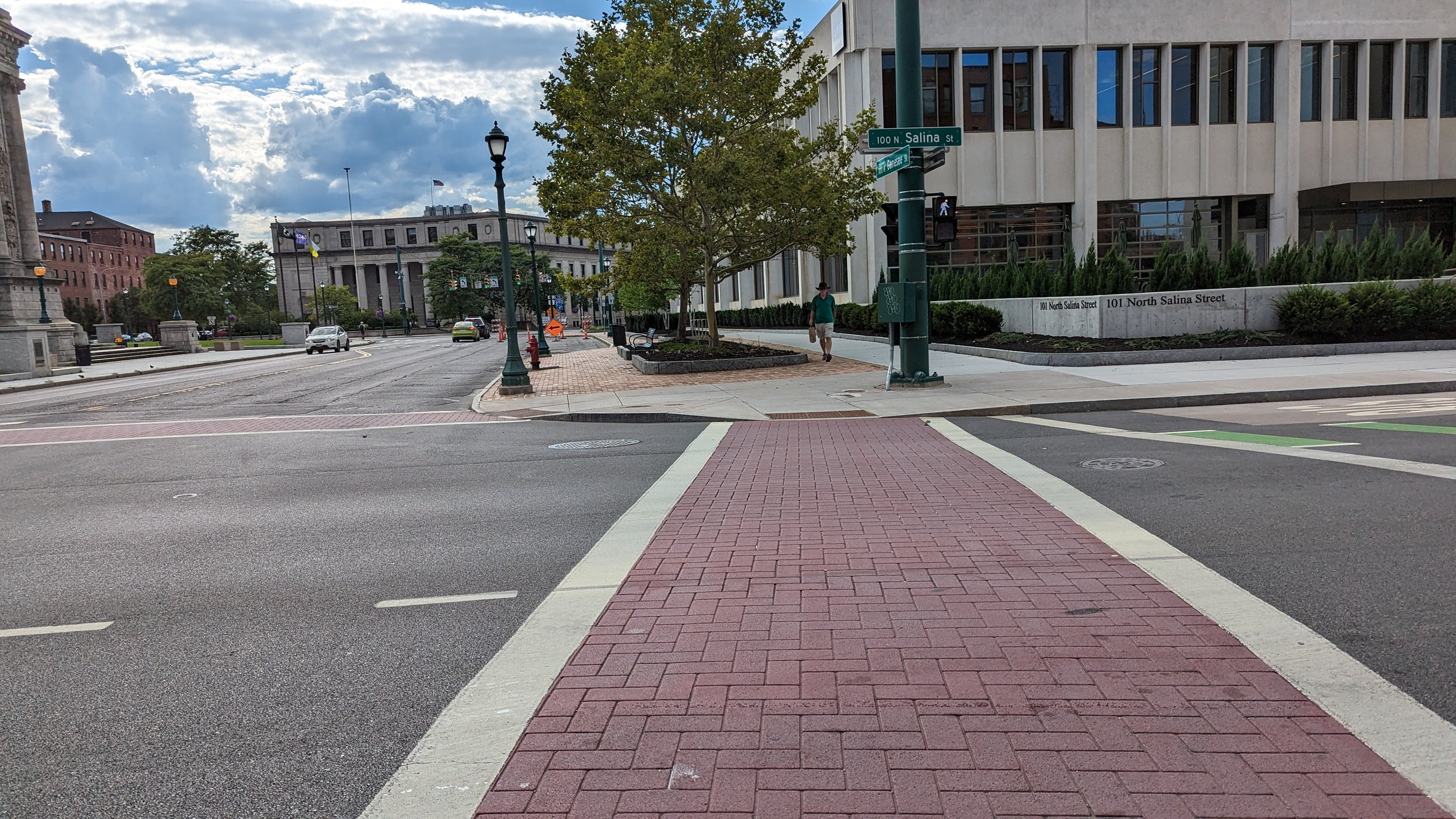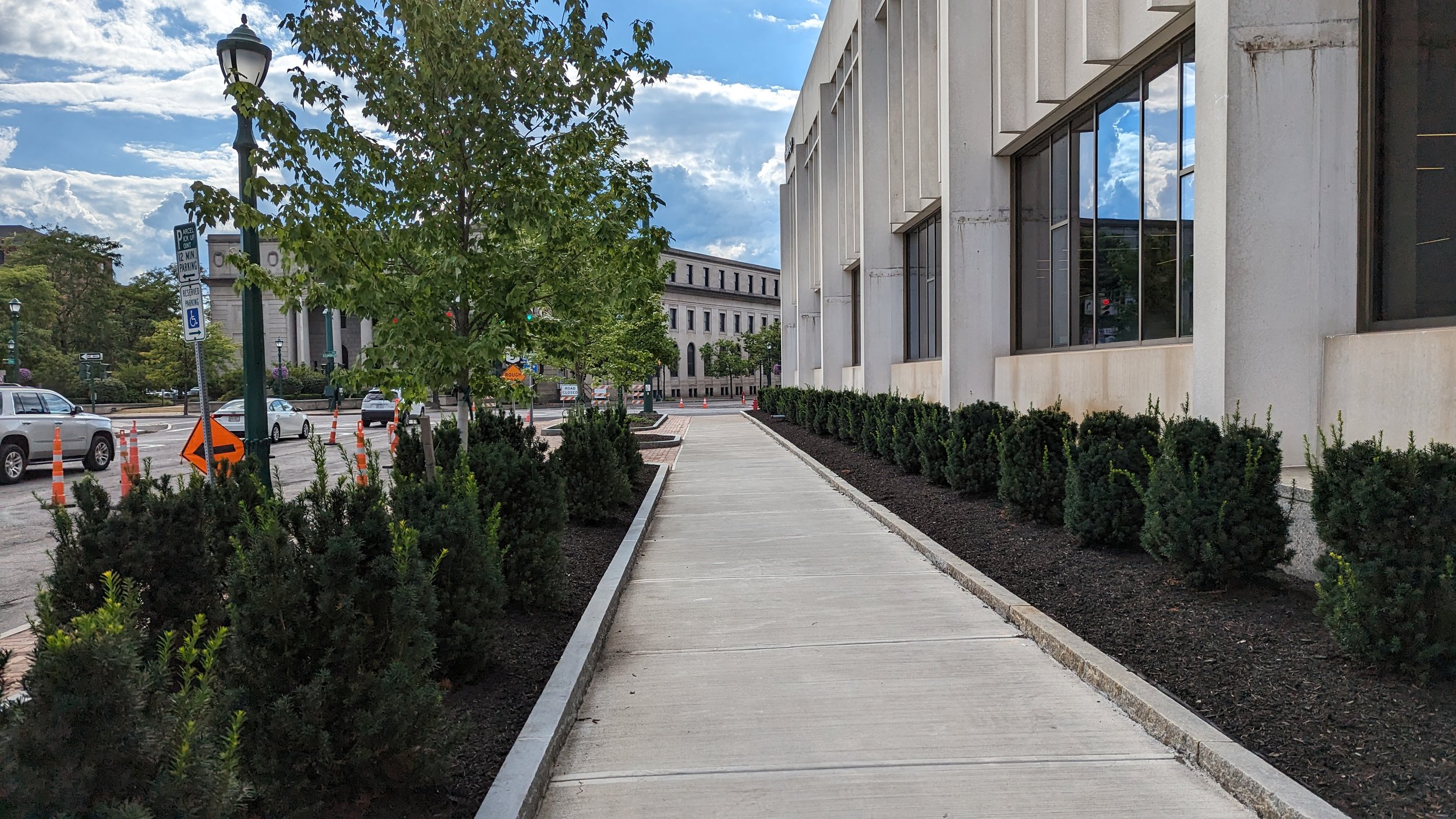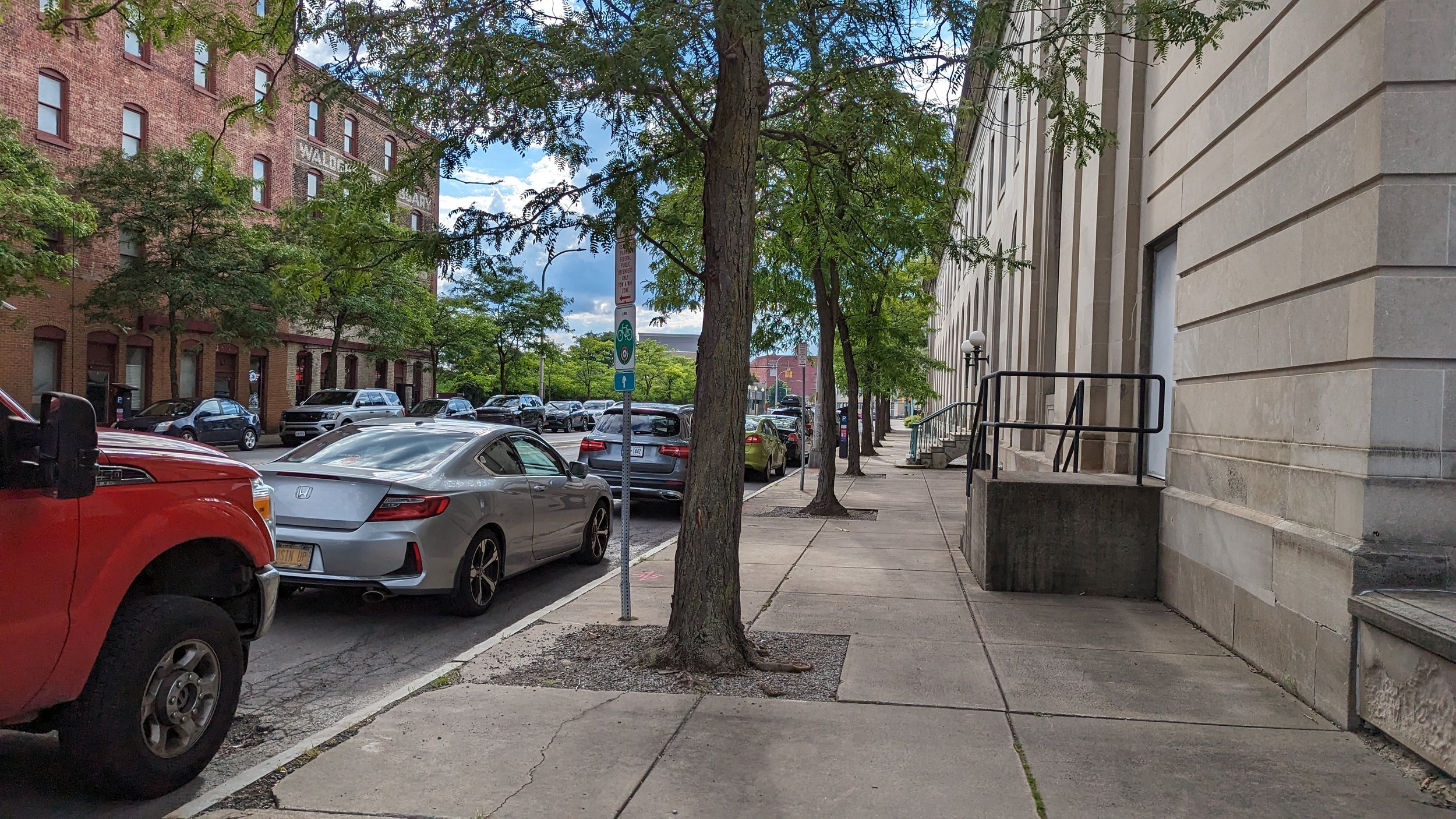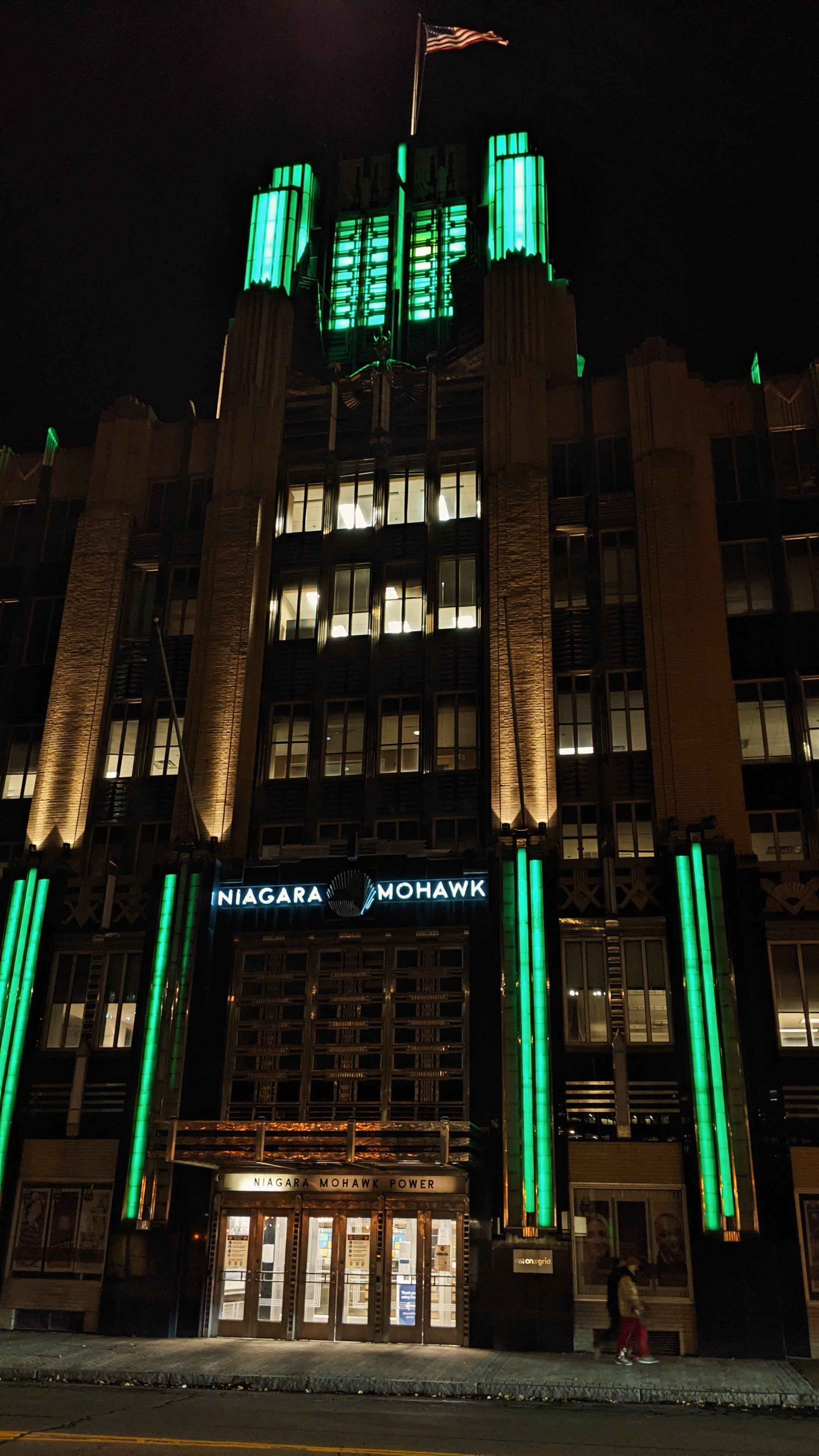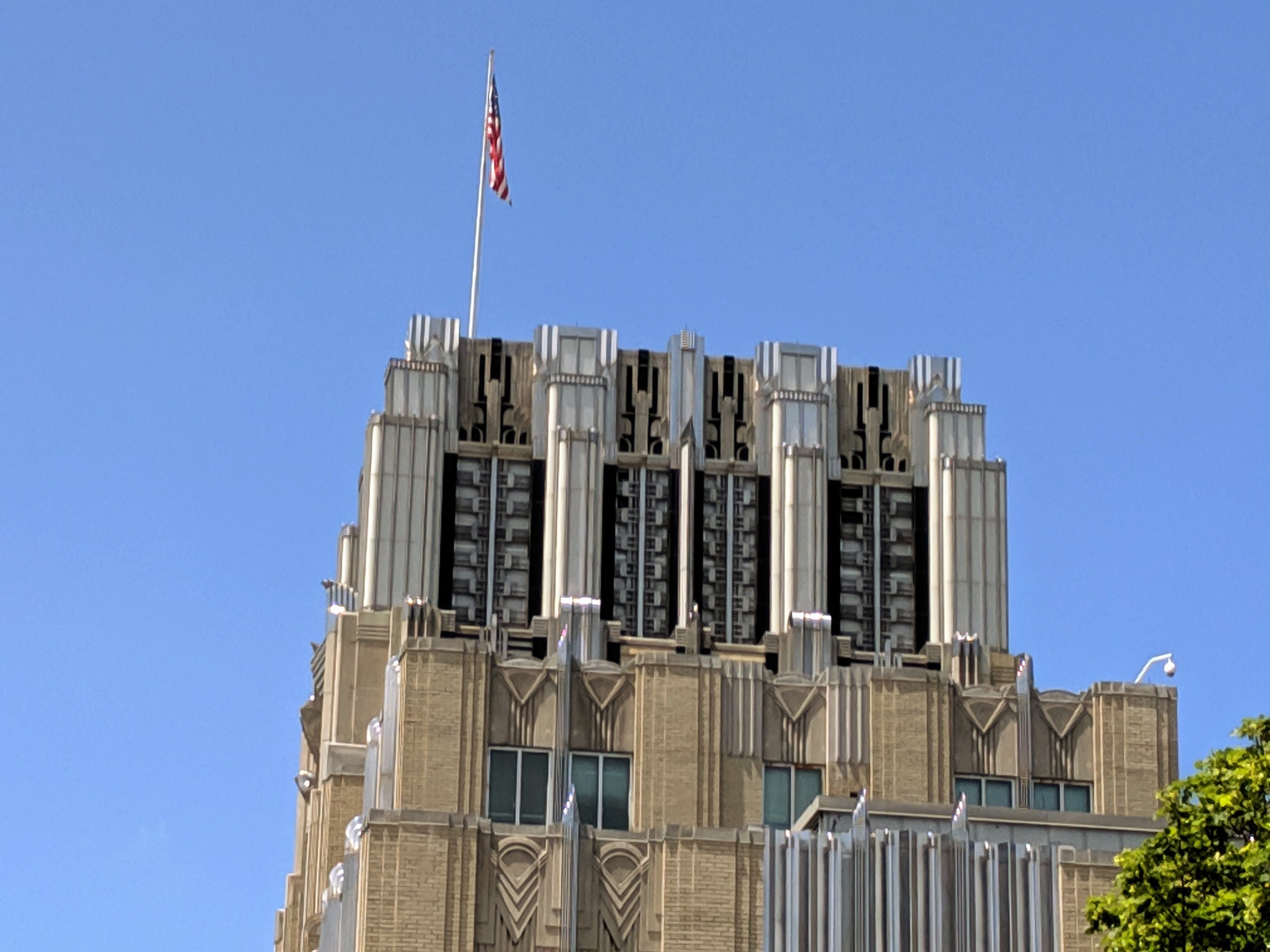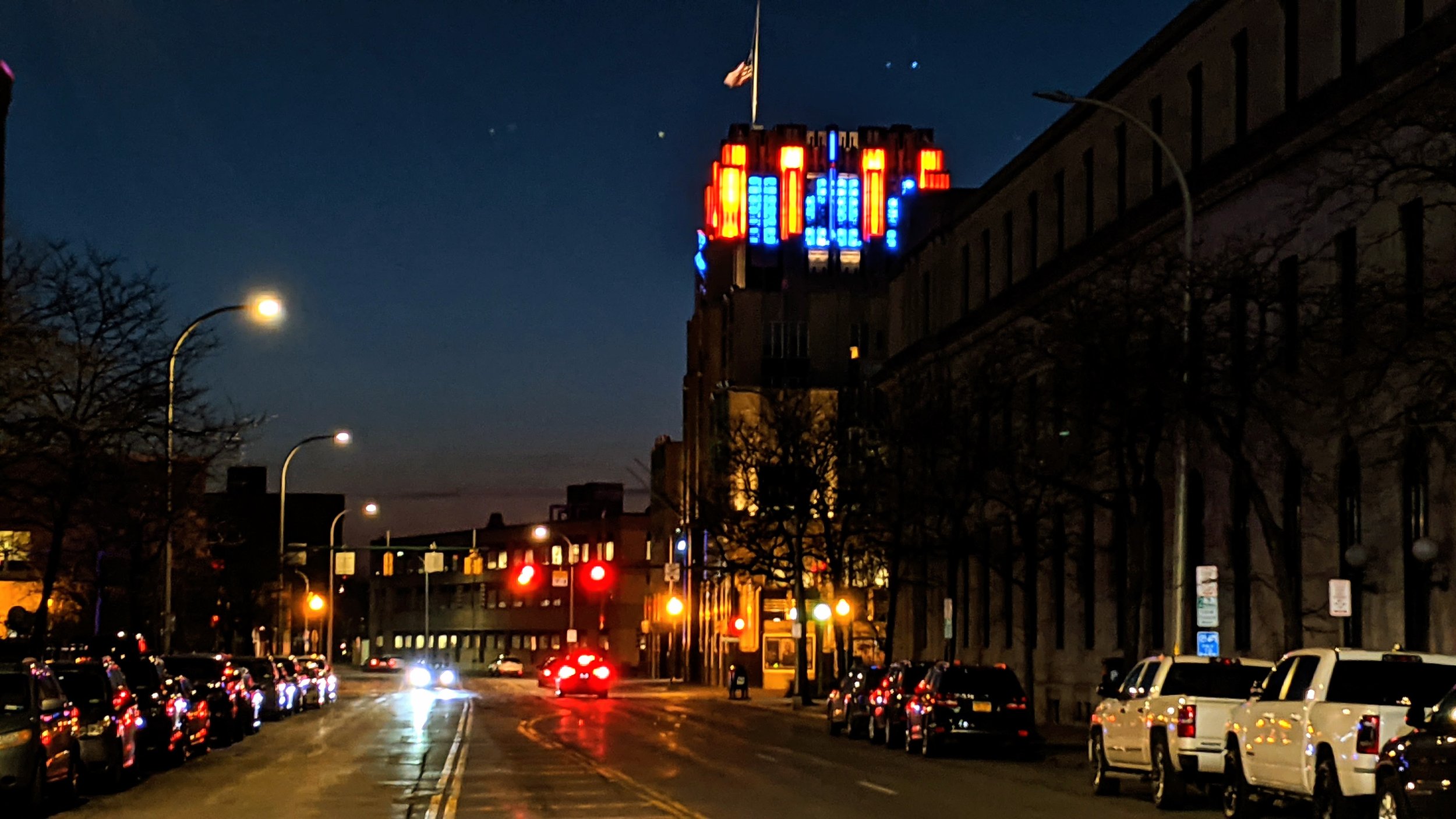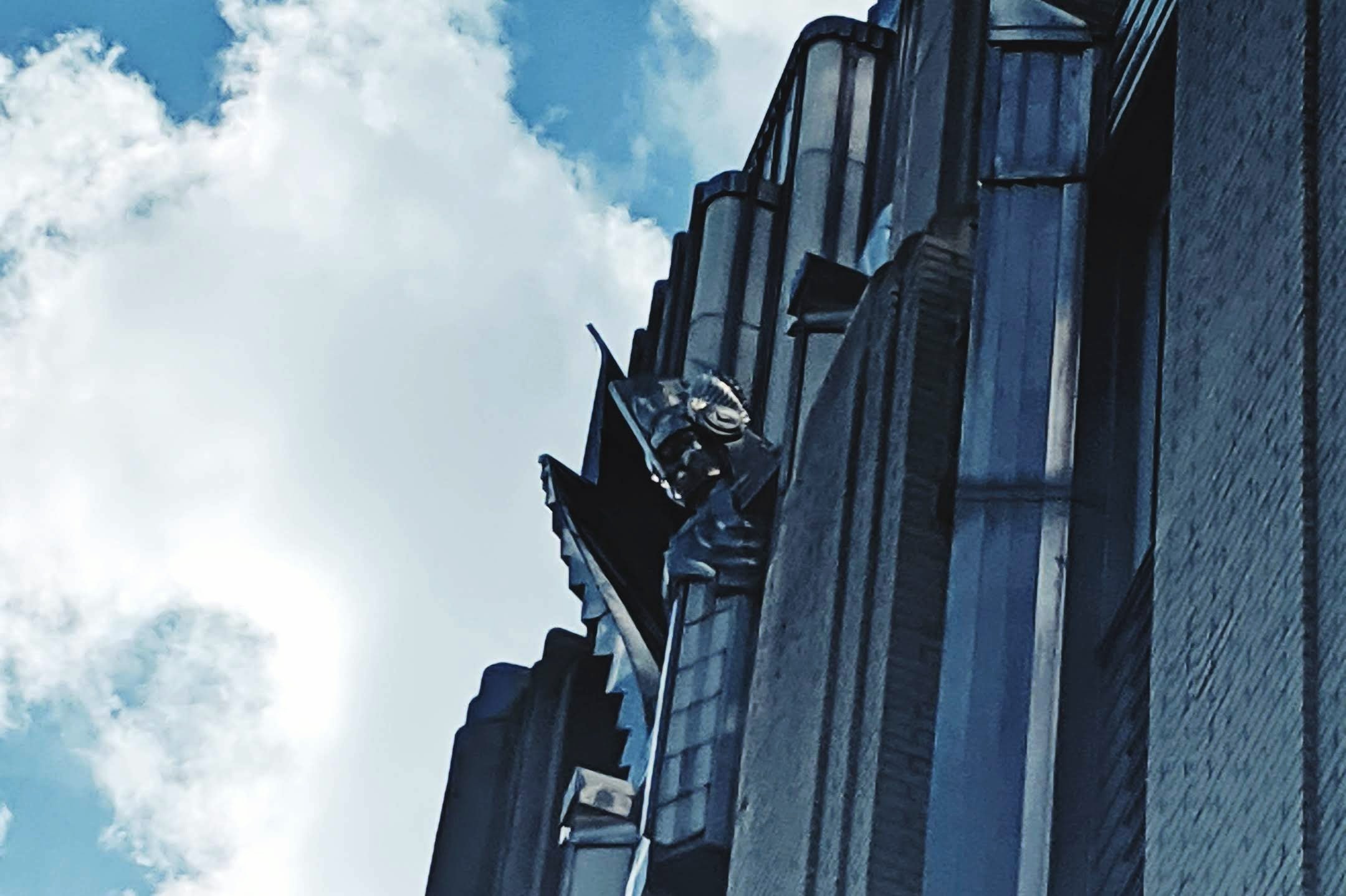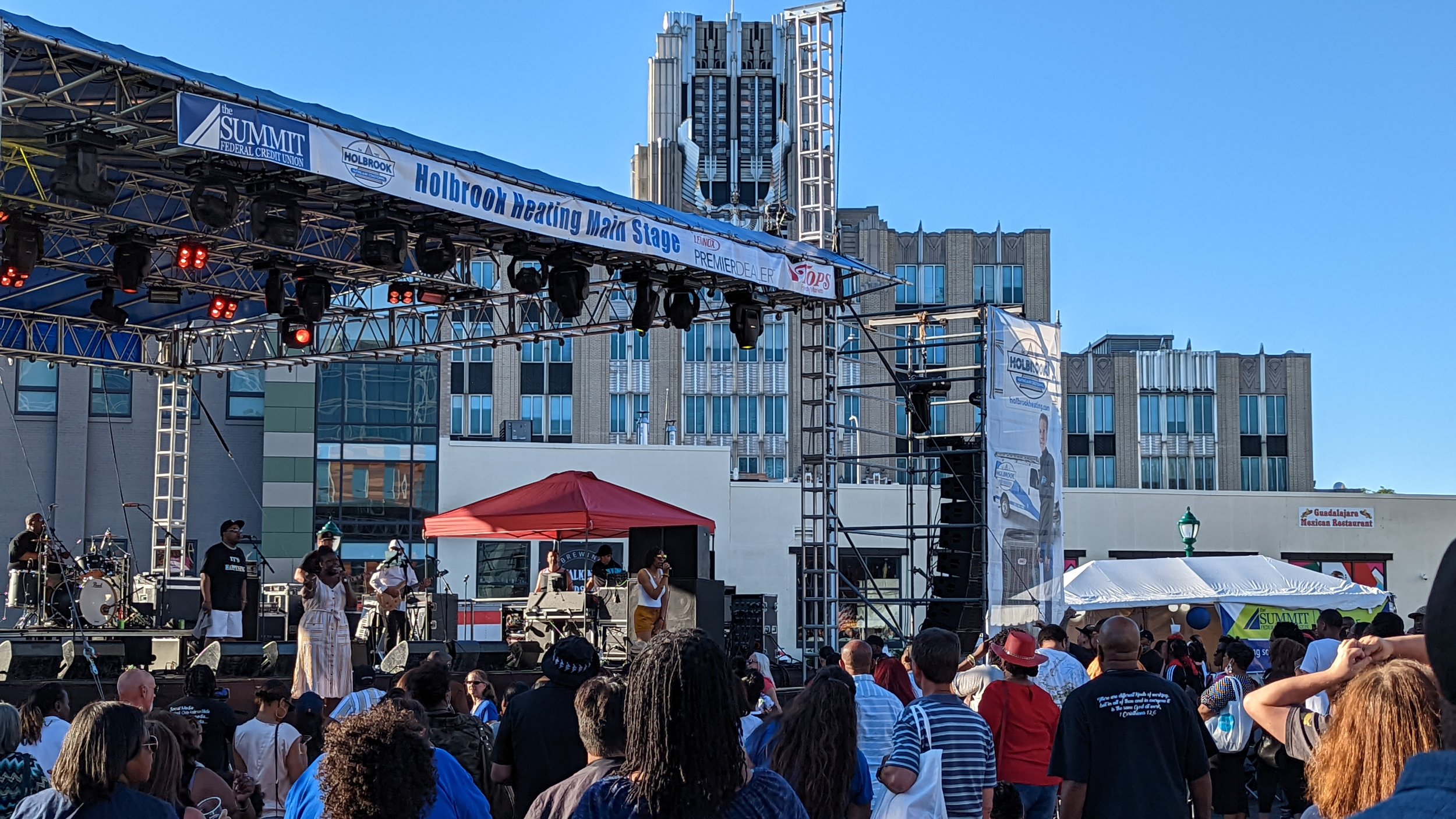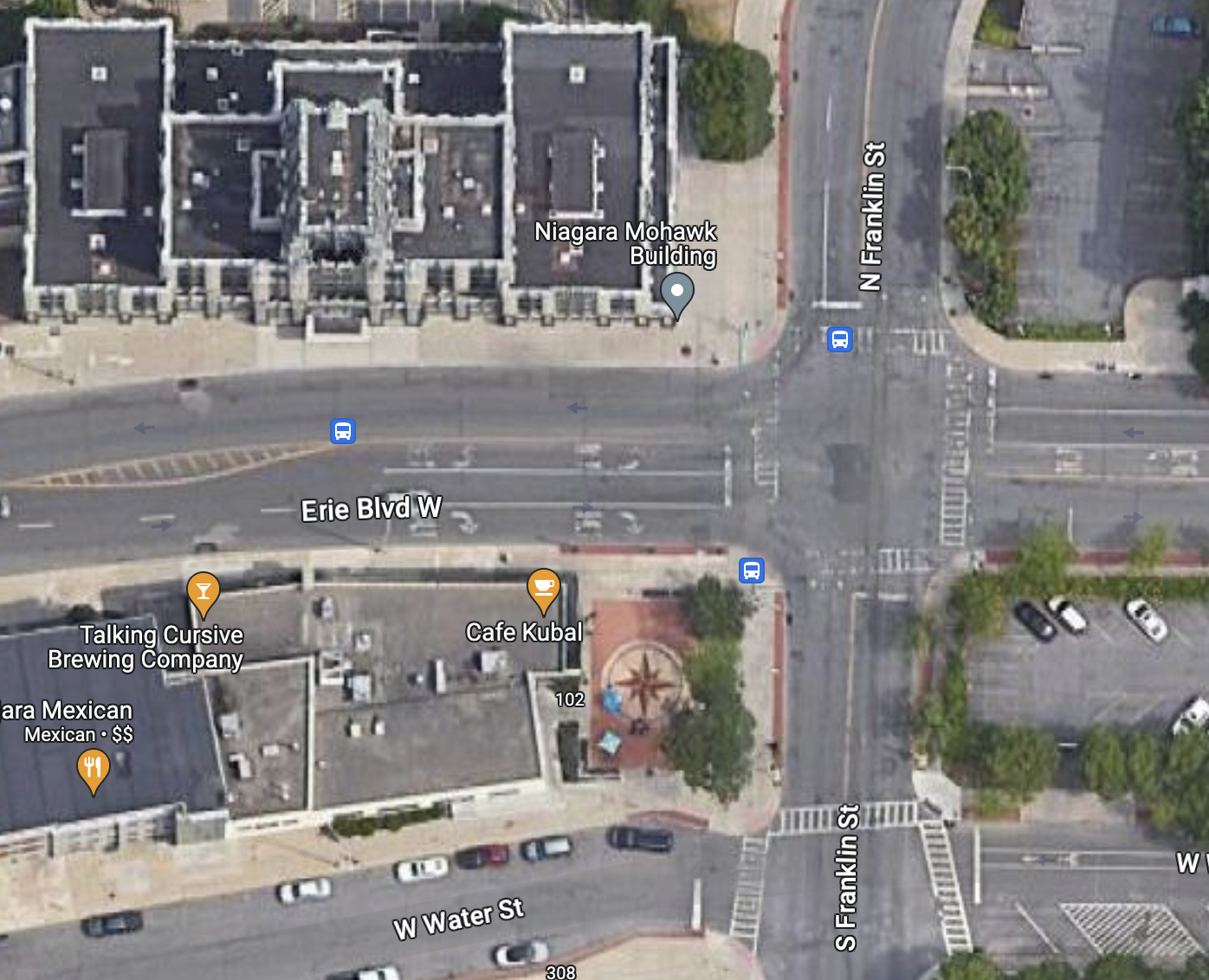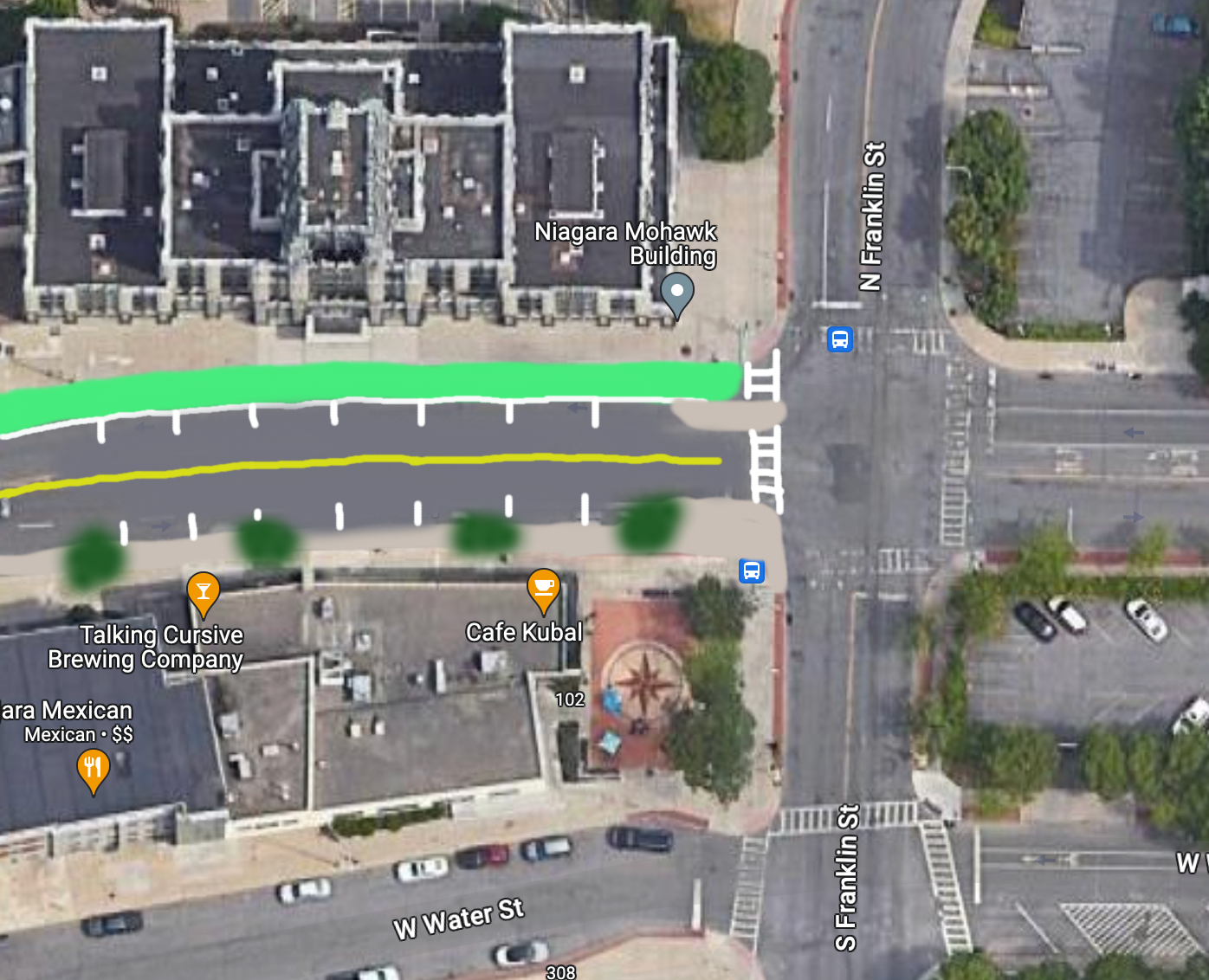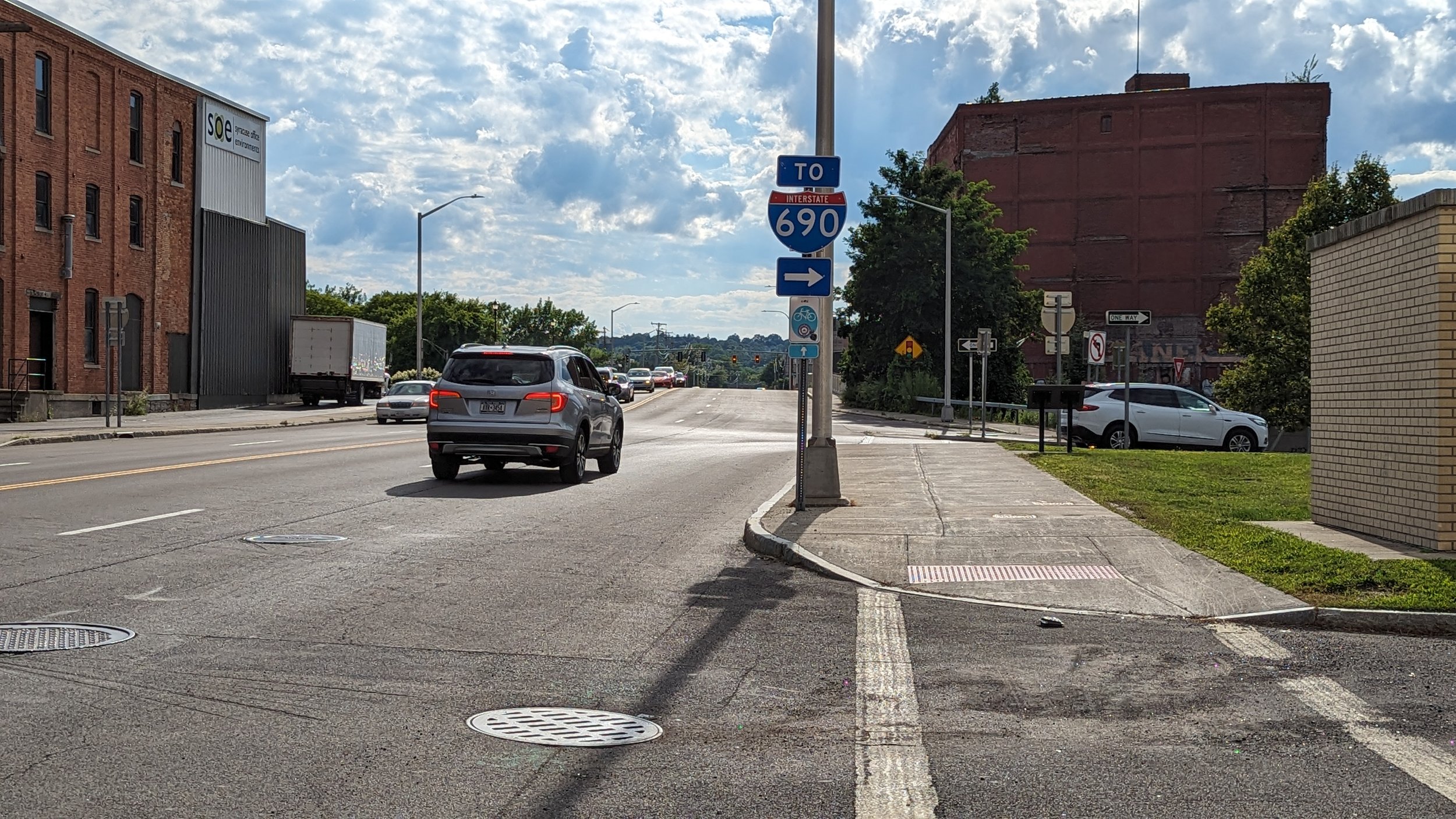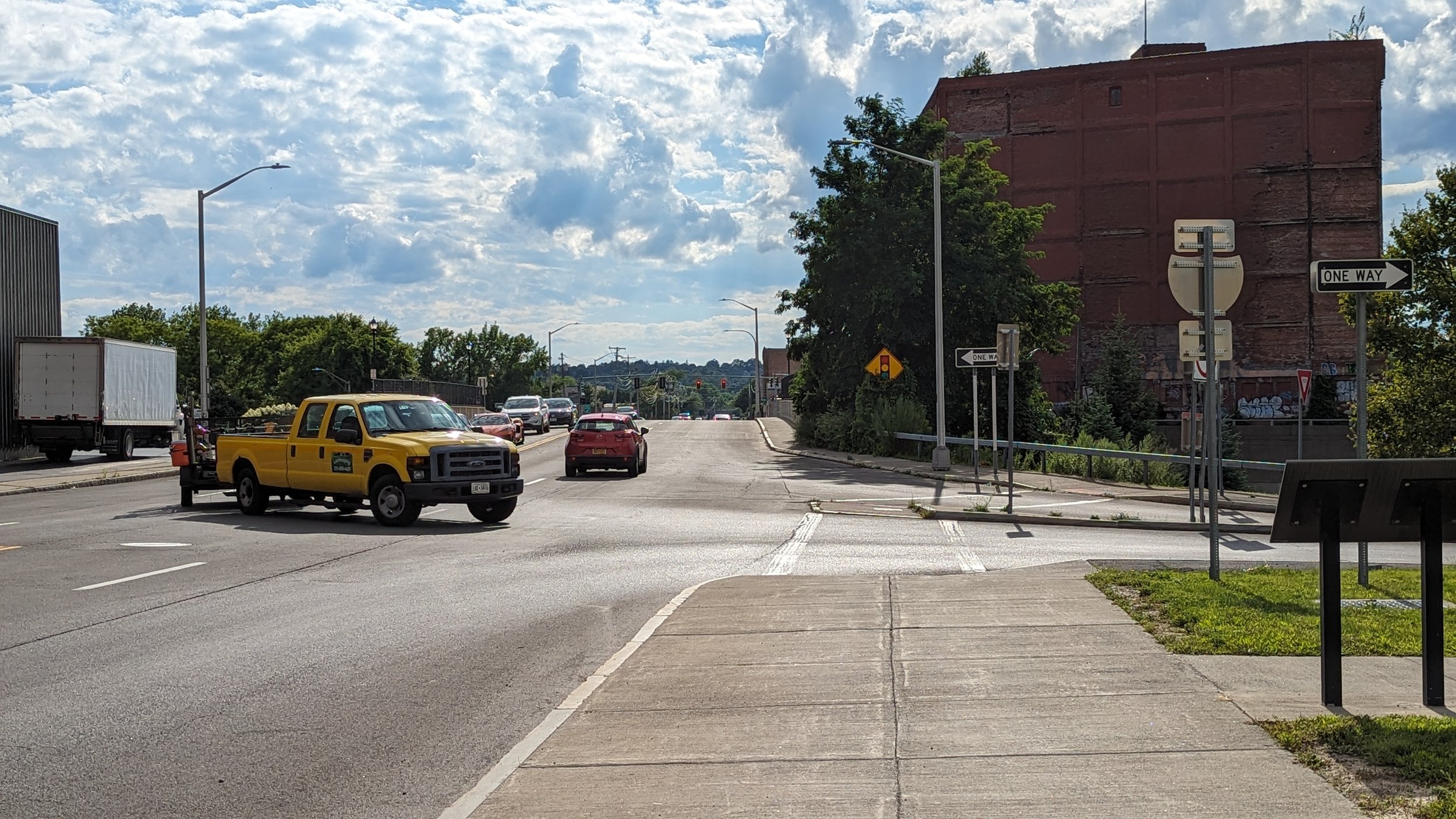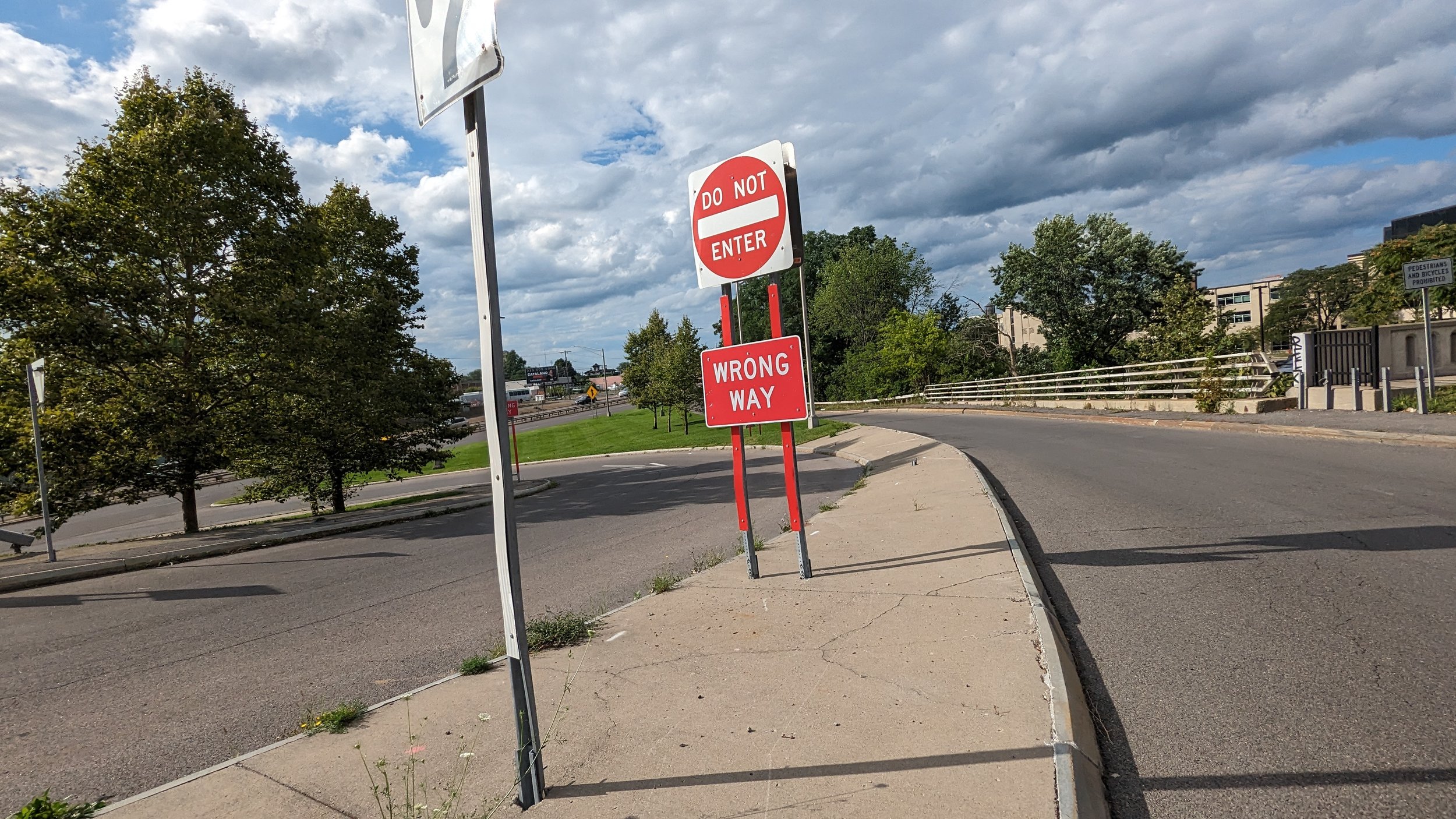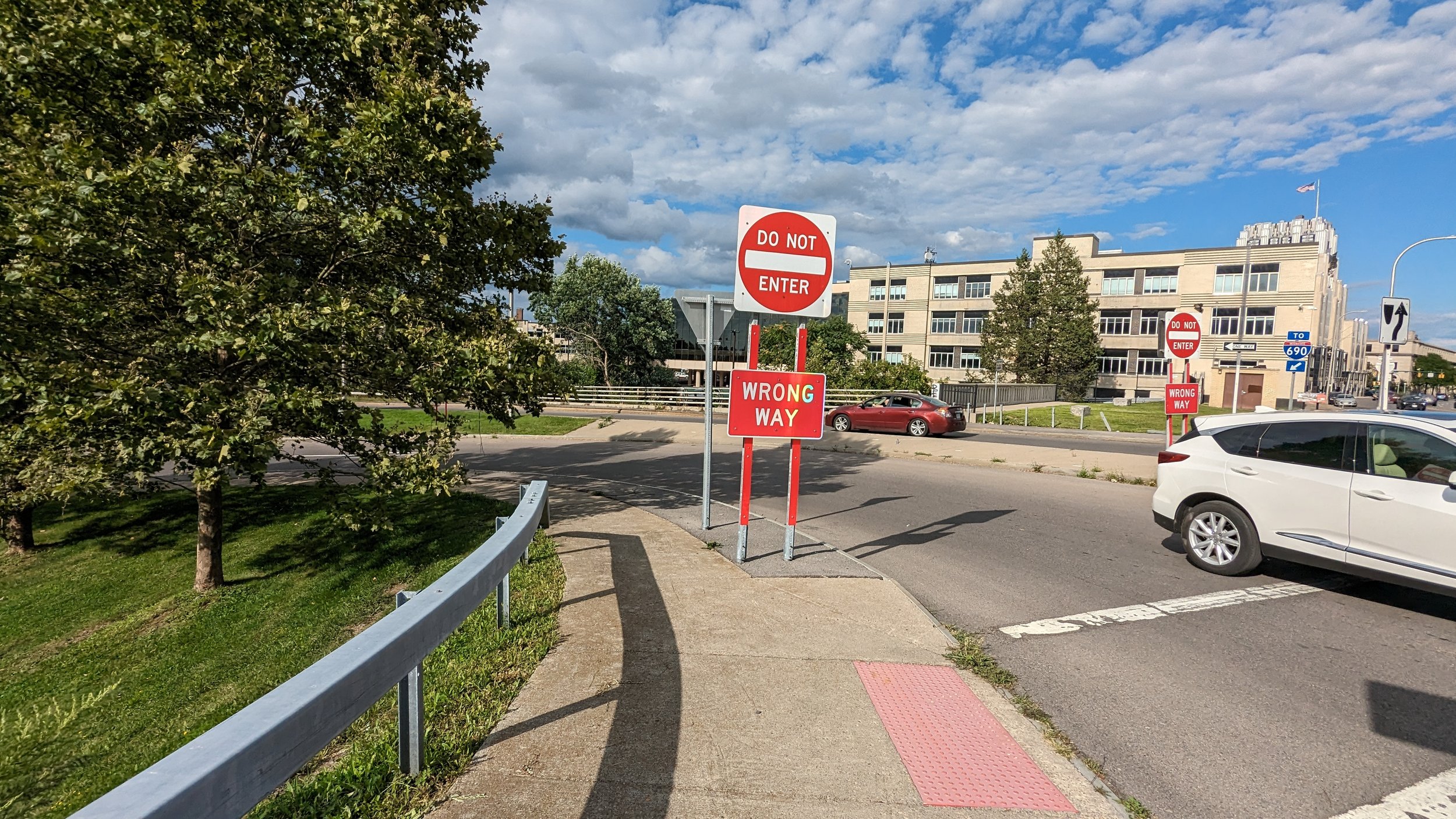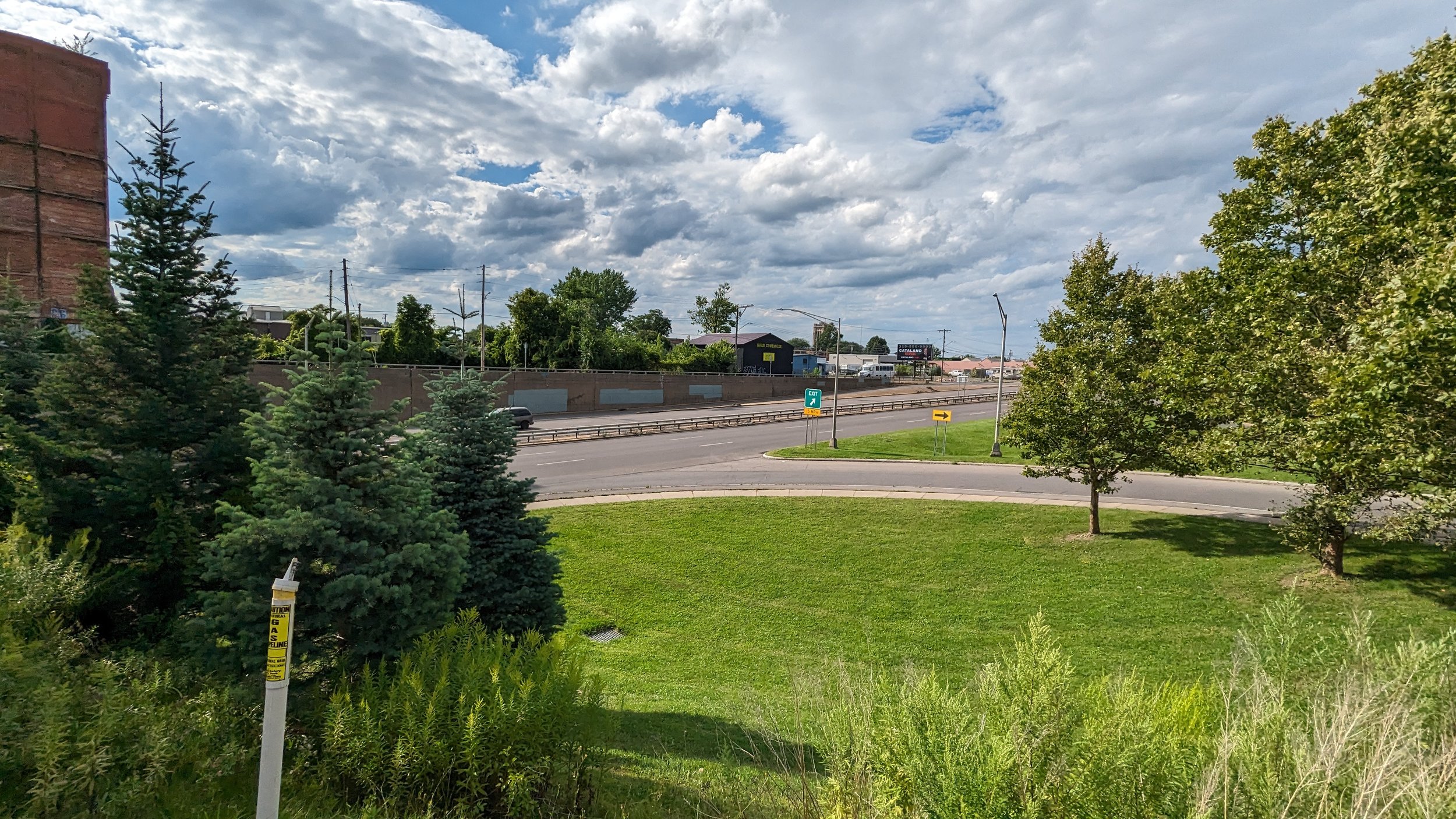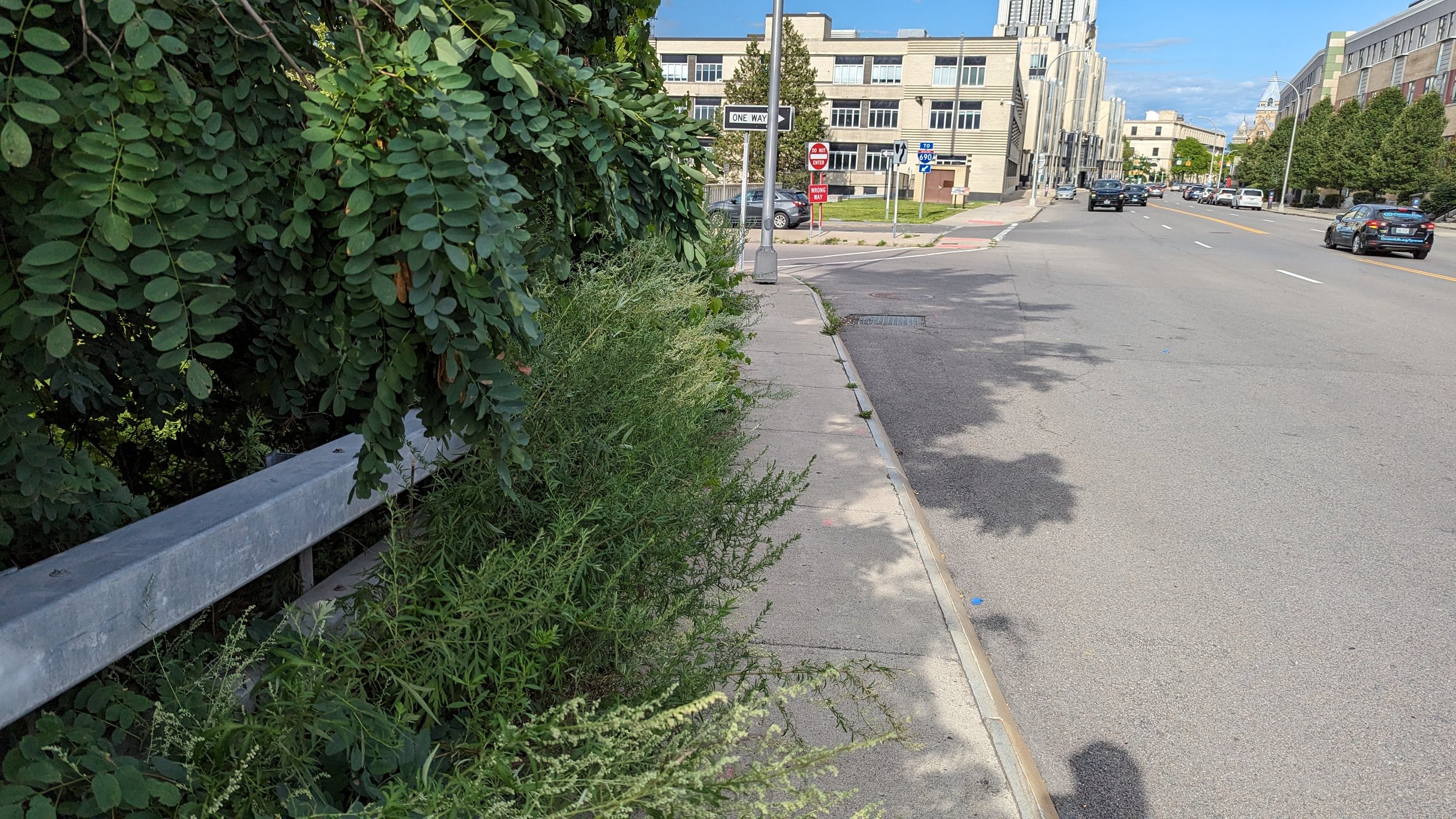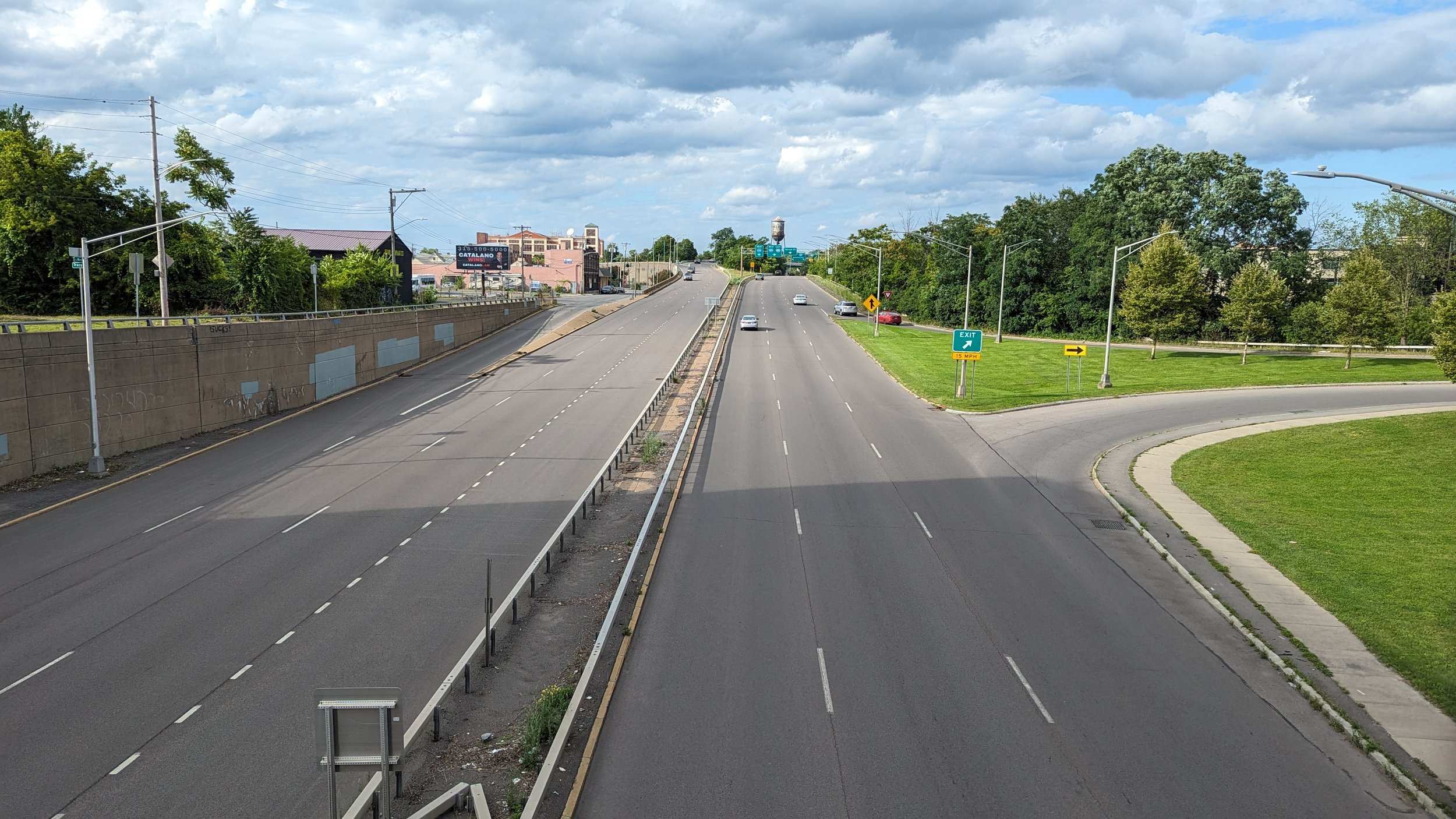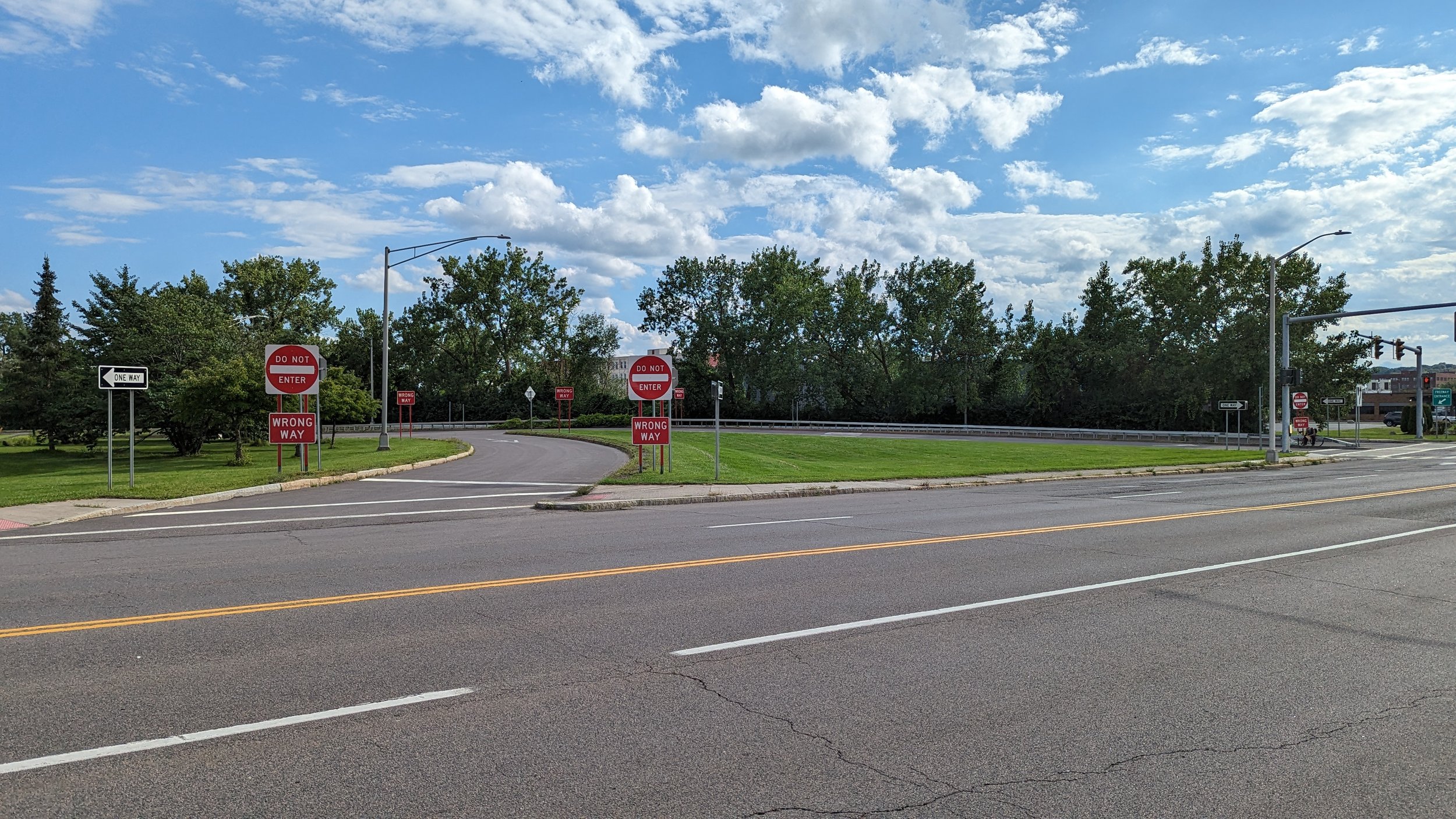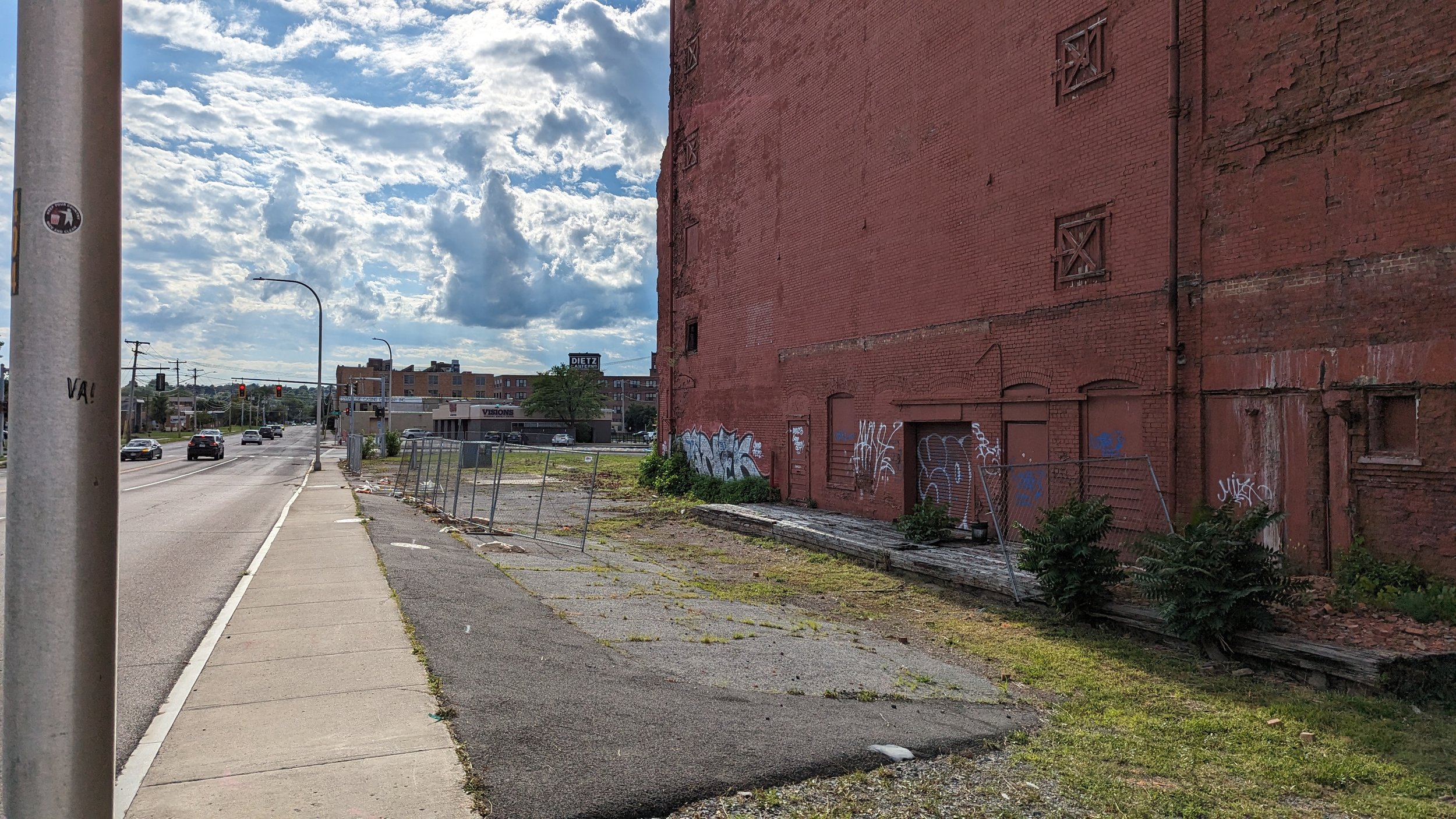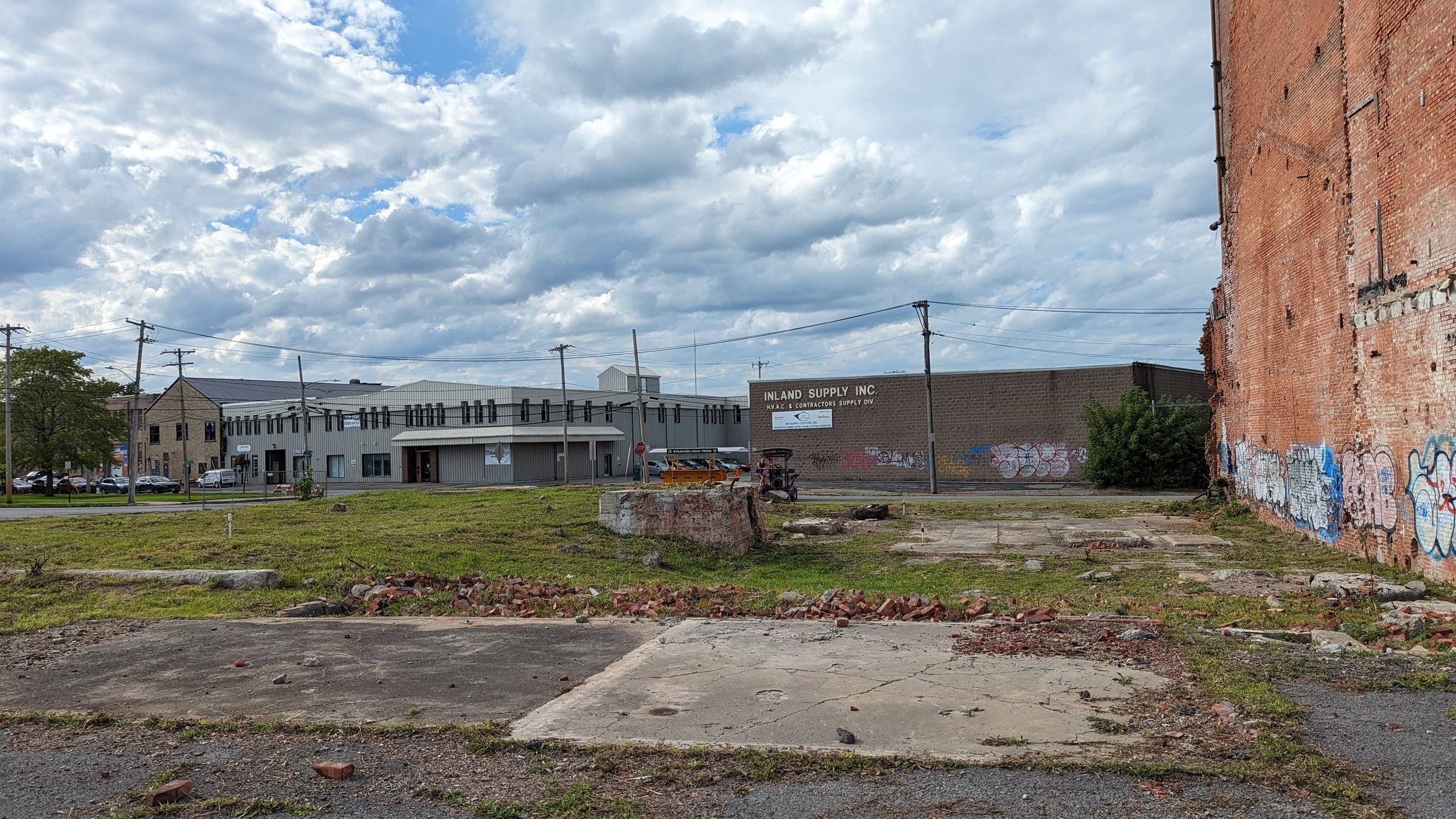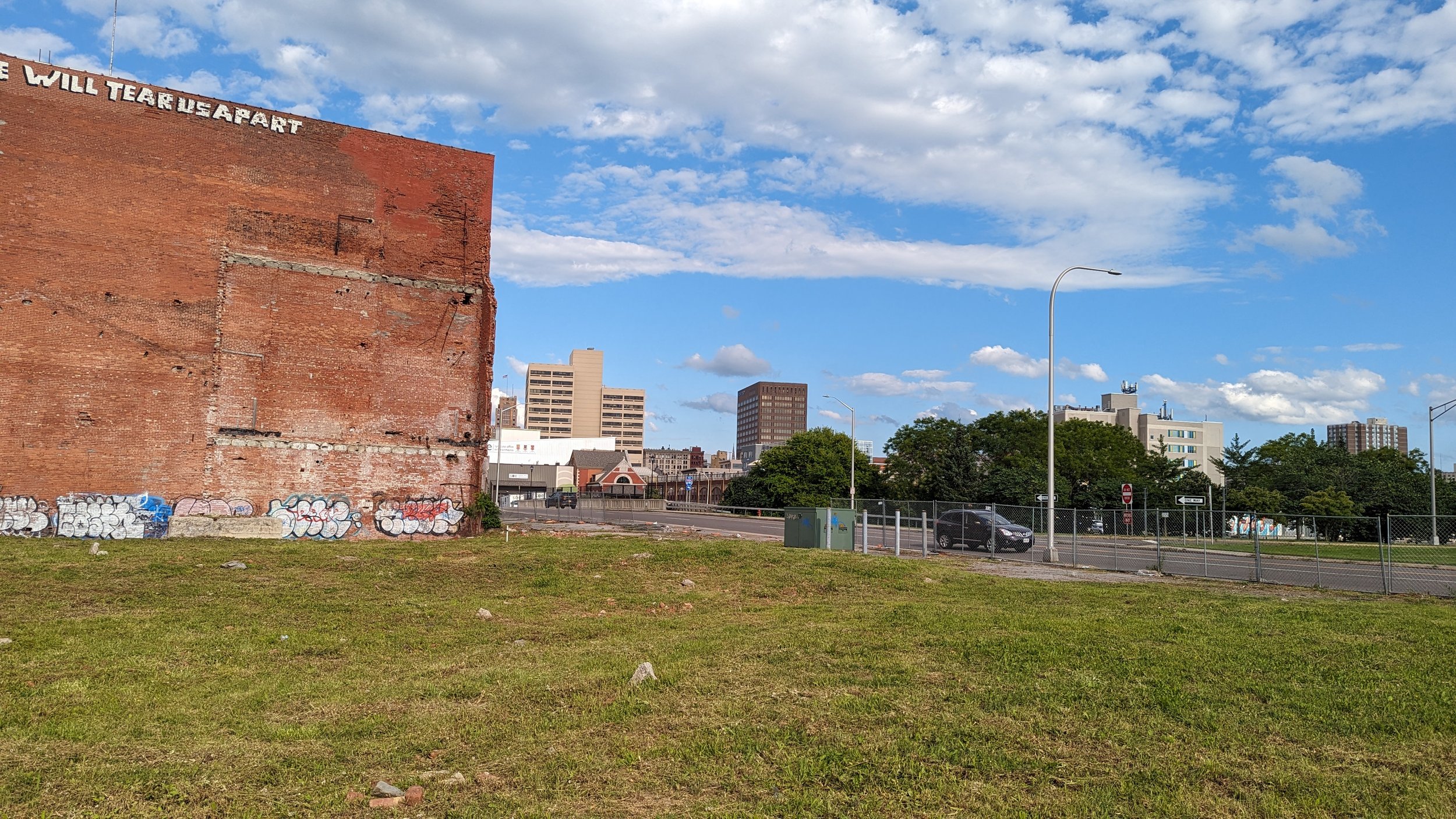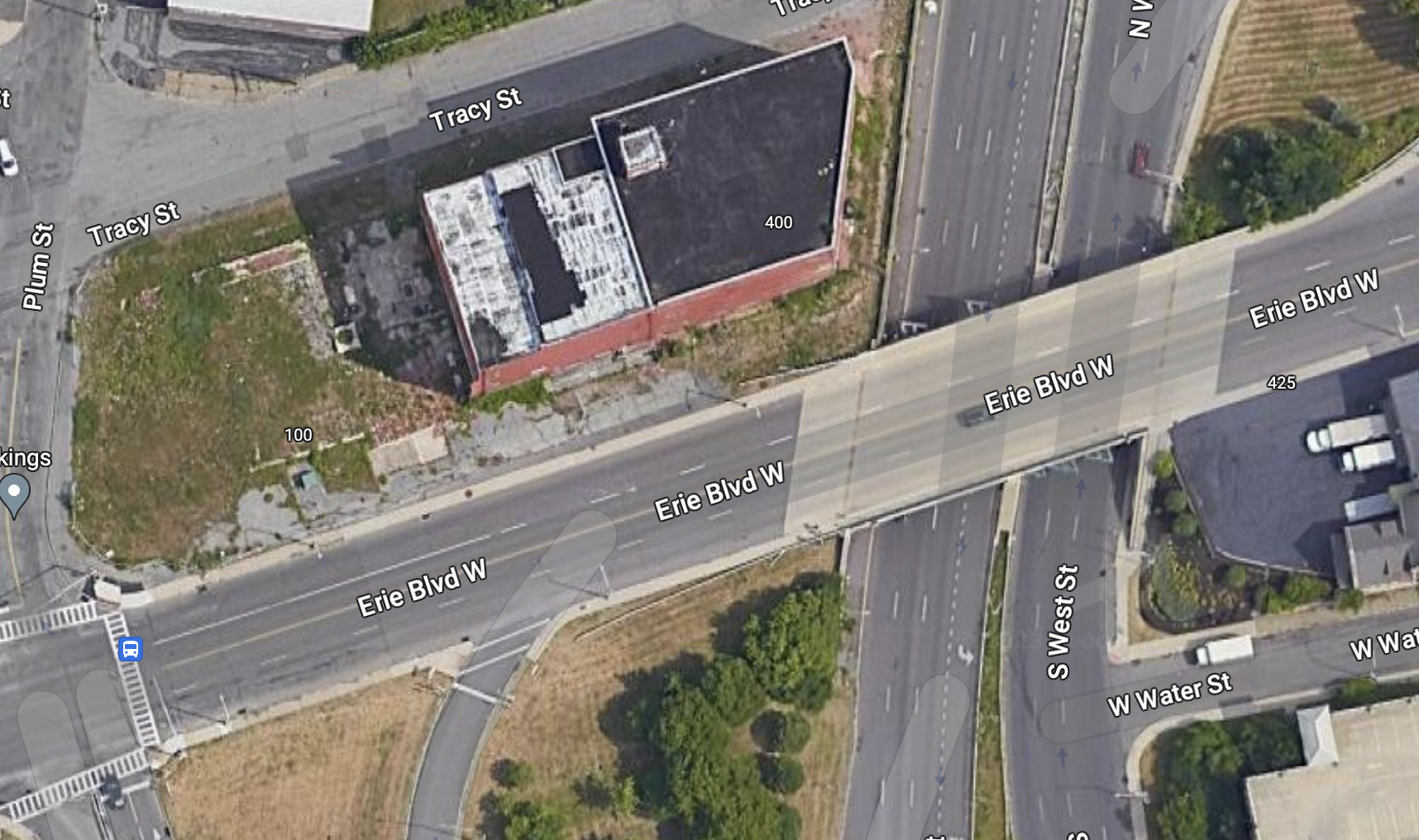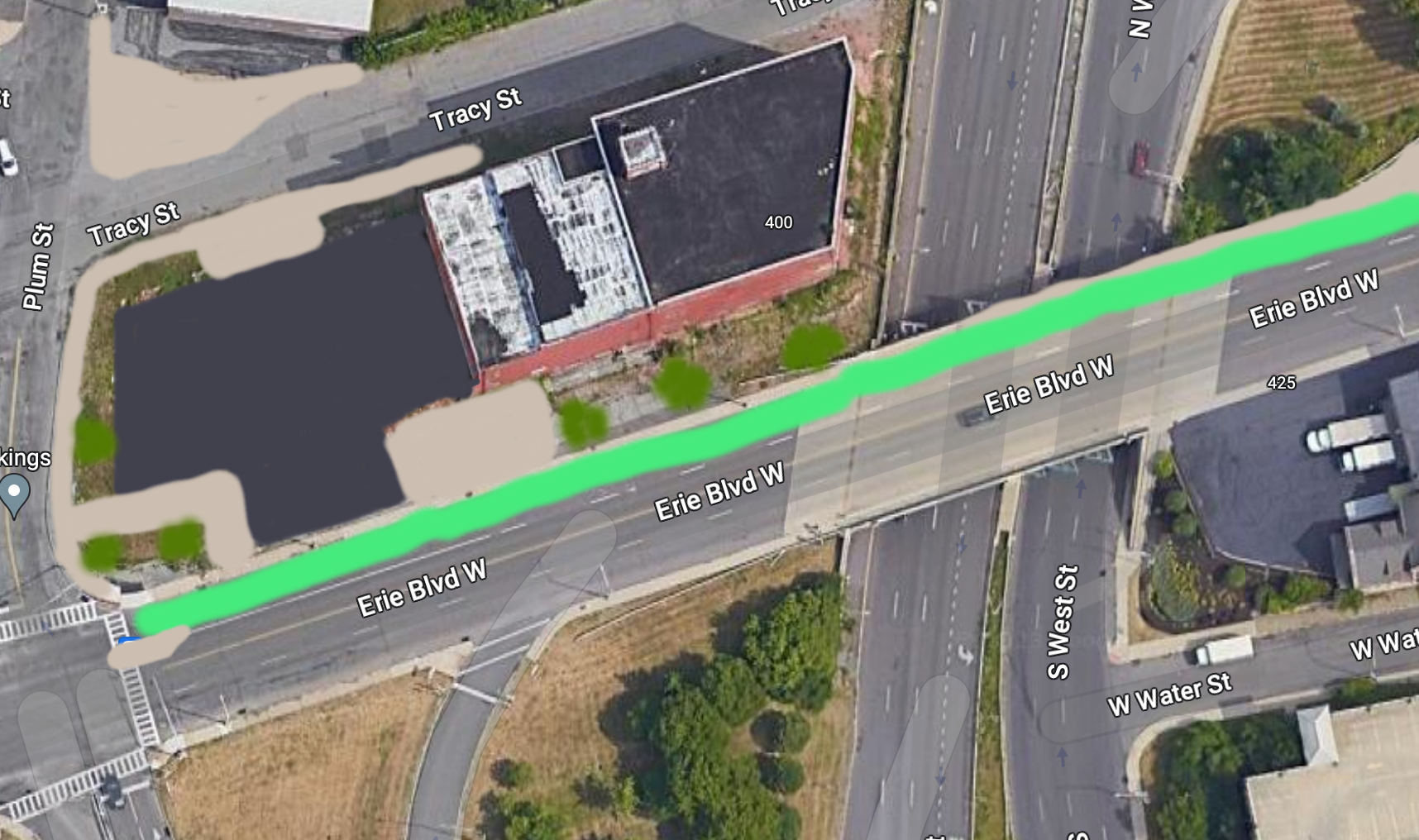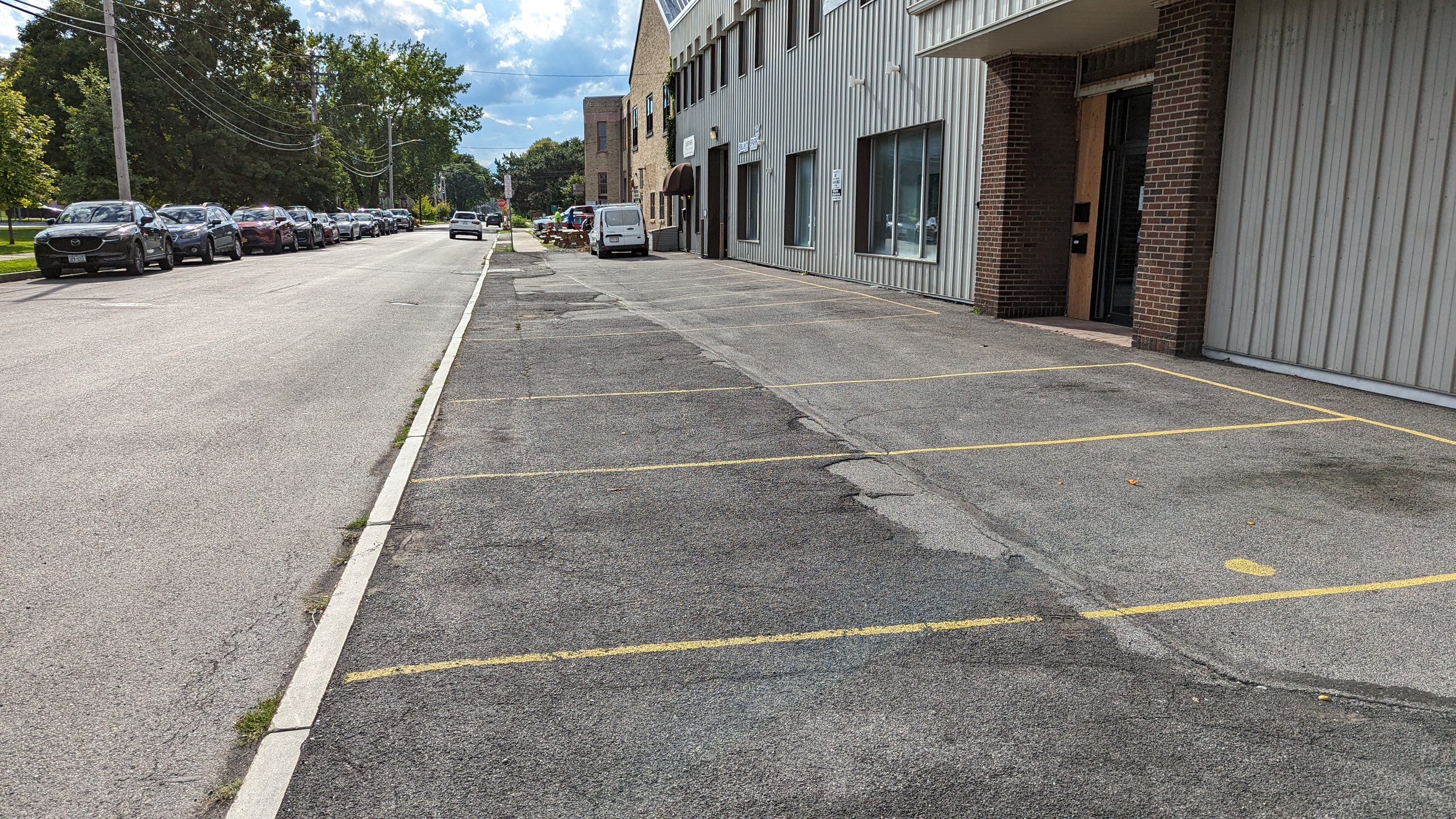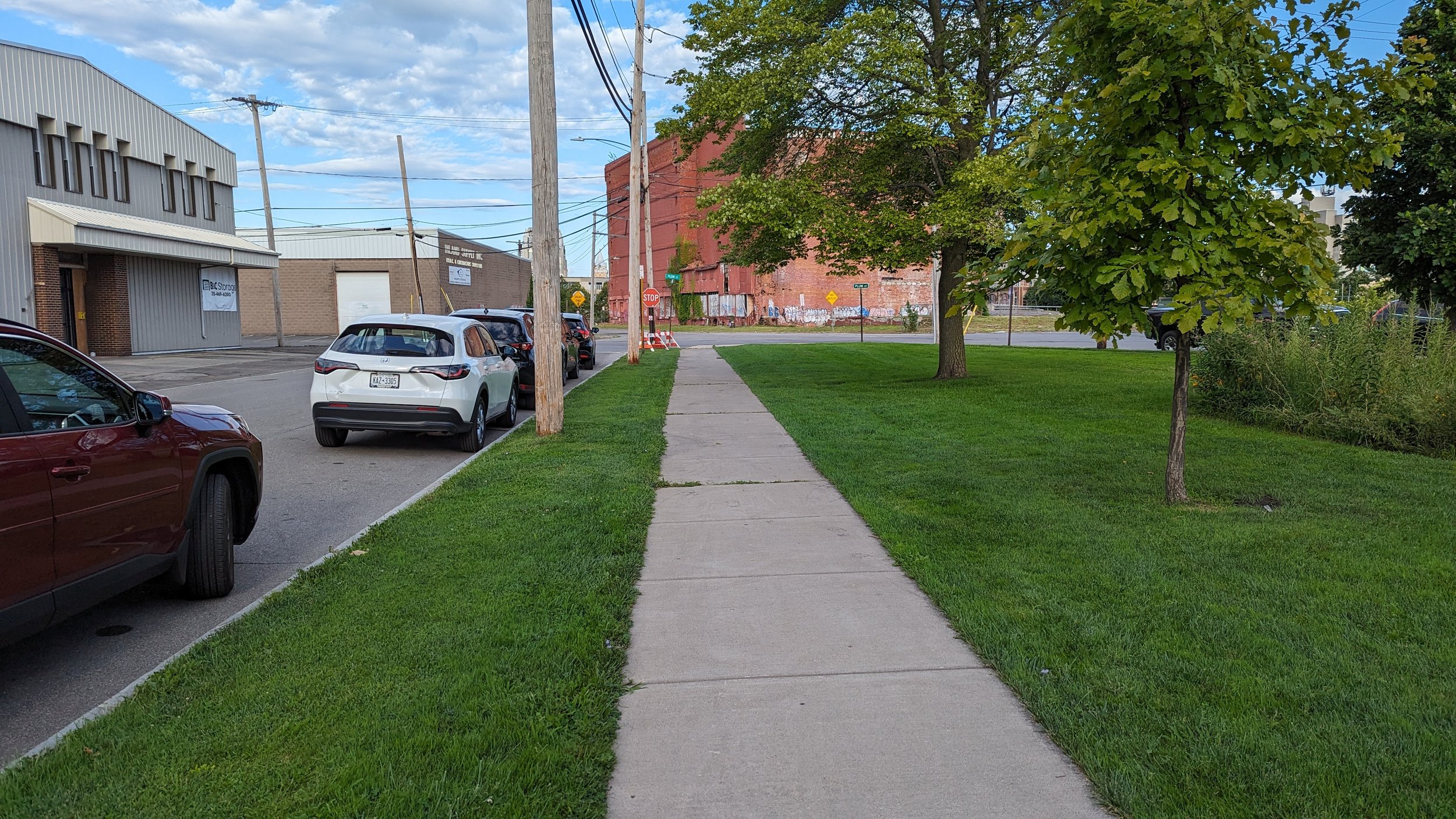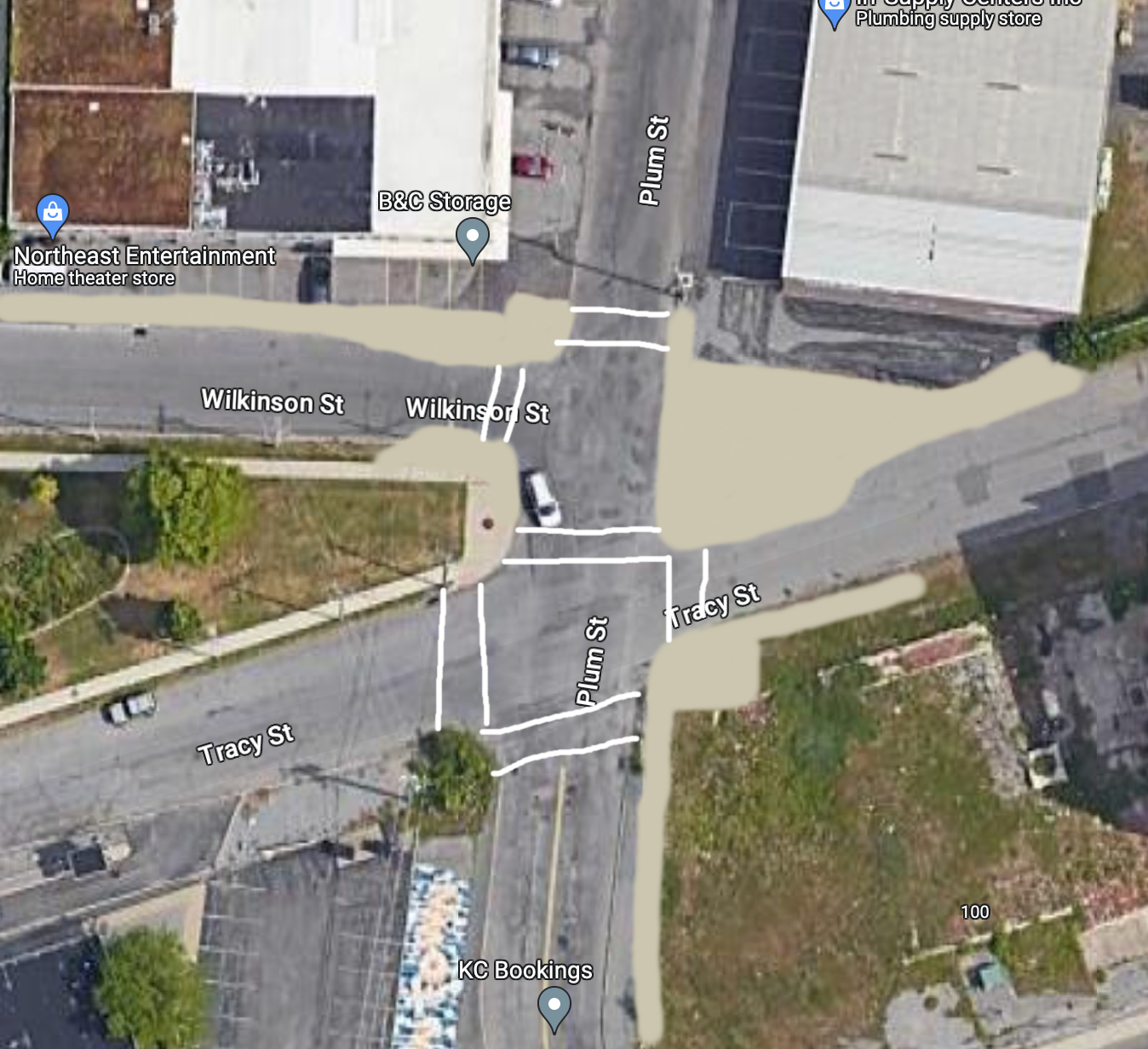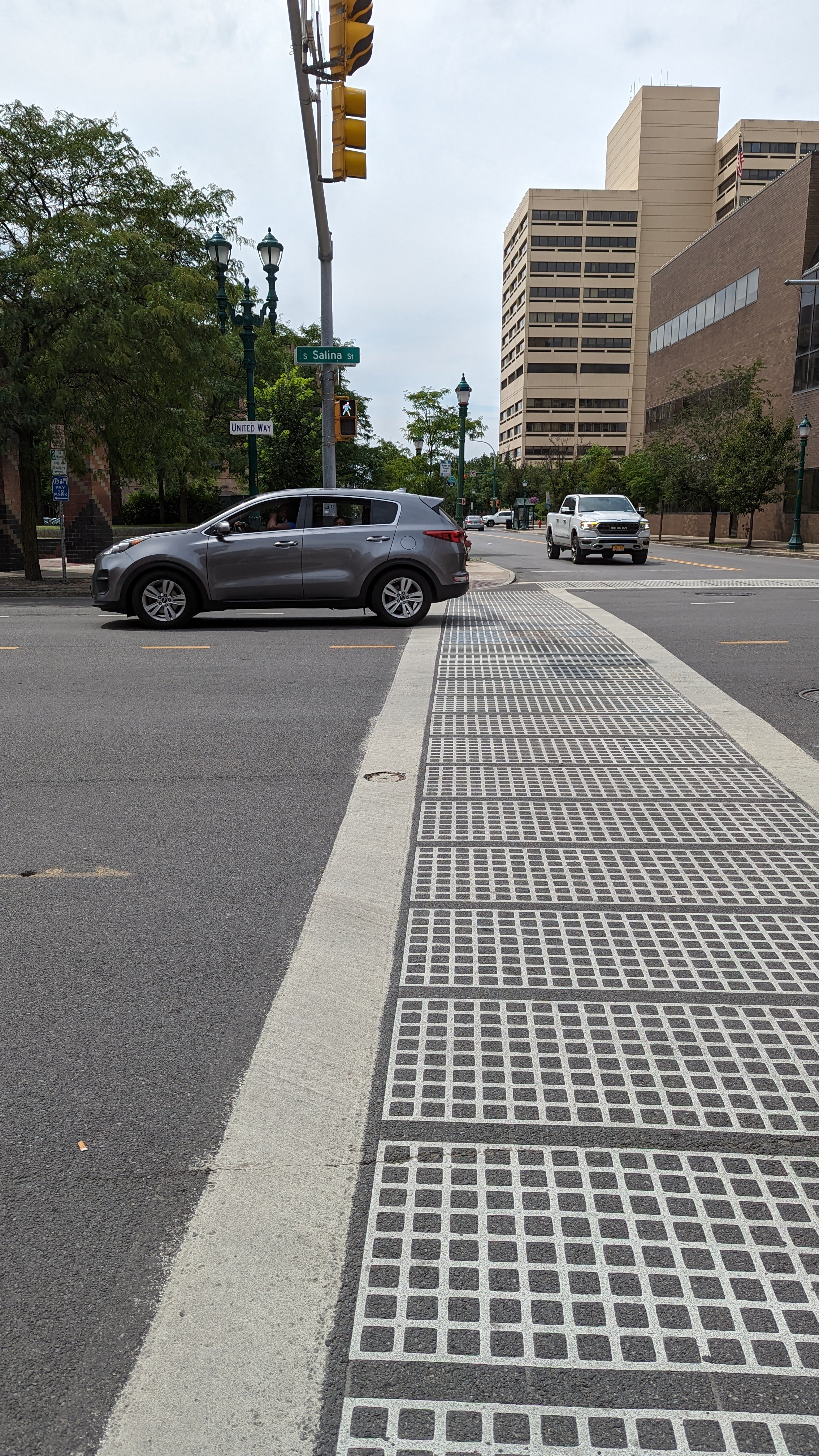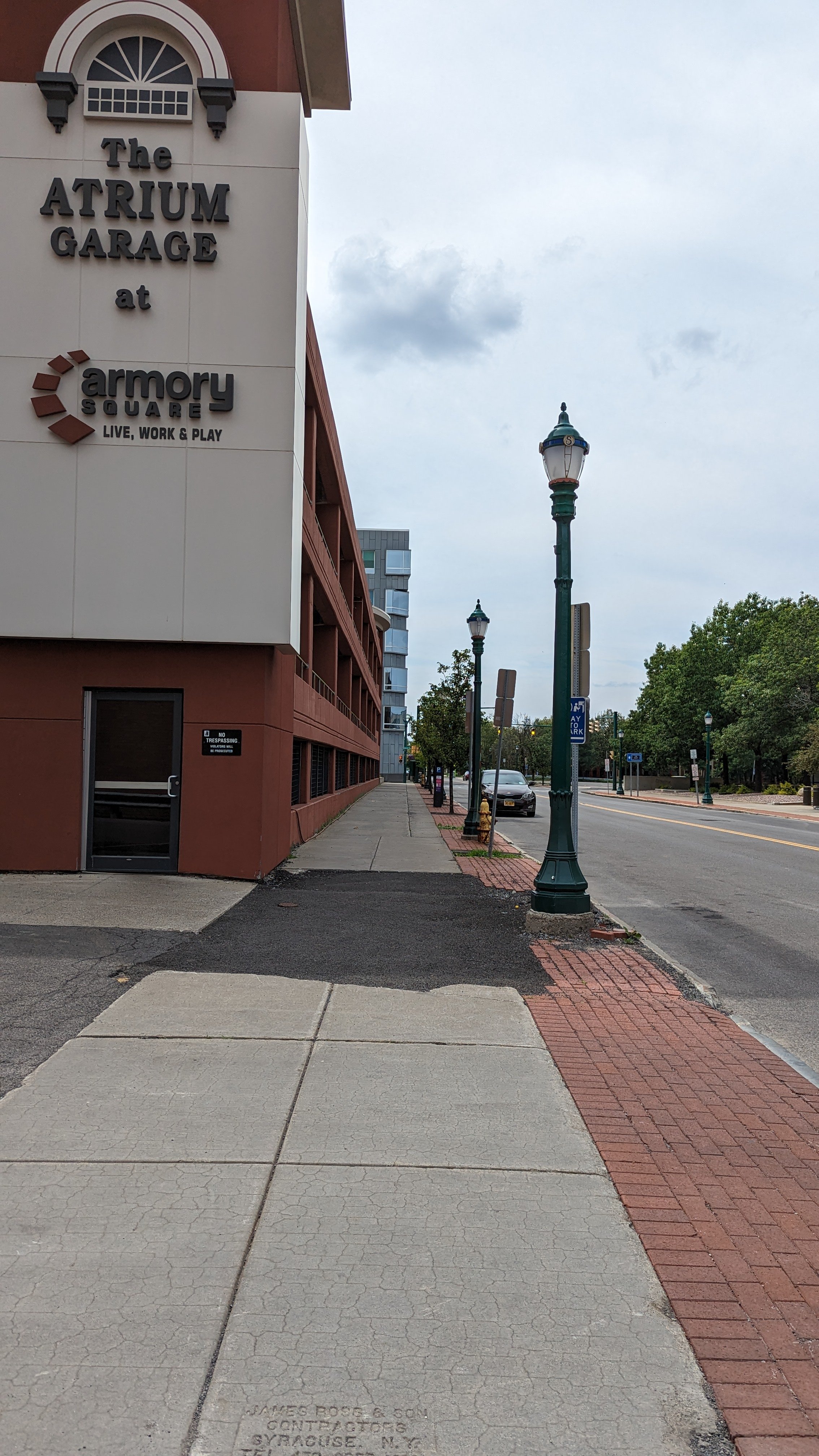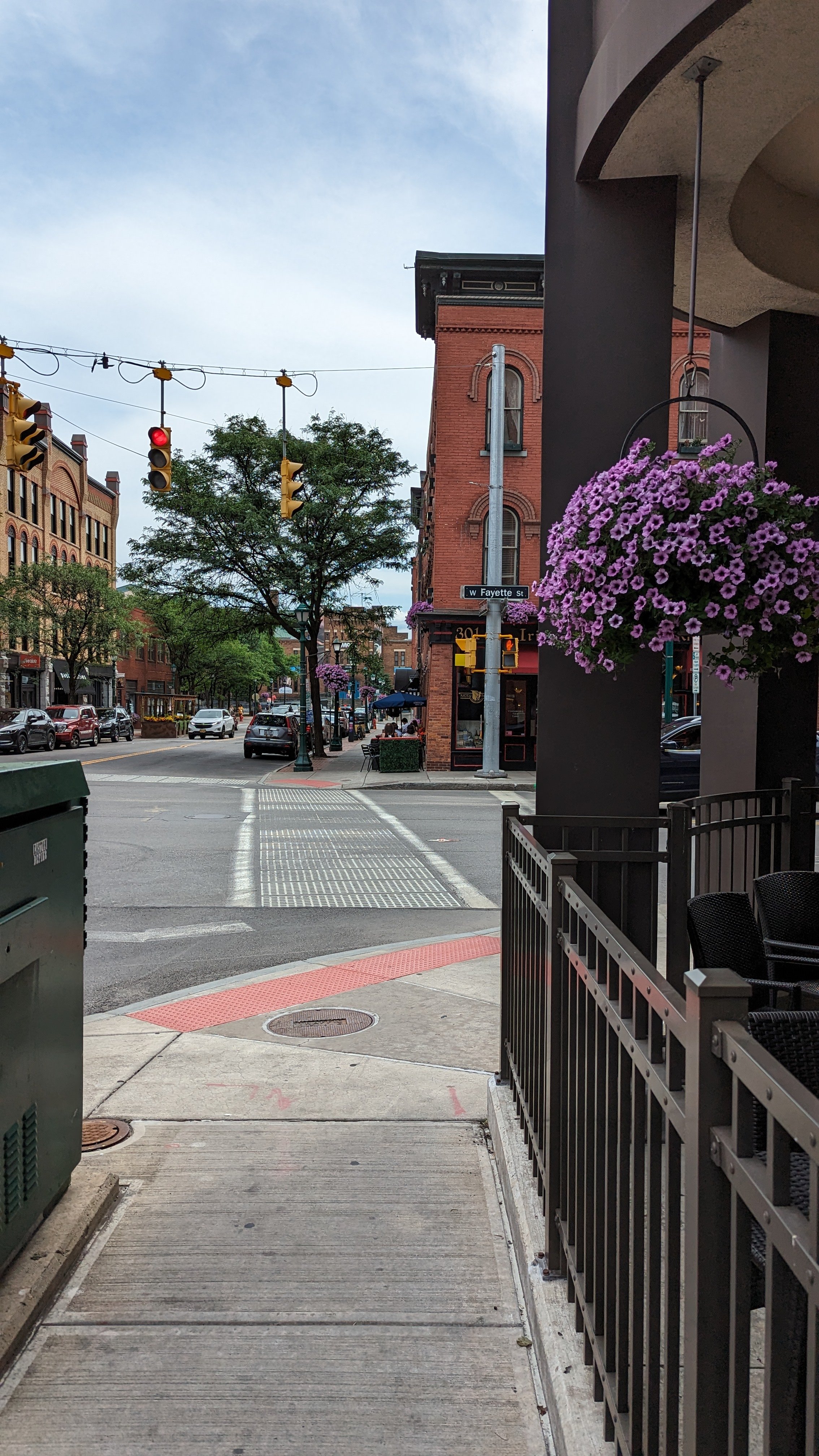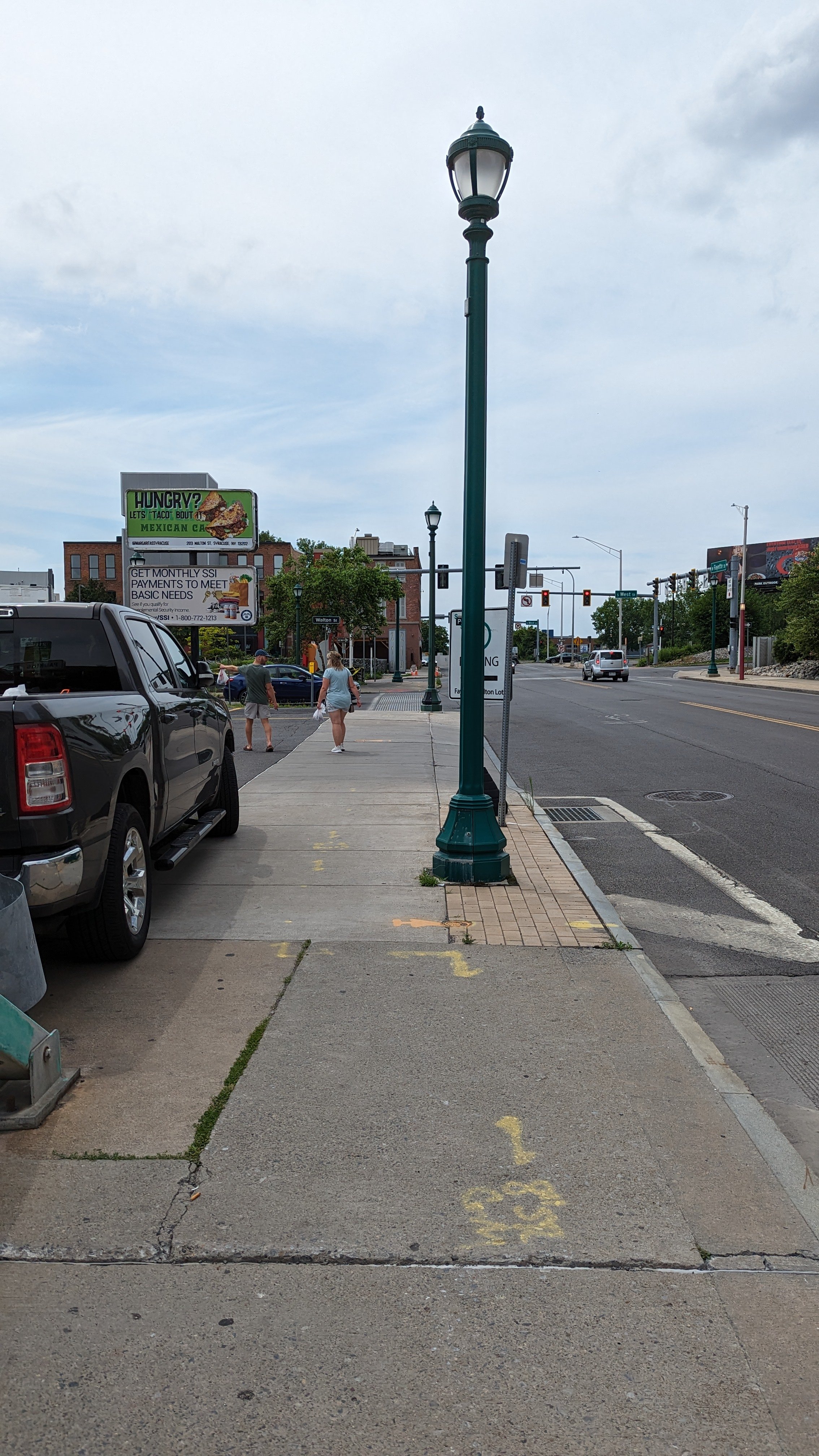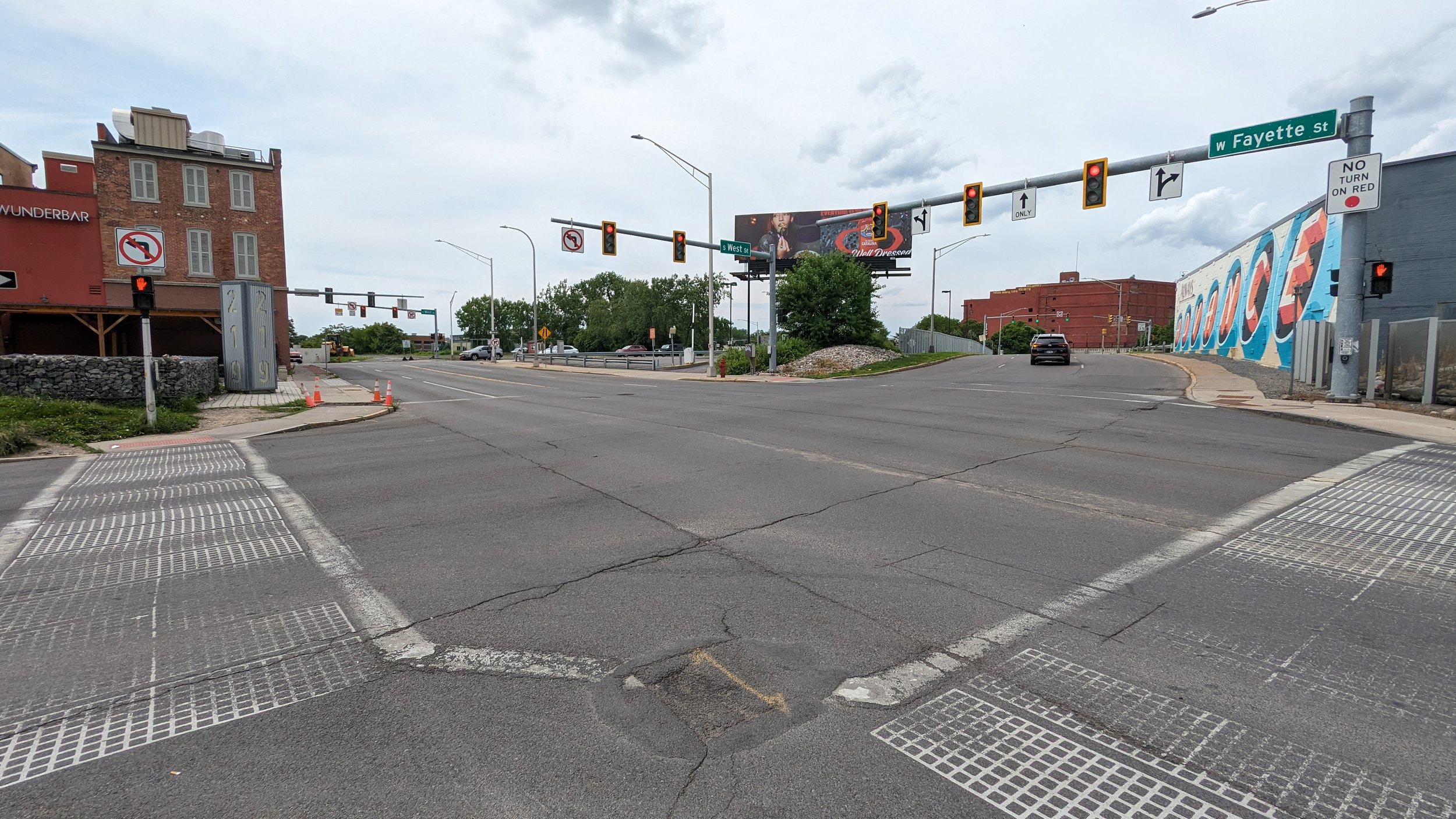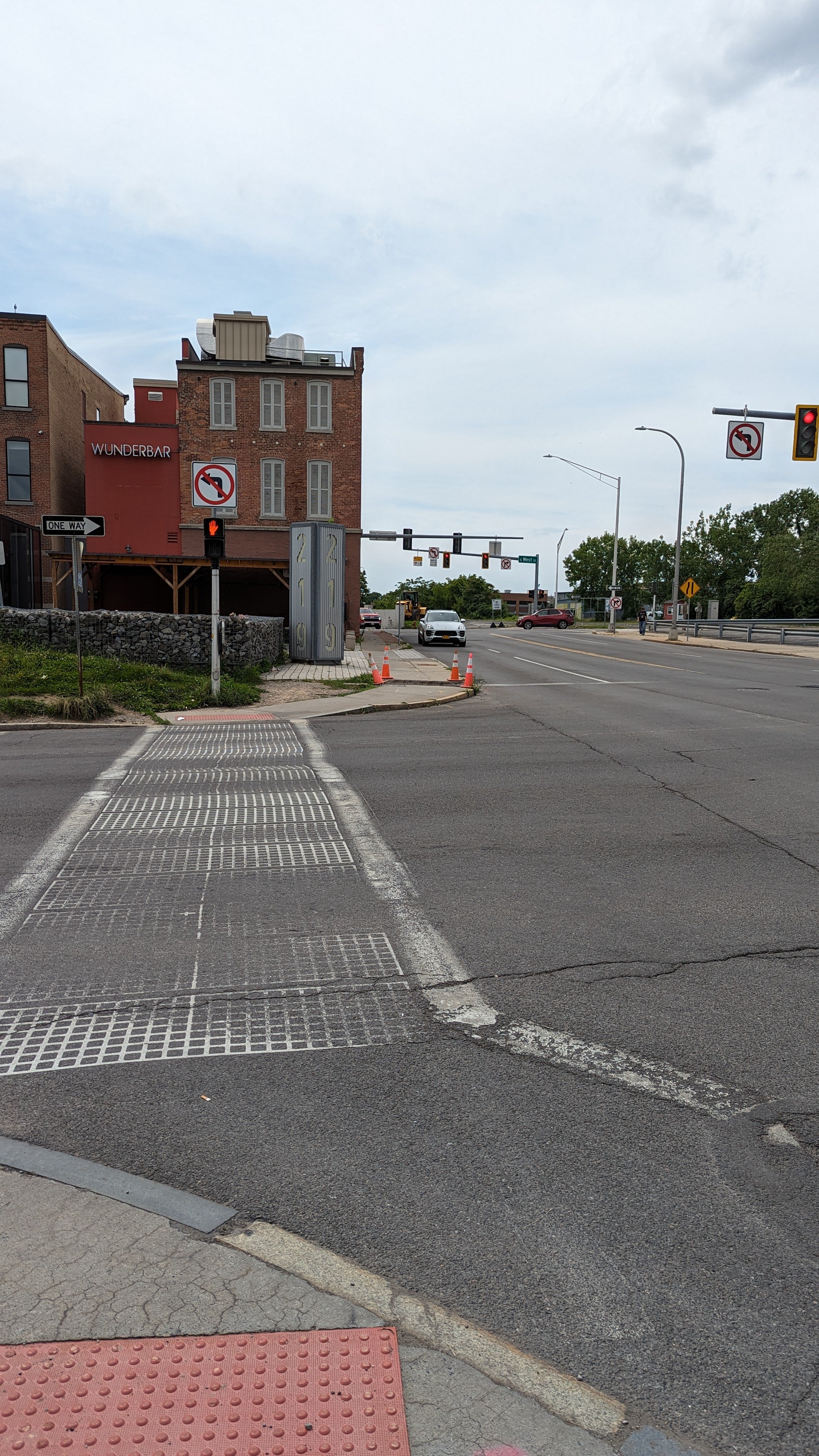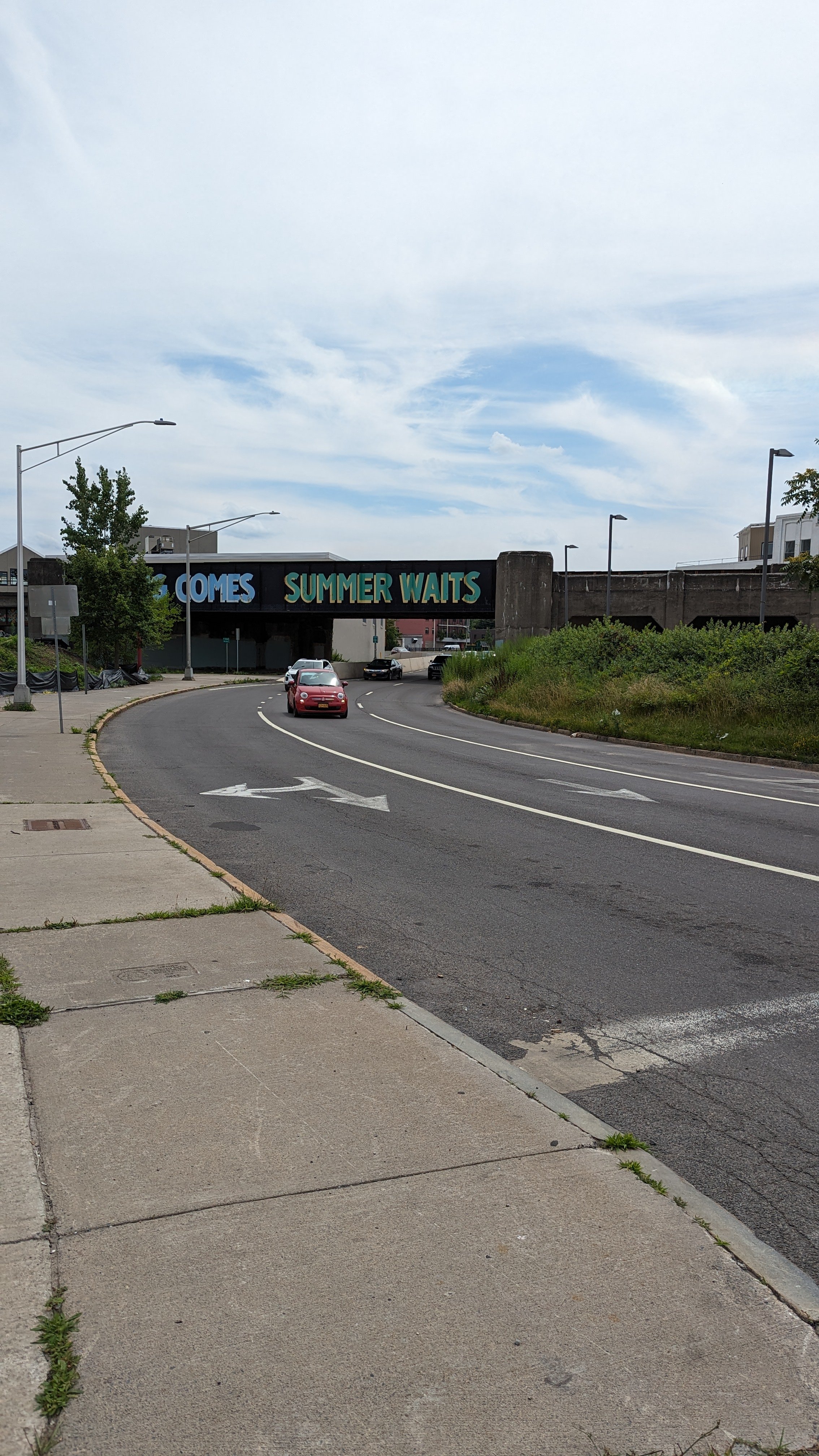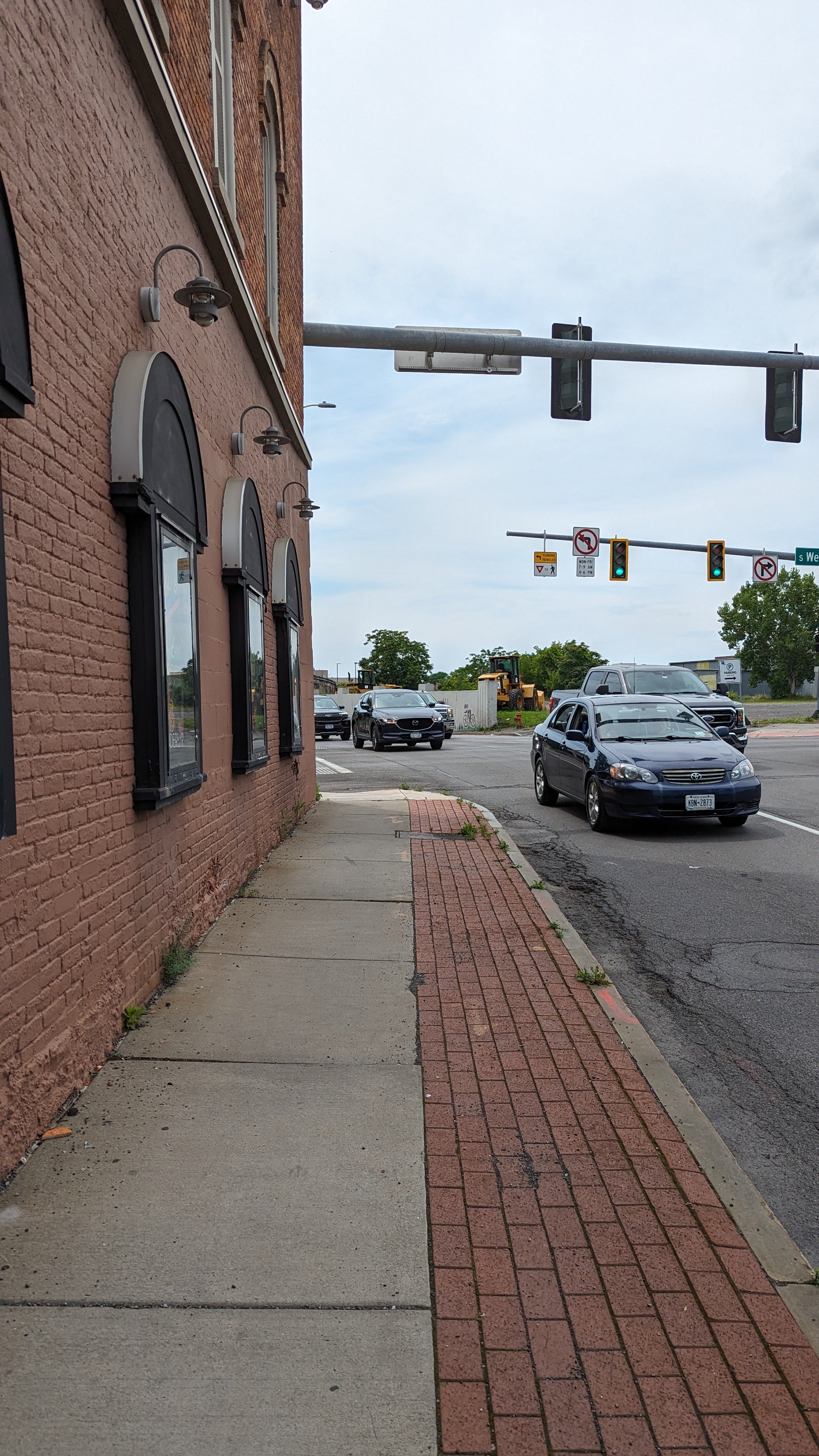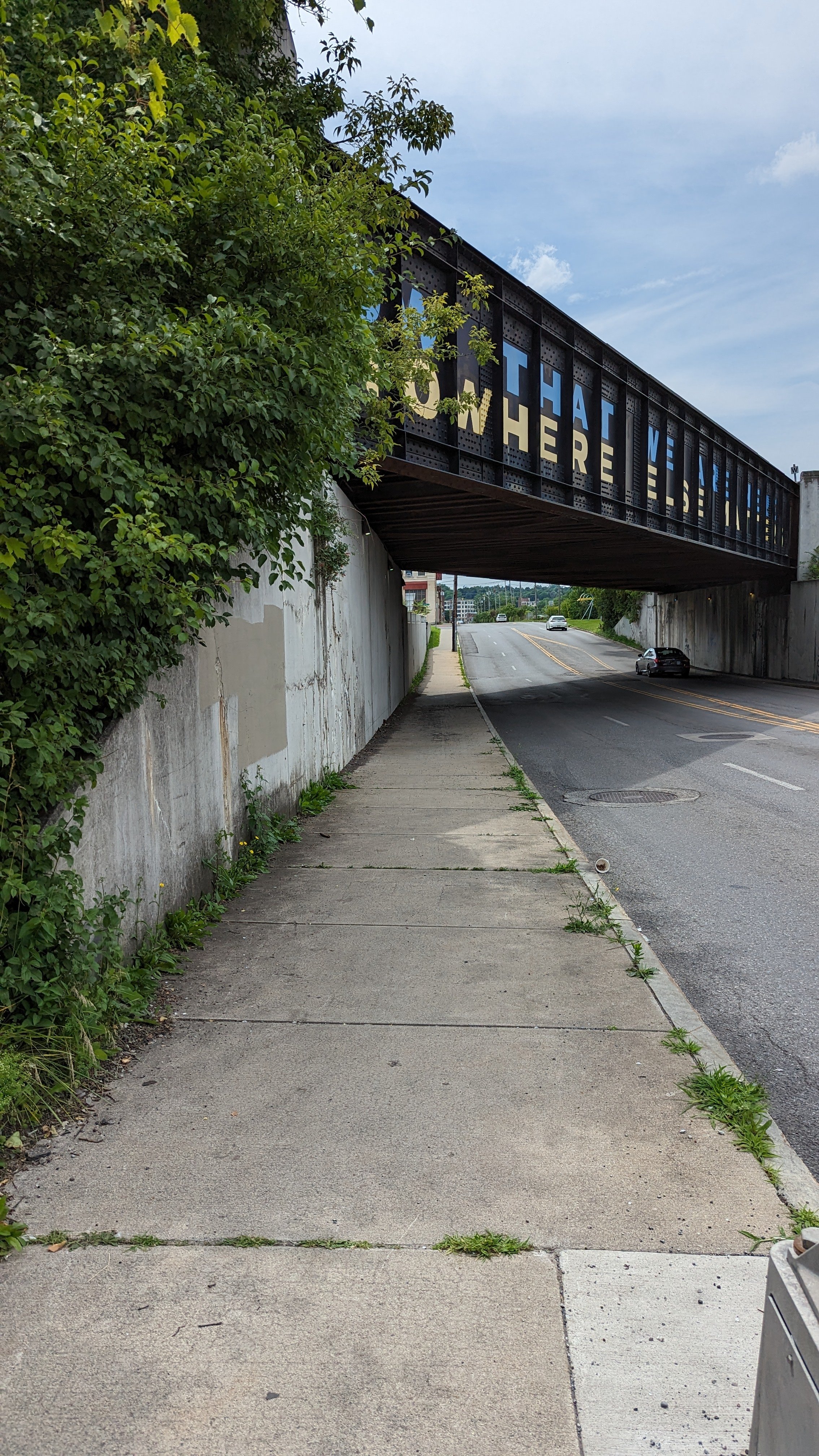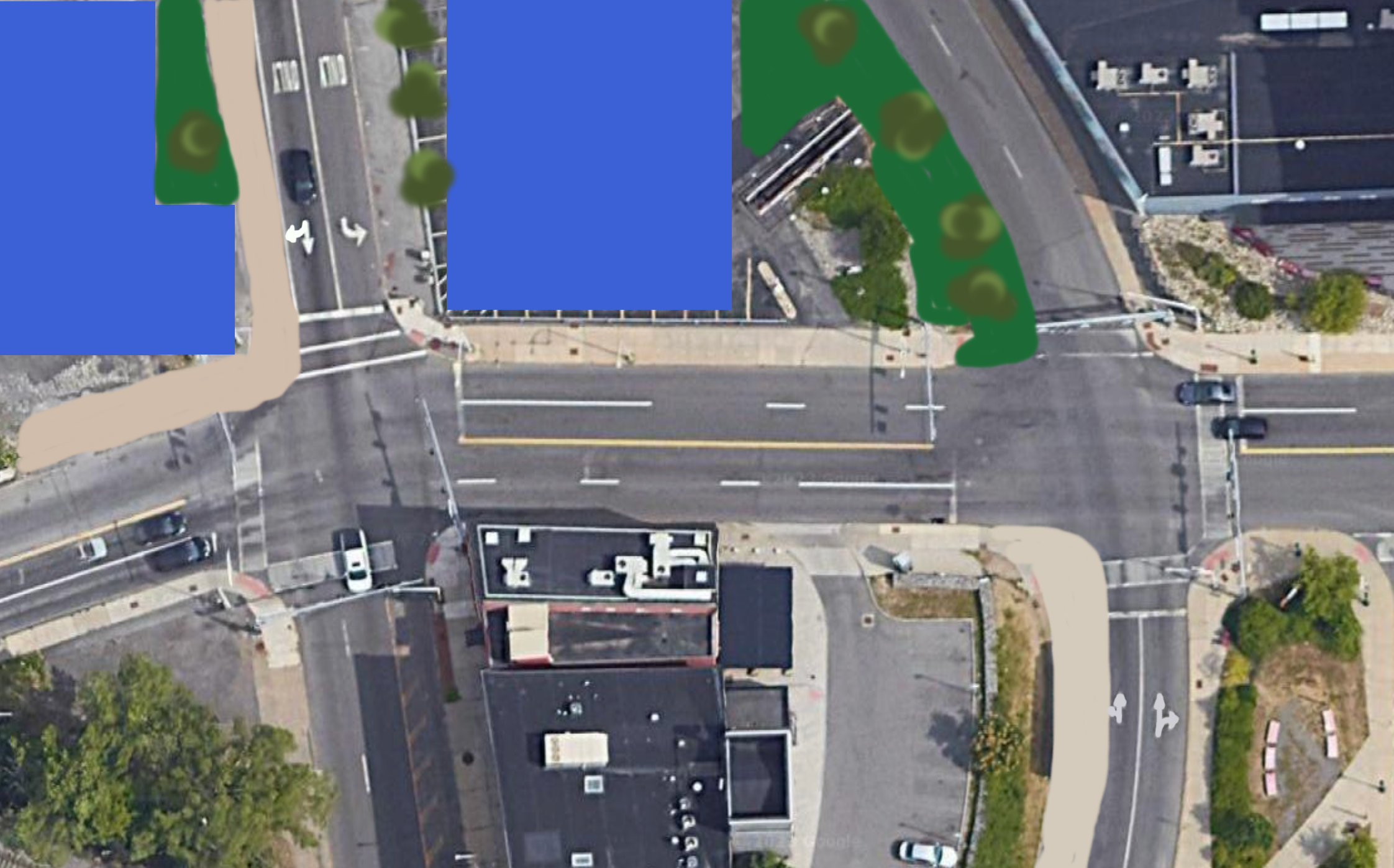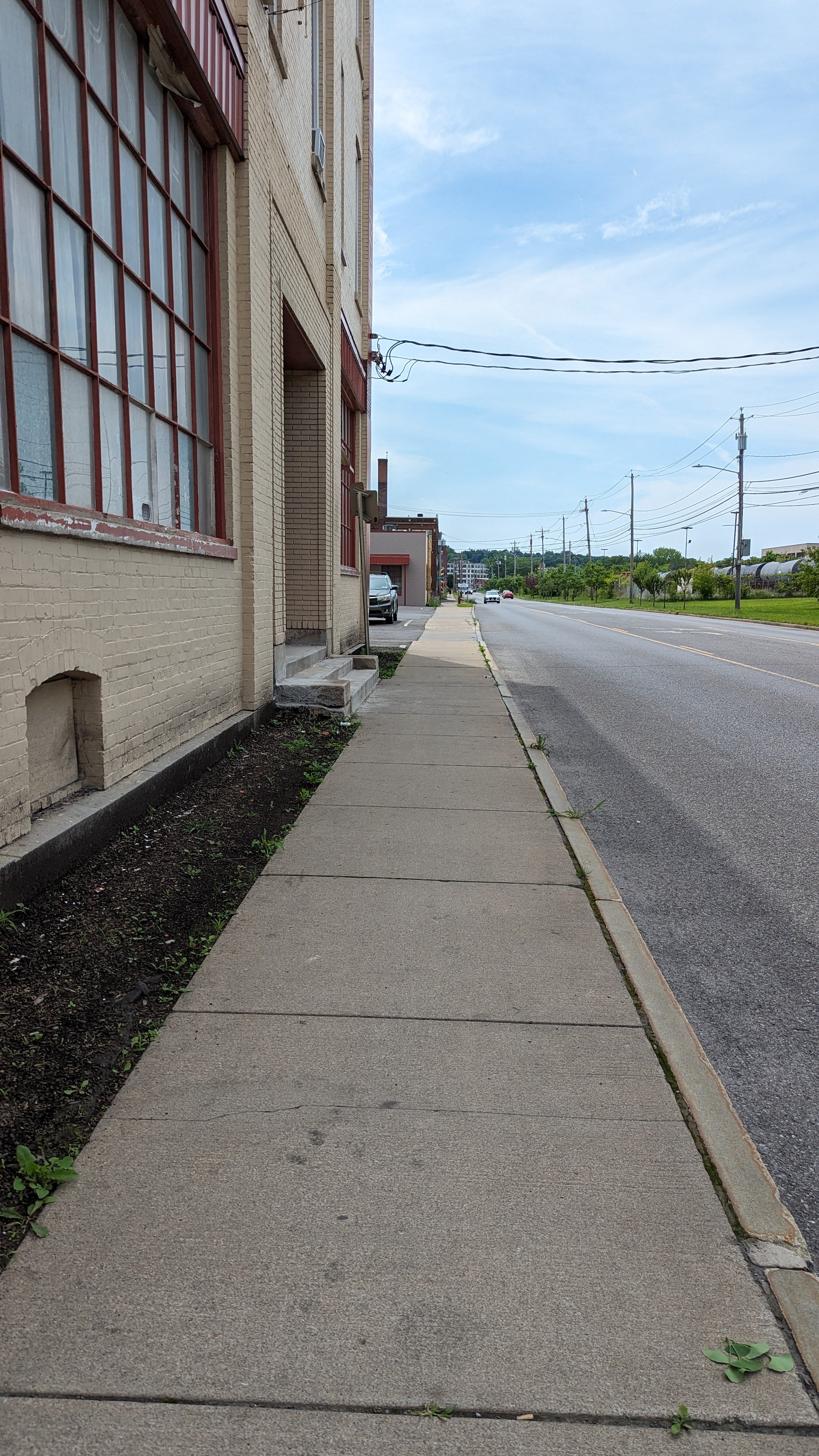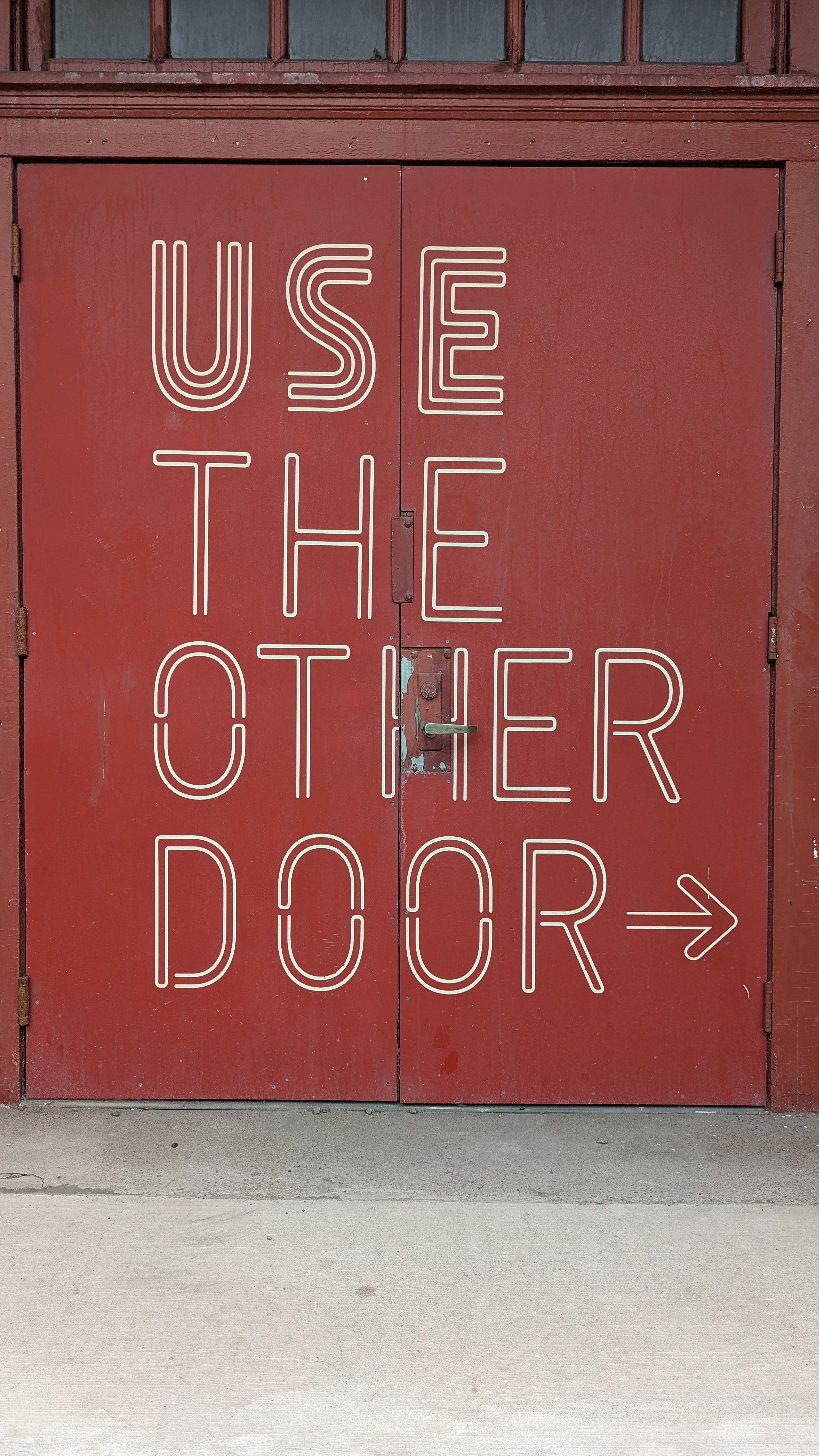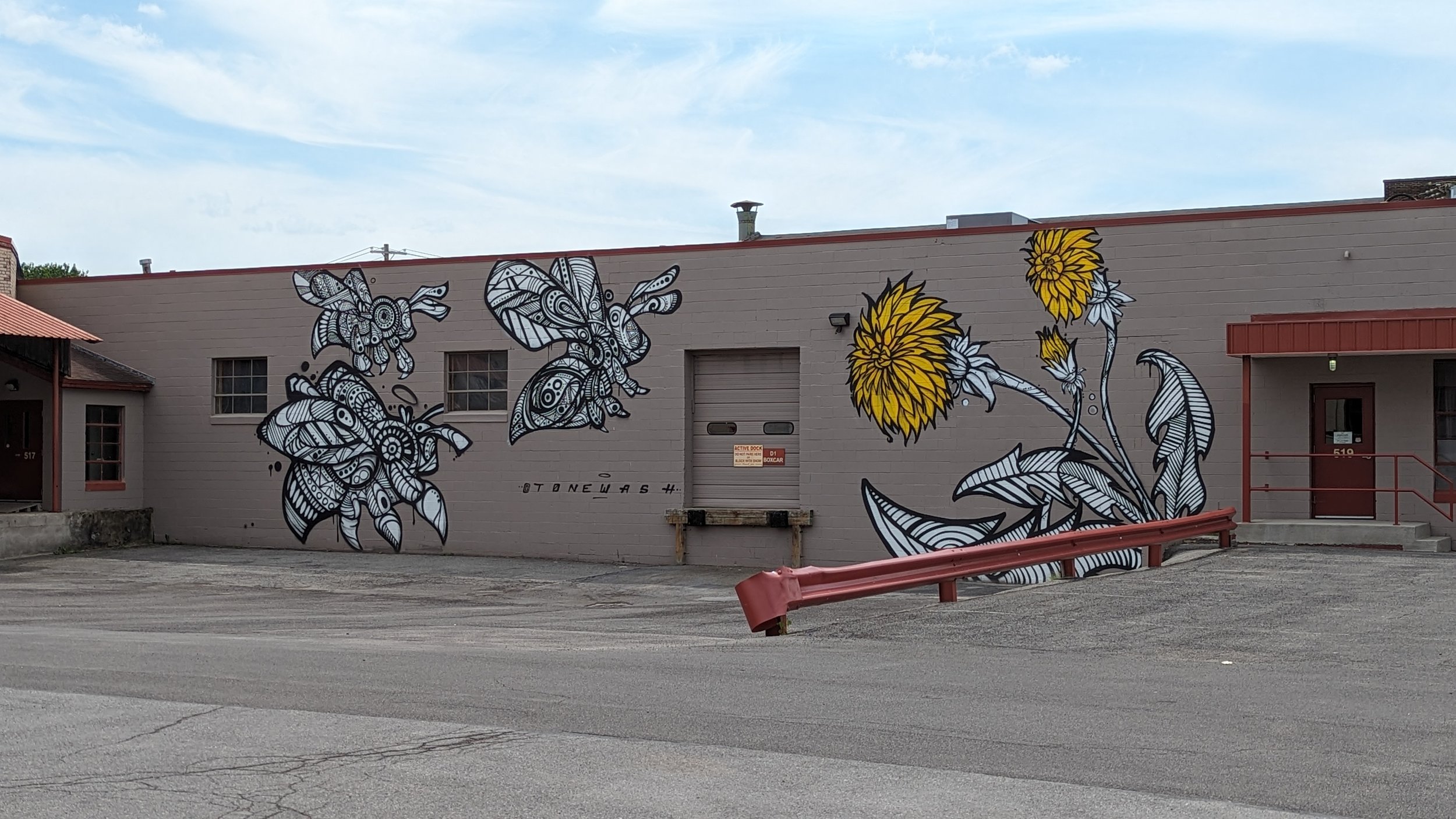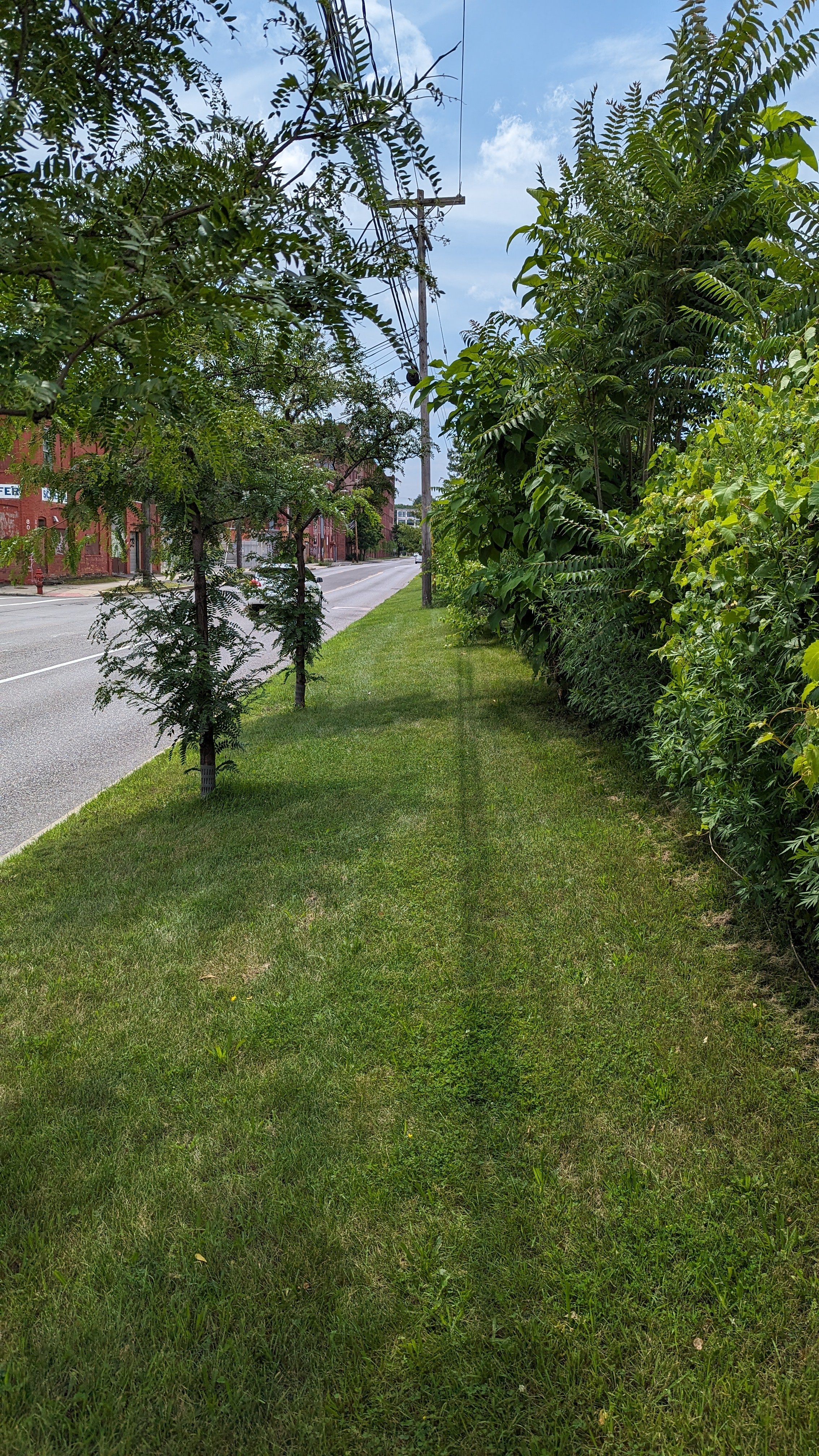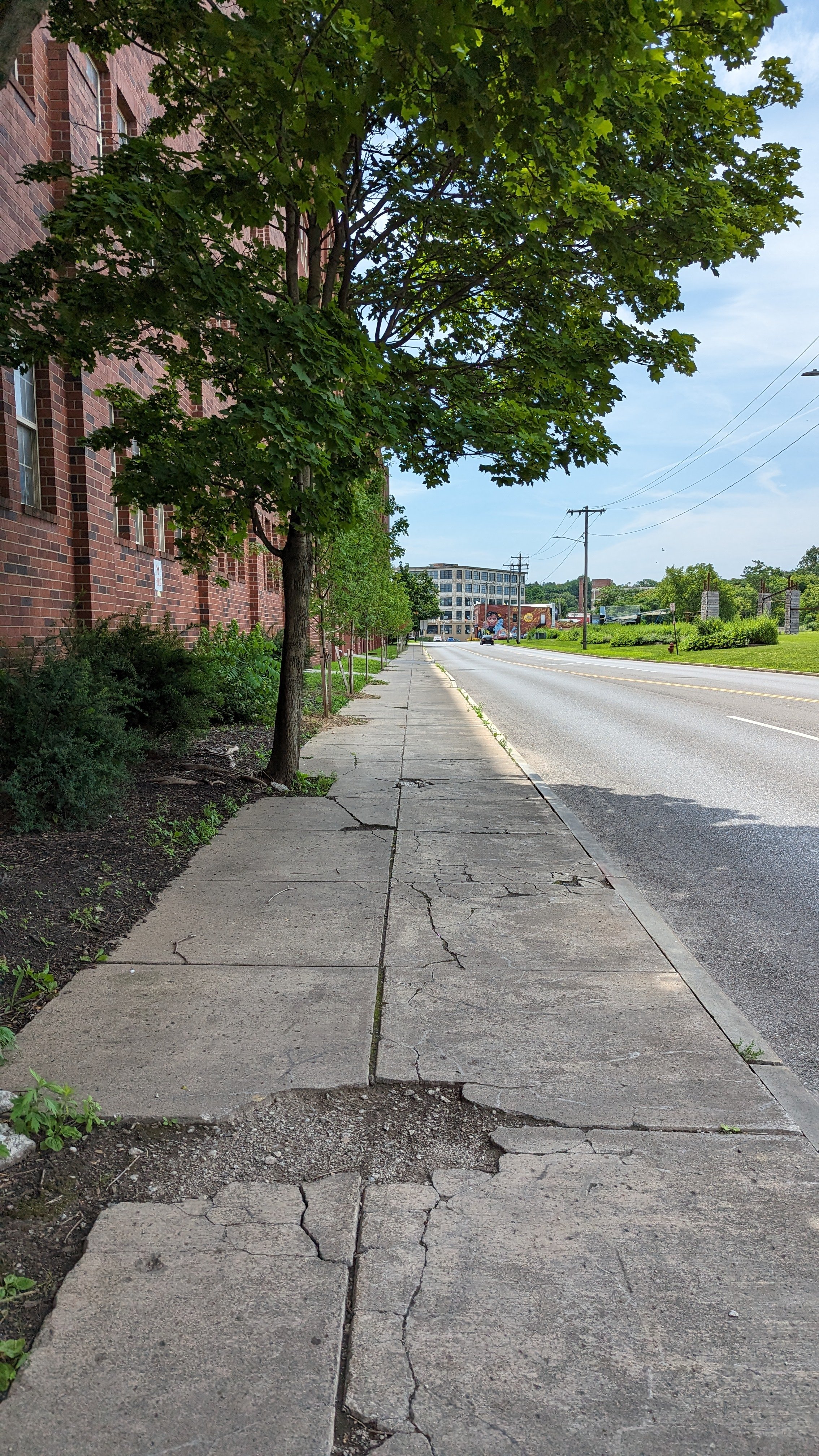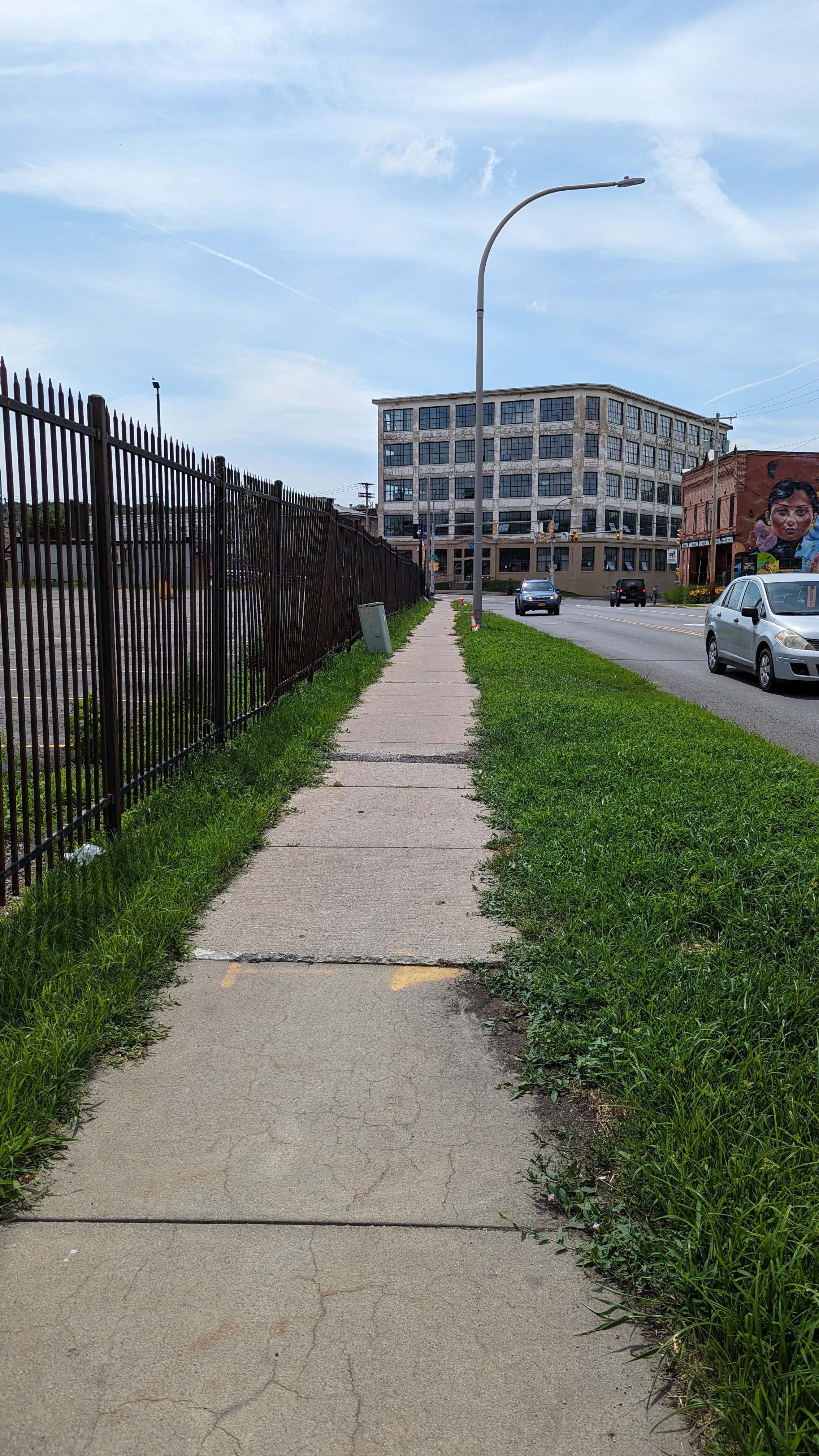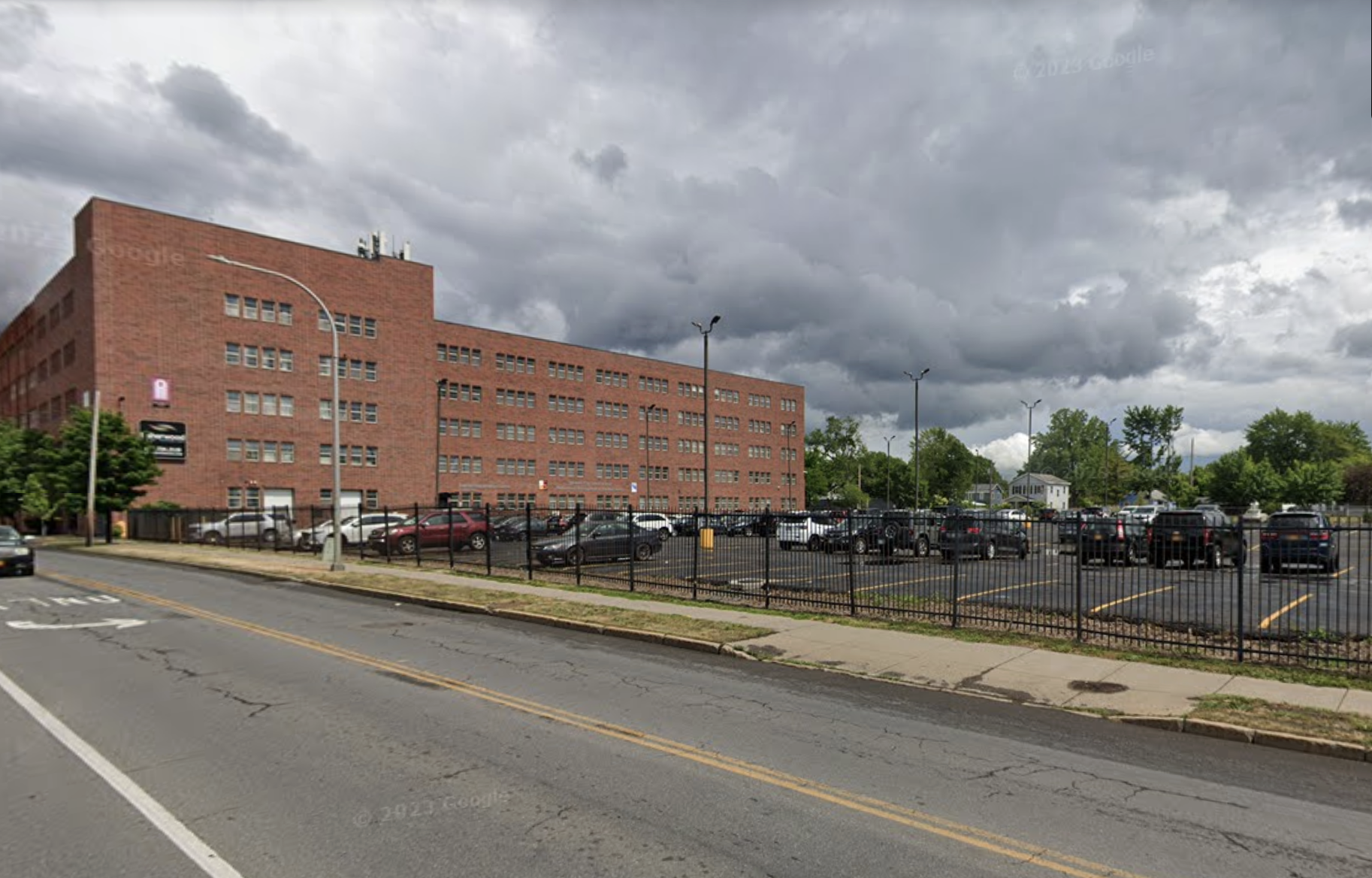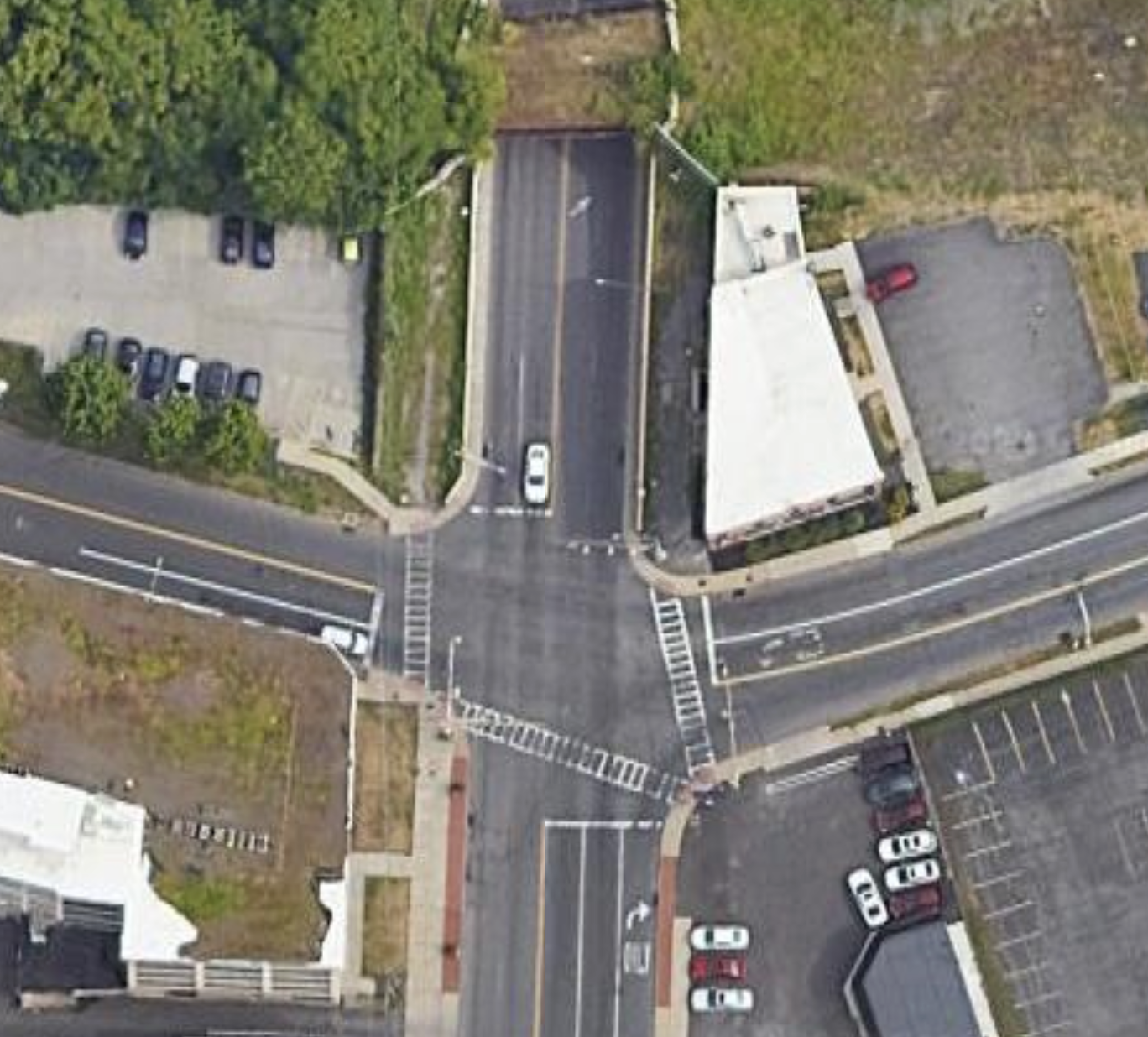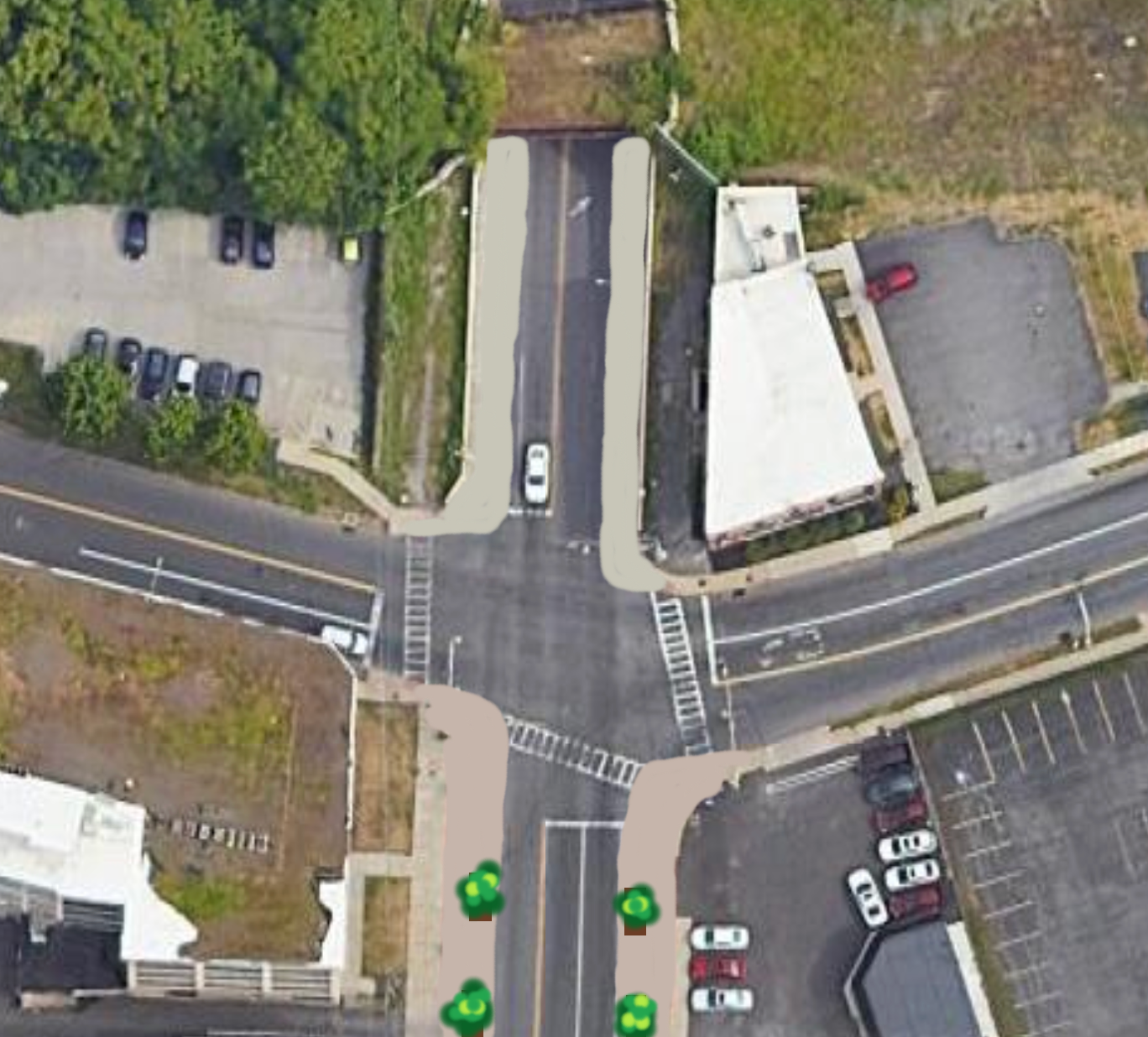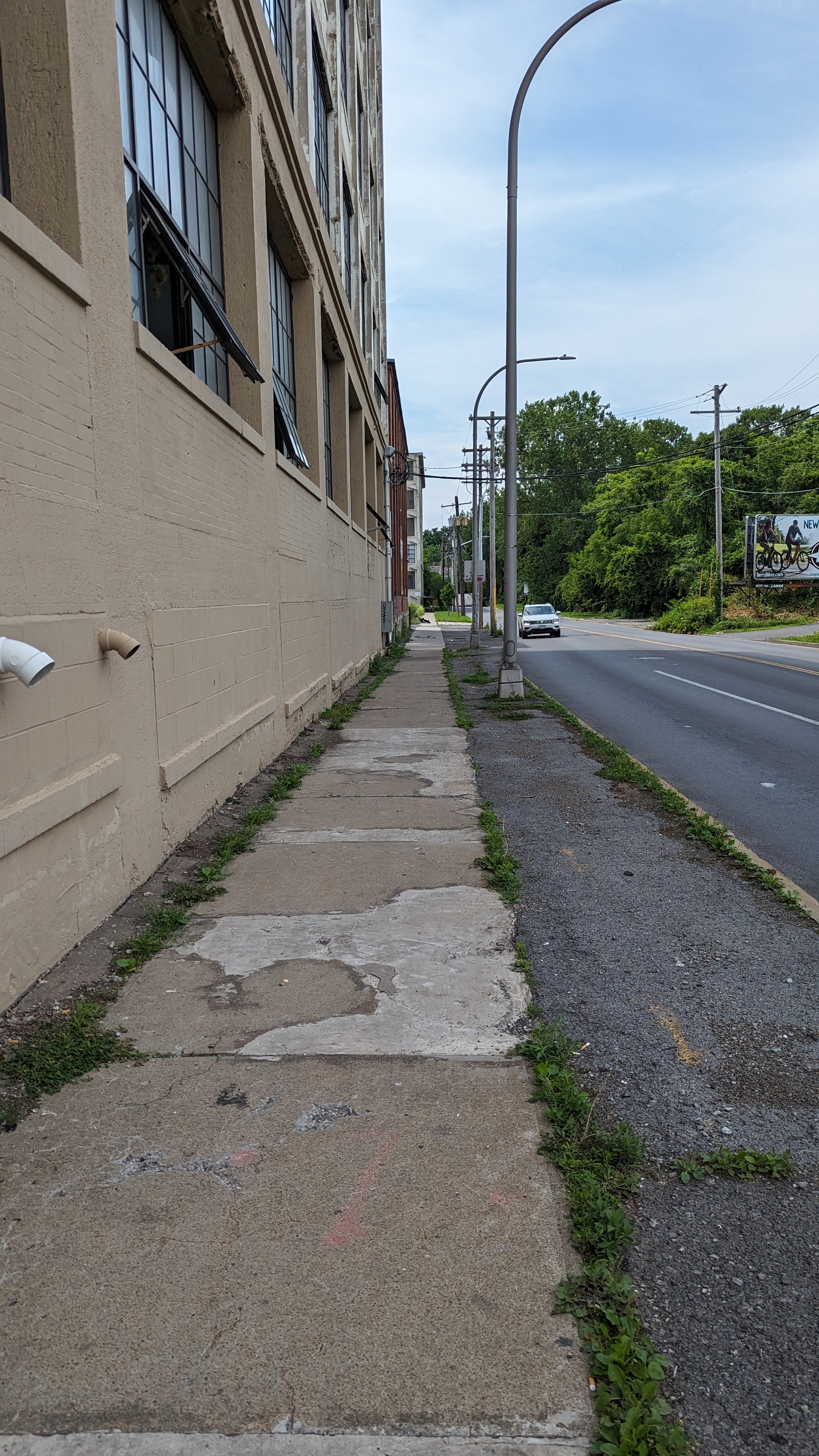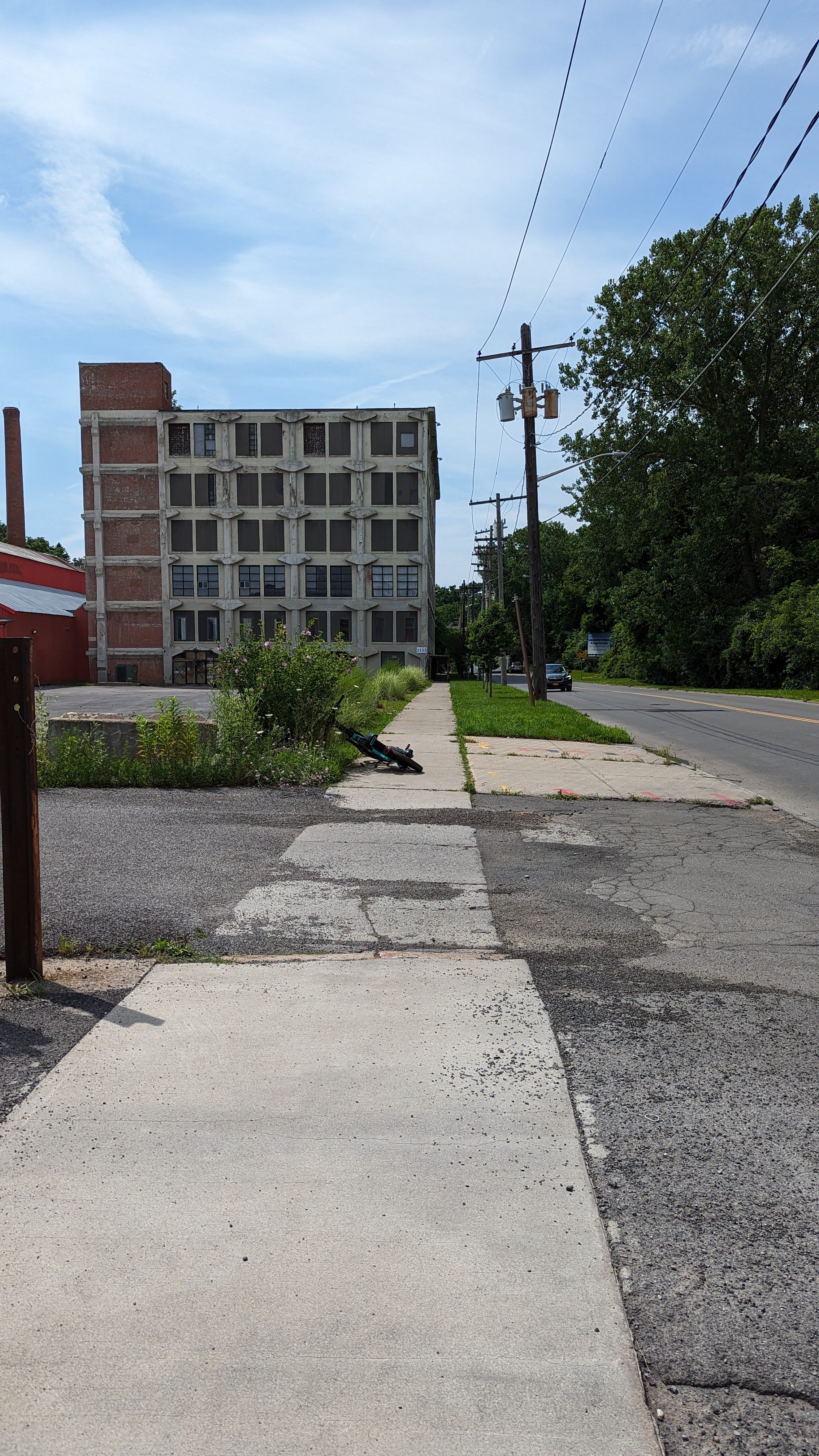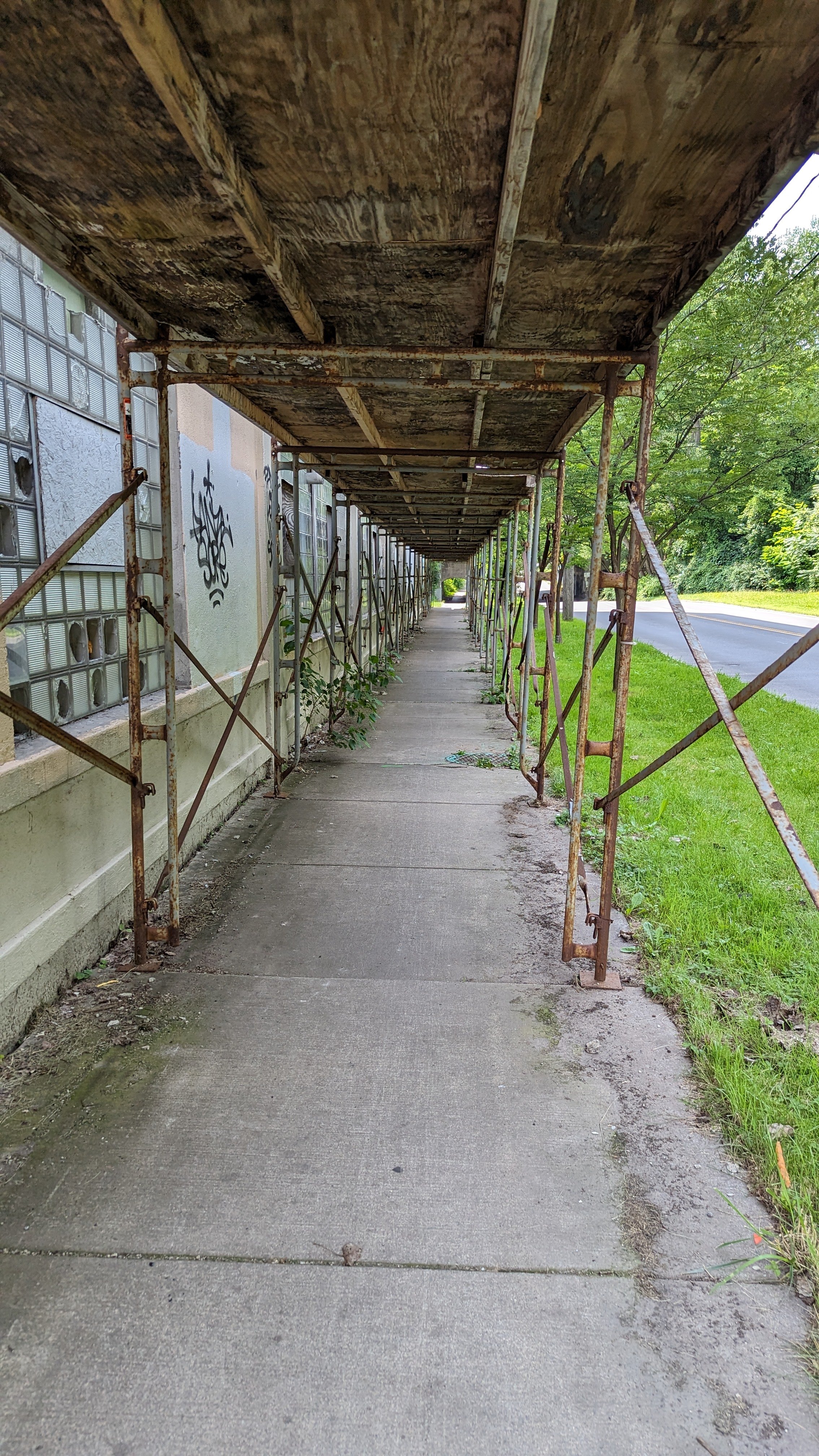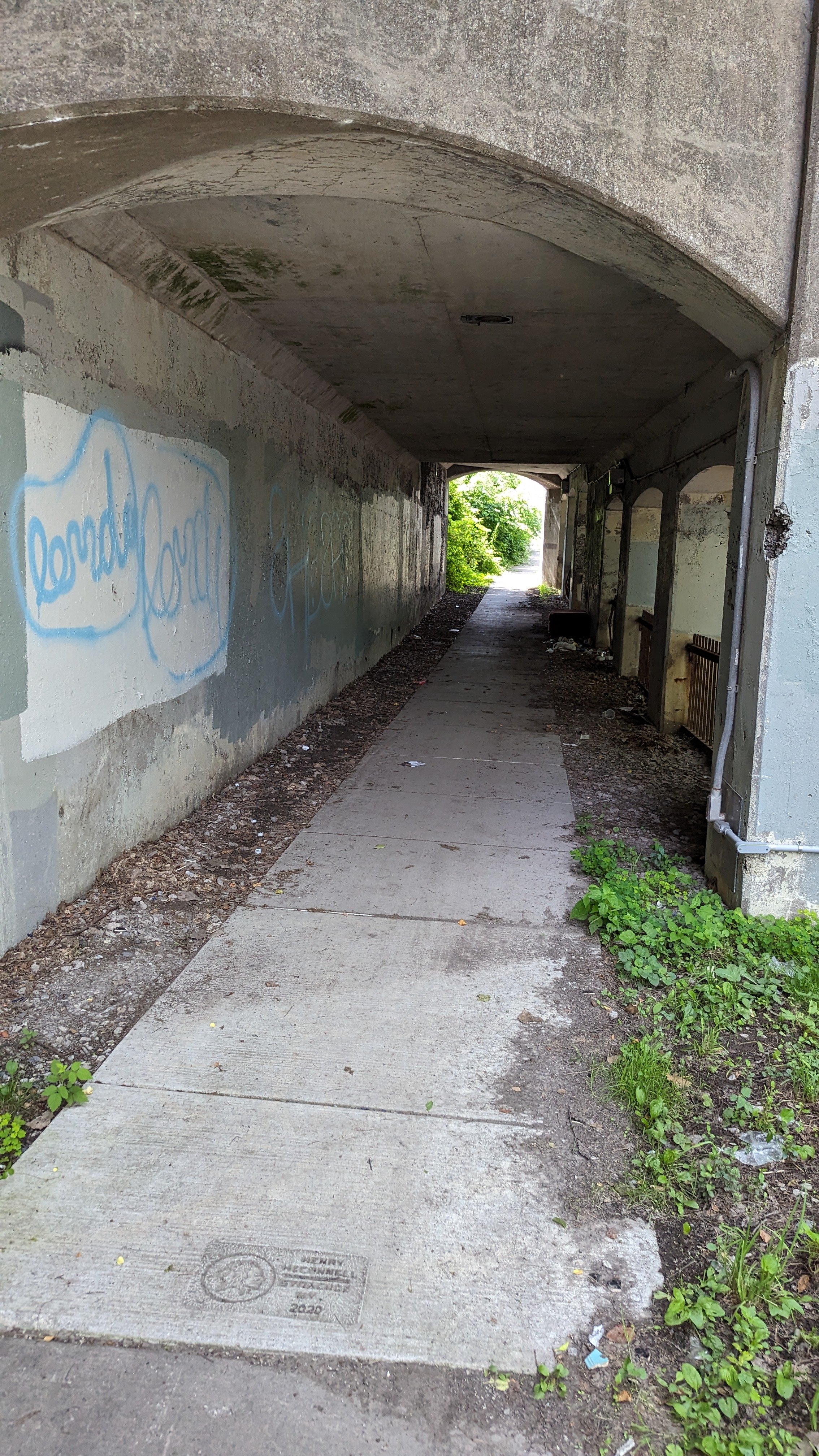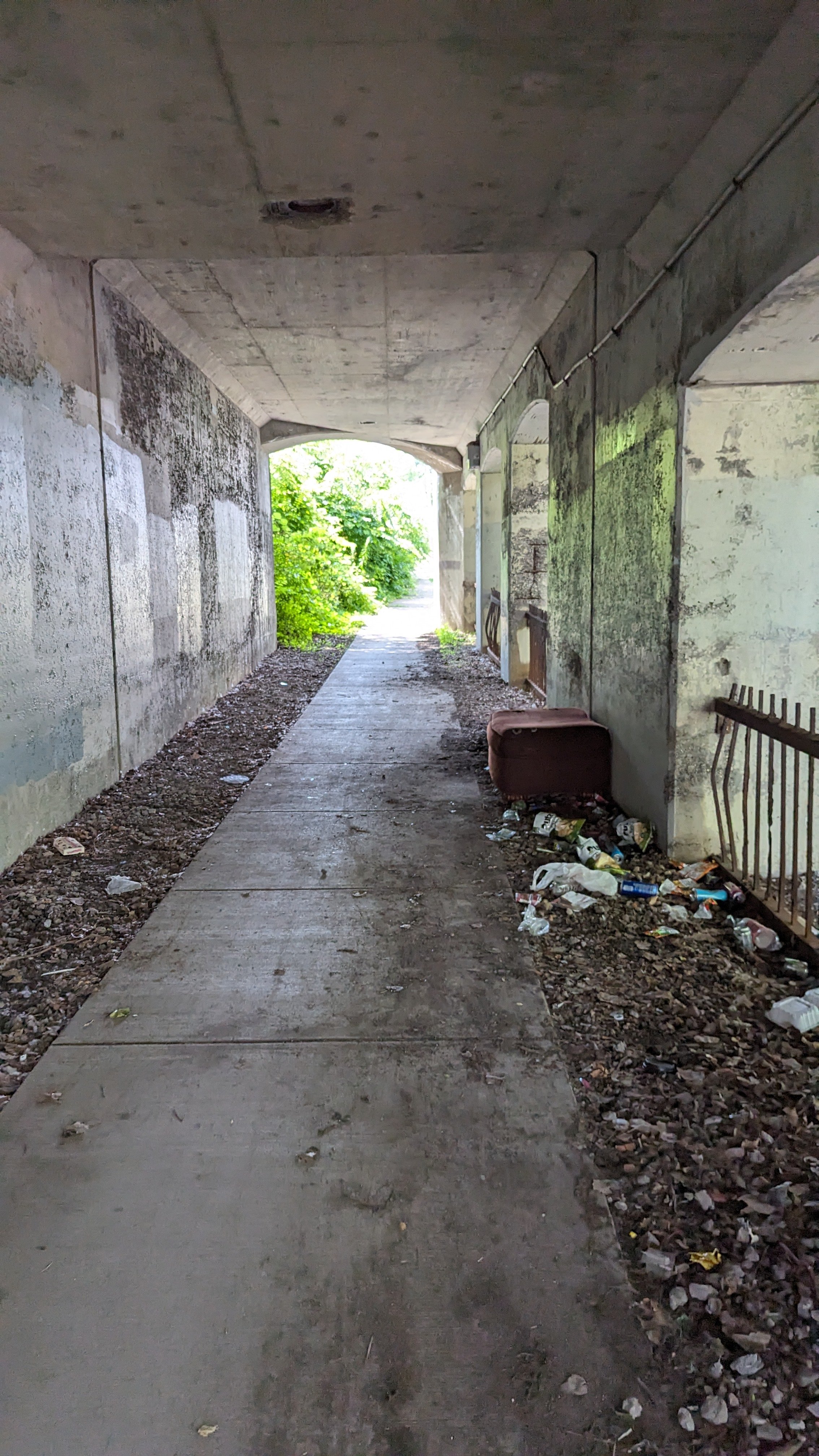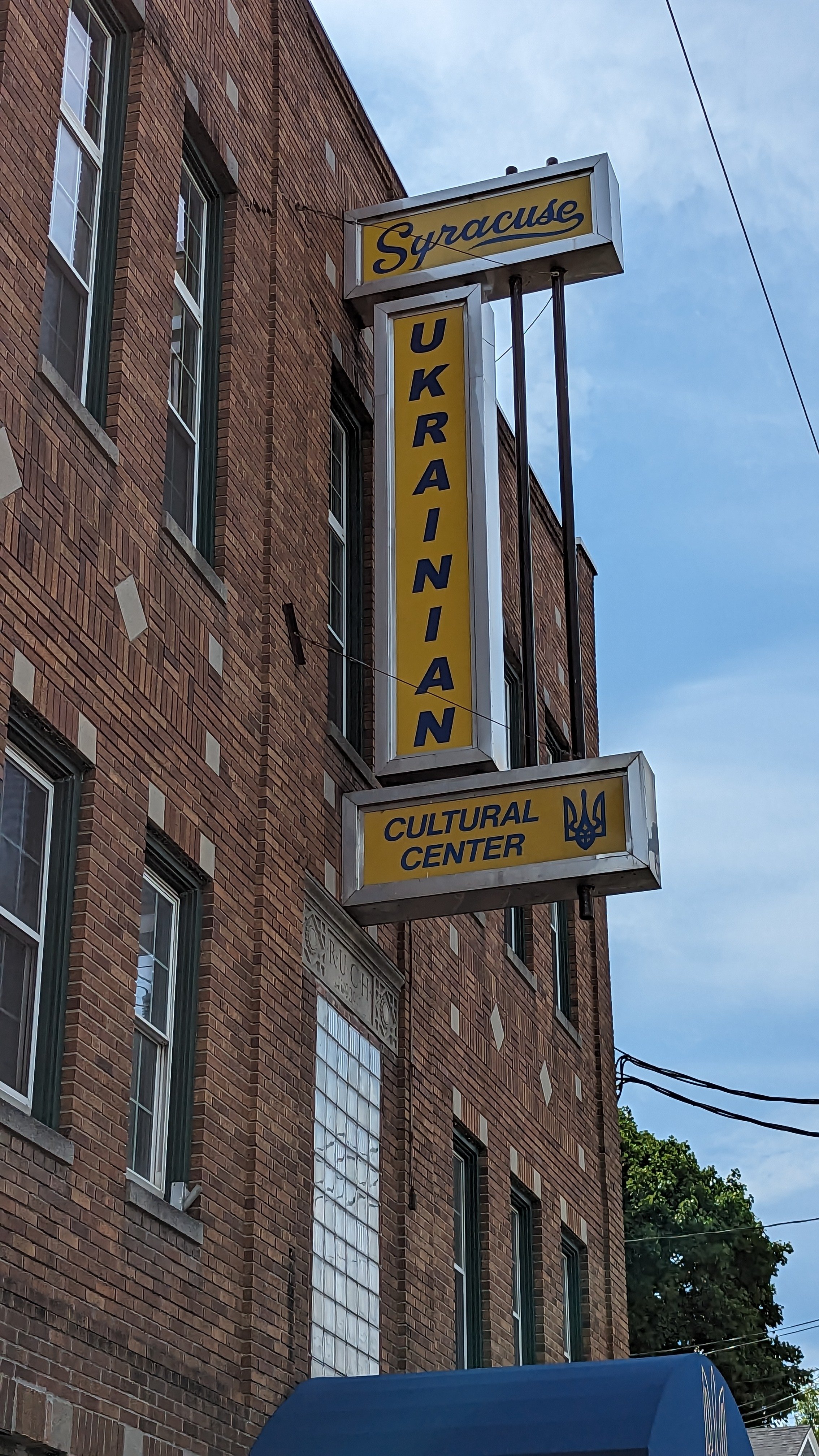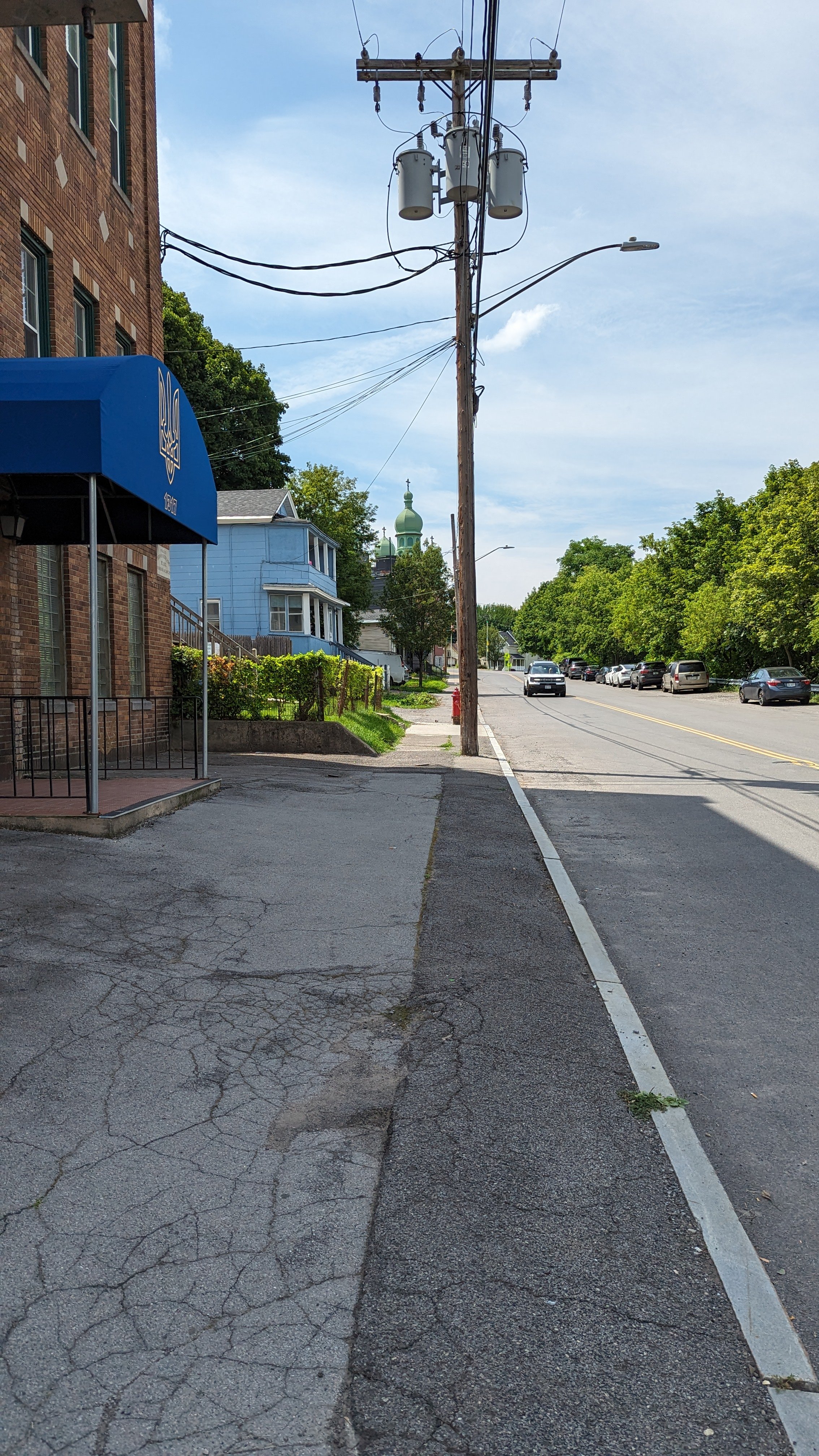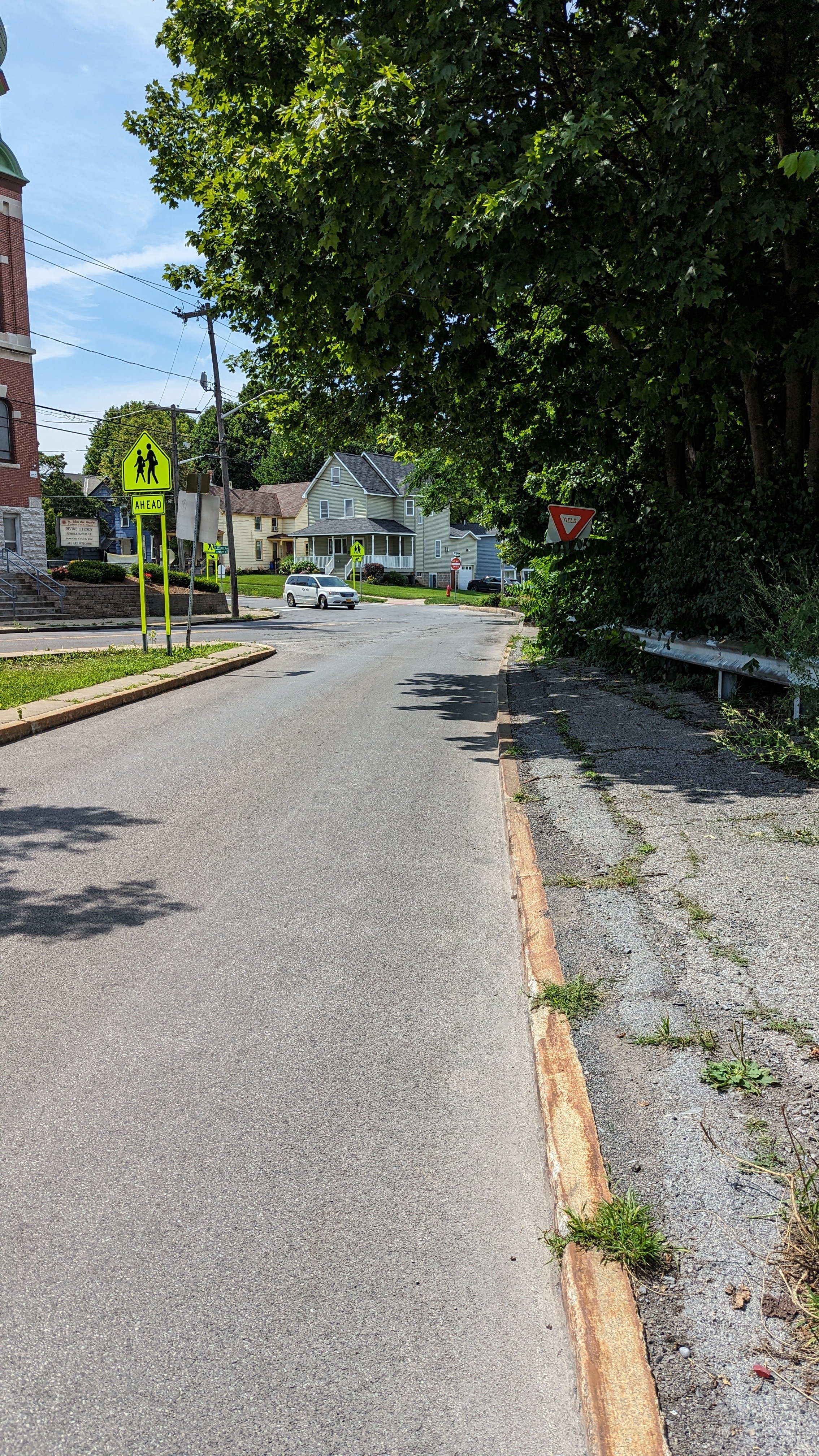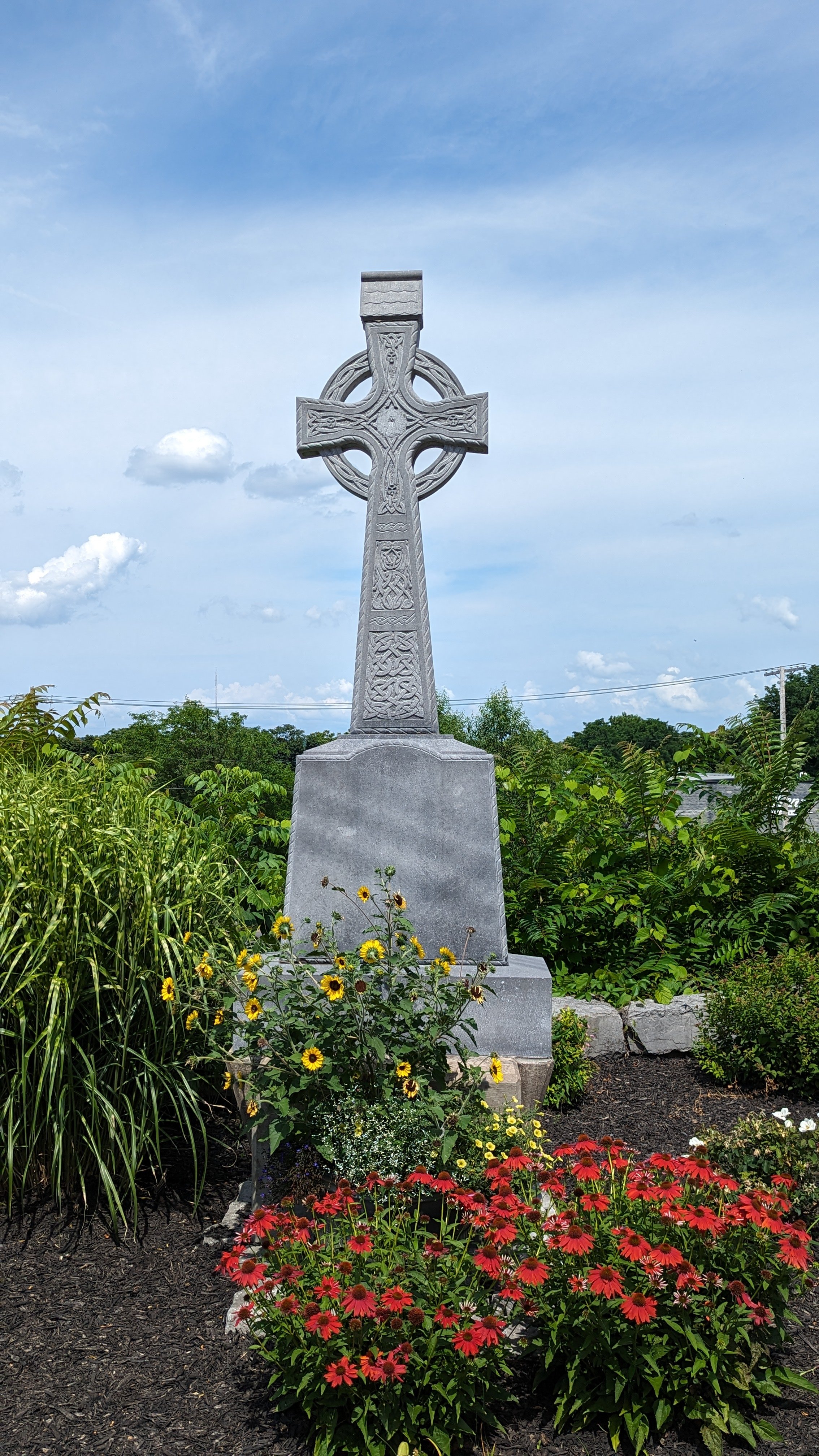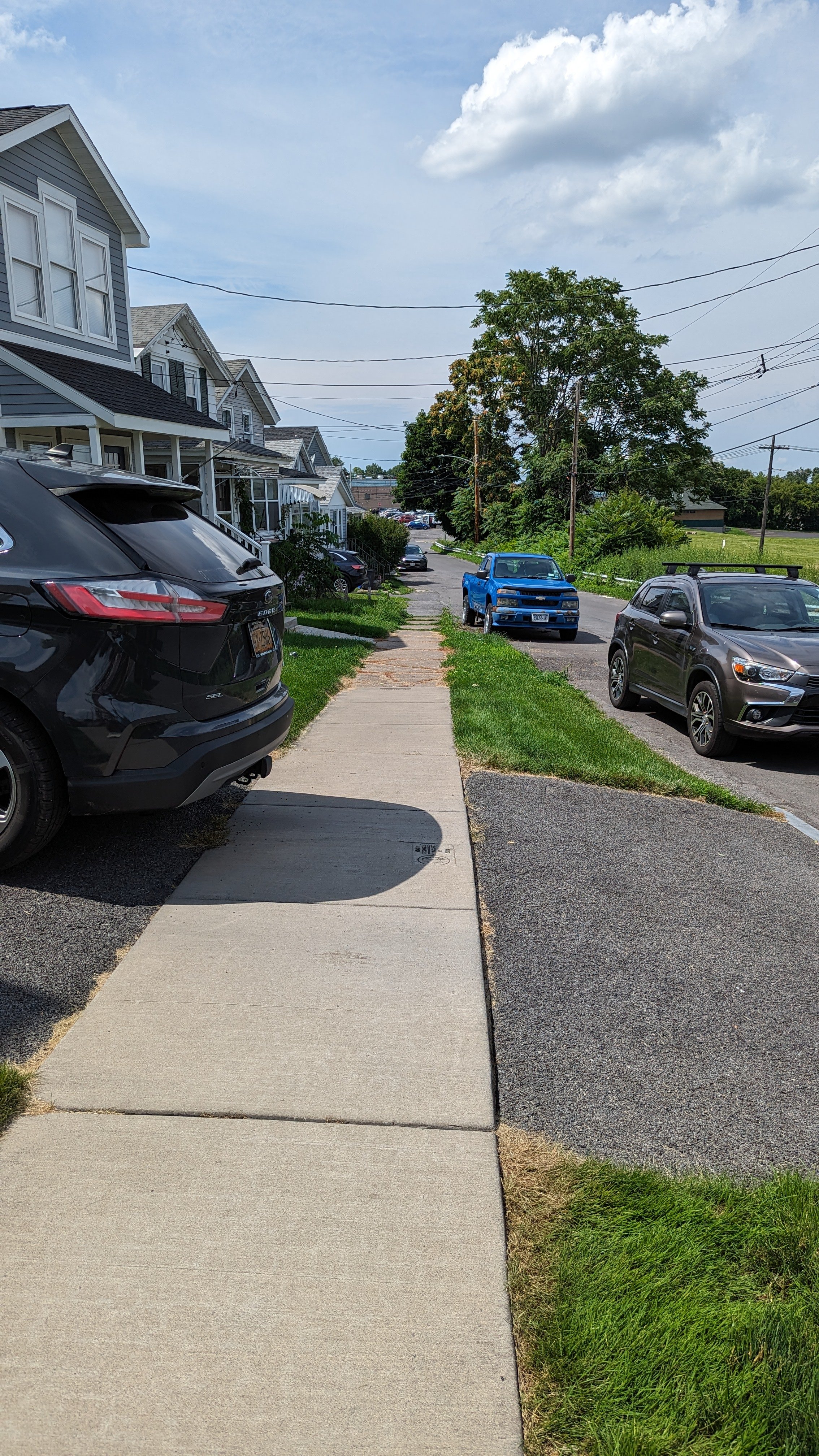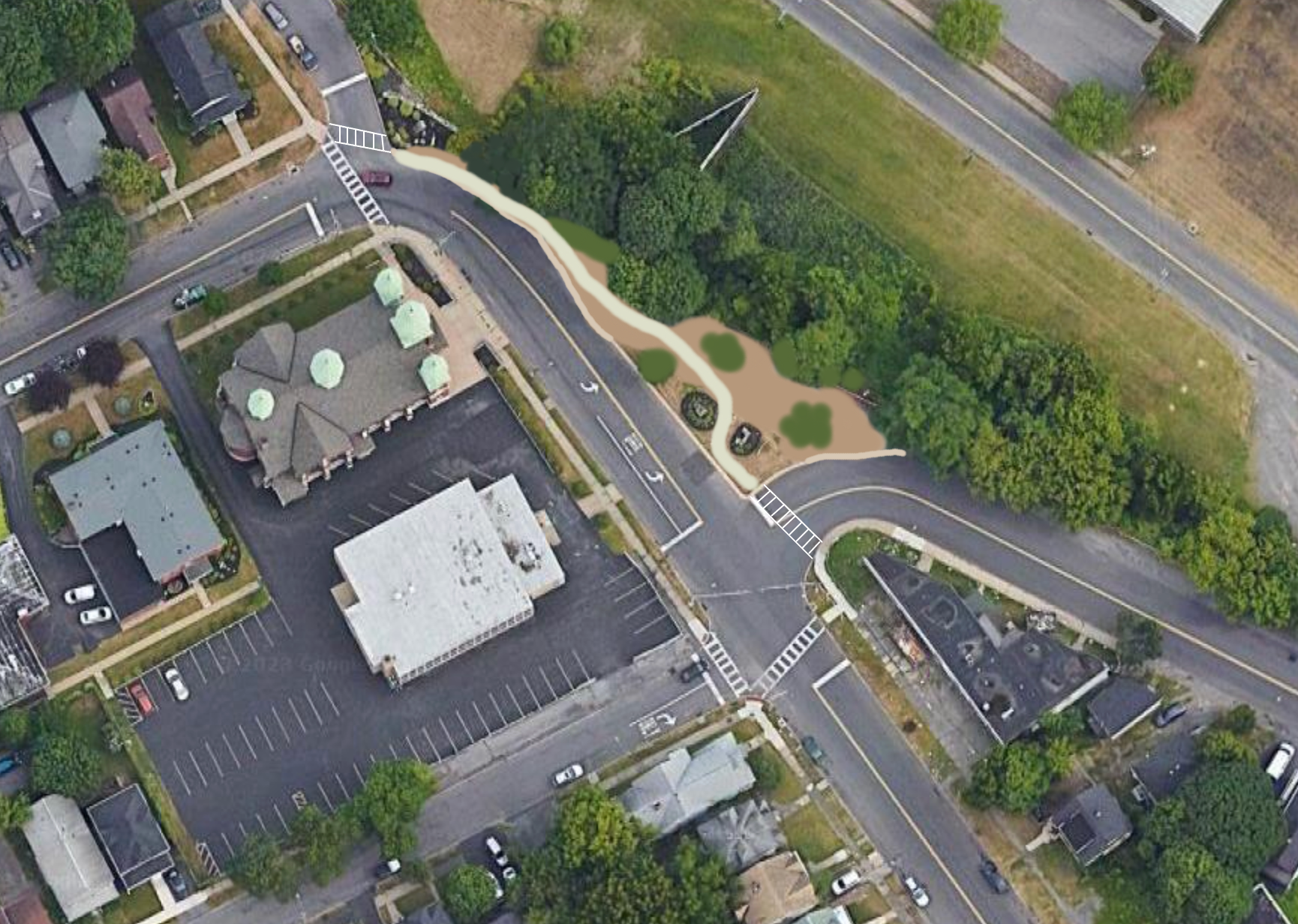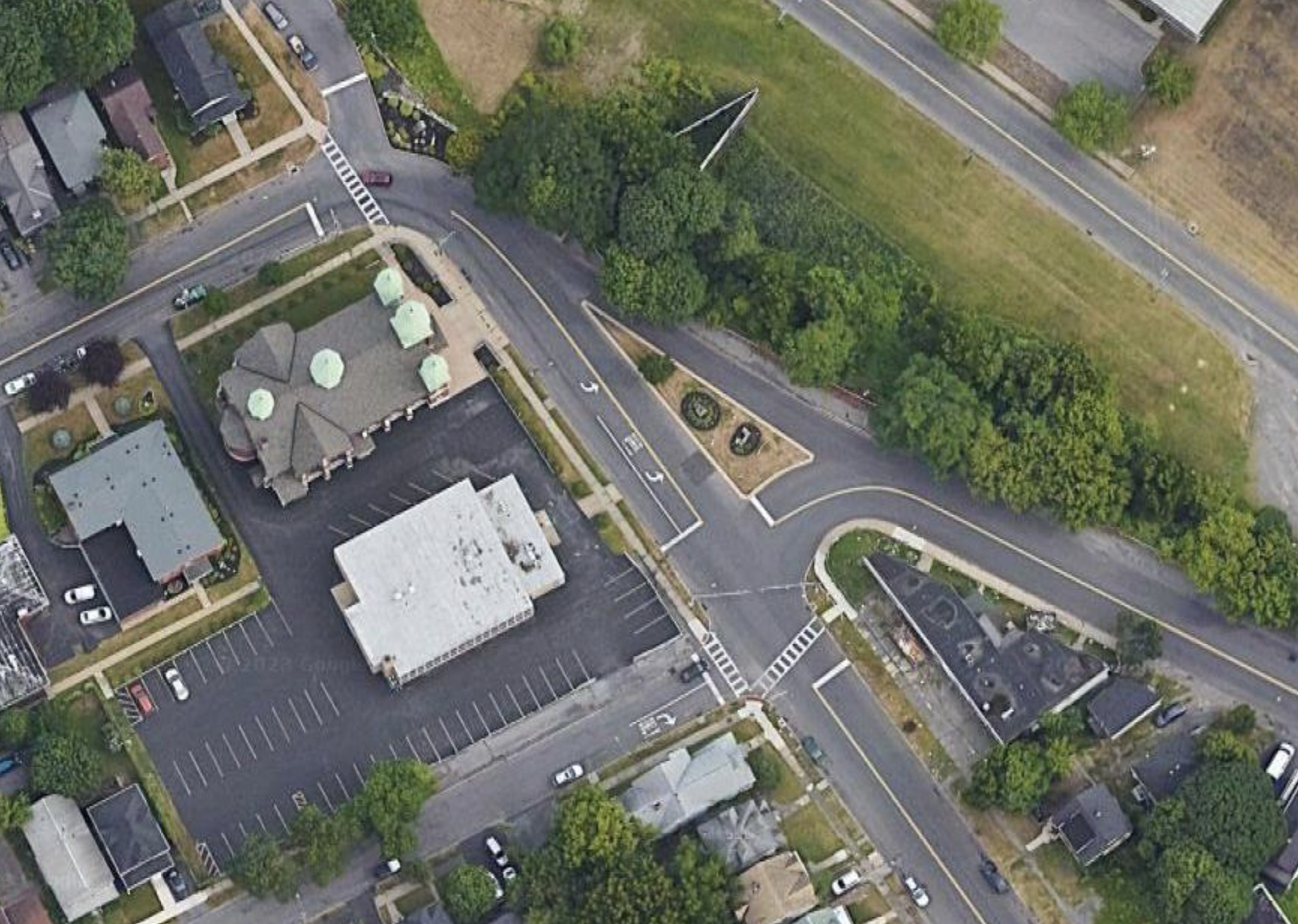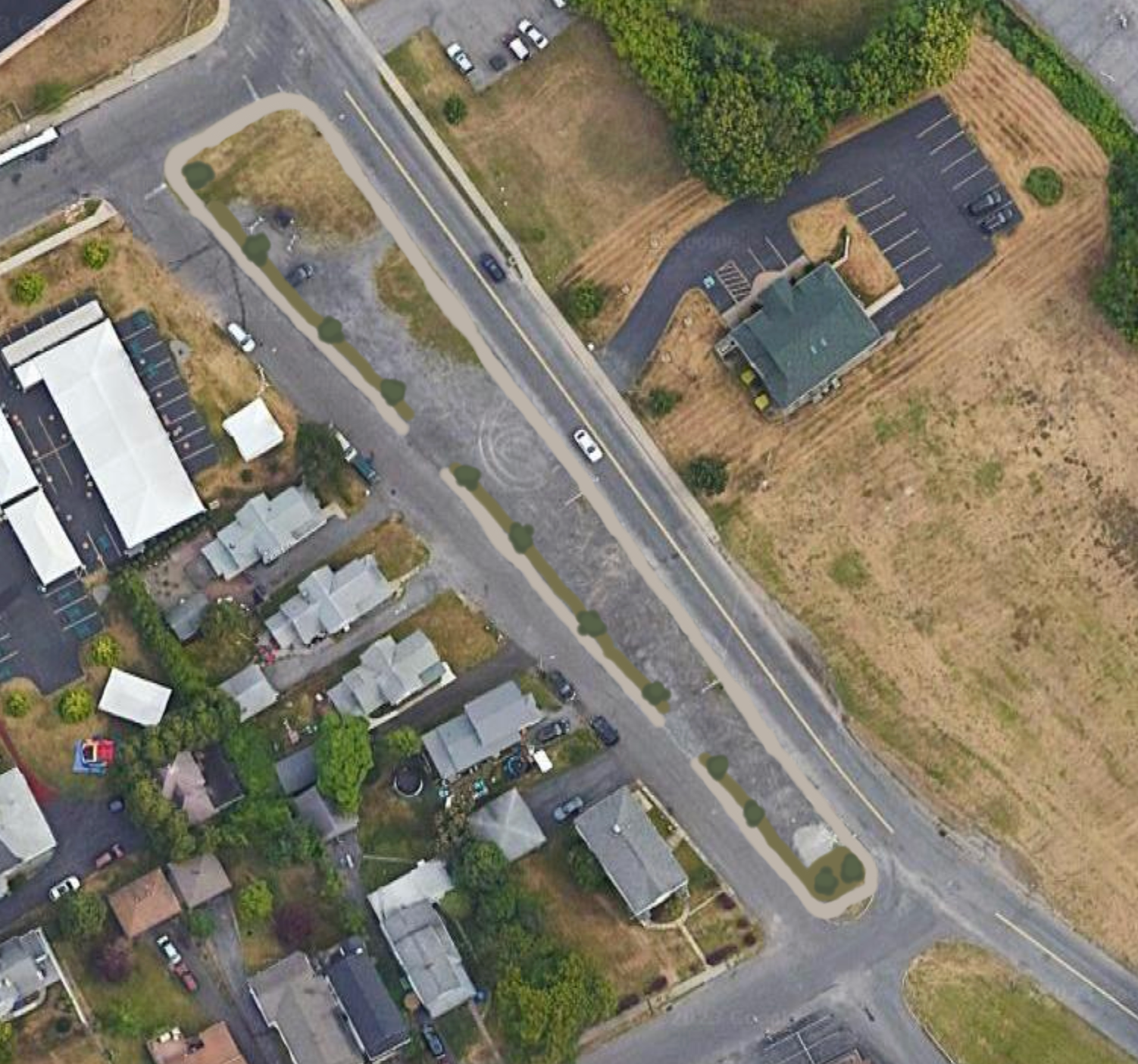Some people would be surprised to learn just how many malls the Syracuse area had at one point in time. Not just the recently closed suburban shopping malls like Shoppingtown and Great Northern, but Camillus, Fayetteville, Penn Can, Fairmount Fair, and others, along with the attempt at an urban mall with the Galleries in Downtown Syracuse. The City was surrounded by indoor shopping malls of various sizes and quality. Today, many of those shopping malls have been converted into outdoor shopping plazas, or, in the case of Penn Can mall, into a mega automotive sales center. Only one indoor shopping center remains: Destiny USA.
While Destiny USA continues to draw crowds during the holiday season and various weekends throughout the year, it is far from the shopping destination it once was. The mall is experiencing high vacancy rates, especially in the addition that opened in 2012, and its owner has defaulted on one of its loans. There are serious concerns about its future, even as new businesses continue to open and existing businesses continue to reinvest in their stores.
Some may argue that we don’t need the mall and wishfully think that its demise would lead to more foot traffic on urban streets. While I agree with the desire for more urban foot traffic and stores in urban environments, the reality is that without Destiny USA, all major retail would continue to exist outside of the City of Syracuse, and we would lose one of the last true third places in our region. Like it or not, the mall attracts a more diverse clientele than any other commercial space in the region and is a major employment center. While we have seen the resurgence of Downtown Syracuse and some other neighborhood business districts, the reality is that we still choose to gather at the mall, and it remains a vital space within our community.
So let’s take a look at what Destiny USA used to be, what was promised, and how we might be able to breathe new life into this important anchor of our community.
Opening in 1990, Carousel Center was by far the largest mall in Central New York, with a seven story atrium at its center, and its namesake carousel dutifully renovated and back in use at nearly 100 years old. The mall’s 1,000,000 square feet of retail space, laid out in a modified dumbbell shape, was filled with 120 shops, including anchor tenants such as Kaufman’s, JCPenney, Chappell’s, and Hills. The corridors were lined with planters filled with tropical plants and display cases. Smaller stores, like the WB Store, Disney, Discovery, and Noodle Kidoodle, emphasized unique layouts, interactive elements, and distinct facades. It was the peak of mall design from the era, focused on creating an experience for all visitors and encouraging them to spend hours wandering the halls.
The mall was an immediate success and became the largest commercial hub in the Syracuse area. Some will blame Carousel’s success for the downfall of the other urban shopping experiment, the Galleries in Downtown Syracuse which opened in 1987. The smaller urban center was an attempt at reinvigorating downtown retail, but the center never was able to truly take off.
Meanwhile, Carousel Center’s owners started to look towards the future with big ambitions. They wanted Carousel Center to grow into the largest mall in America and possibly the world.
In the early 2000s, new designs and promises for the facility seemed to pop up on a near endless stream. A Tuscan Village, a recreation of the Erie Canal, an aquarium, an amusement park, and hotels that would claim their place as the tallest buildings in Syracuse. The exterior design would shift constantly, from an Emerald City look alike to a faux 19th century city to a futuristic dome. The drawings and designs were awe inspiring - an experience that would take days to weeks to fully enjoy. The aim was to take what was successful in other mega-malls, like the Mall of America, and put it on steroids. Looking back, it all feels like a fantasy. The fact that the designs were constantly shifting in dramatic ways should have clued us in that nothing was set in stone, but instead they were searching for the vision that would draw the most interest from the public. The developers promised a shopping and entertainment complex that would bring tens of thousands of jobs and millions of tourists, as long as the City and County would help secure favorable financing.
I won’t go into the financial decisions that were made, nor argue whether they should have been made differently, as there is no going back now.
What was originally deemed the project’s first phase officially opened in 2012, years late and after many of the ceremonial first hires were let go. The expansion pushed the mall to 2.4 million square feet with over 300 shops. The large gray structure’s outward appearance lacked the personality and light of the original structure, instead appearing almost prison-like with few windows or architectural quirks to attract the eye. Inside, the “Canyon” created an open gathering space lined with restaurants and entertainment venues, including a large ropes course and an upside-down museum. Fake trees and sculptural lights attempted to create a personality within the space, but lacked the life of the real trees still used in the original section. The corridor off the “Canyon” lacked any visible identity with the few windows tucked away near entrances, restricting sunlight on our few sunny days.
While the initial list of shops and restaurants brought new and exciting businesses to the region or the first time, including Saks Off 5th, Coach, Nordstrom Rack, the Melting Pot, and Texas de Brazil, the economic realities of our region could not support all of them for long. Shortly after opening Toby Keith’s Bar and Grill closed, with its large space difficult to fill until a new trampoline park opened years later. Margaritaville, which surprisingly only closed in early 2025, never opened its second bar, closed its gift shop (which required a State liquor law exemption just to open), and rarely sat customers past the main bar area. The mall’s ambitions and promises were never fulfilled. This was a case of going too big for what the region could support on its own, but not big enough to make it a destination in its own right. Should further phases have followed the initial expansion, its tough to say what would have been its fate, especially with the increasing reliance of e-commerce for most retail stores, but it may have had more of a fighting chance than this mid-size mega-mall has had.
Destiny USA’s owners recognize that the commercial landscape is changing, and brick and mortar retail across the country is struggling. They have, smartly, begun to pivot more to entertainment and experience driven tenants. This includes traditional mall mainstays like arcades and movie theaters, along with virtual reality centers, an updated go-kart track, the revamped Apex bowling alley, an interactive indoor zoo, and the previously mentioned trampoline park. In recent months it was announced that the movie theaters would be upgraded and an indoor pickle ball club would be opening this year.
These are smart choices that lean into the mall’s previous strengths at creating experiences for visitors vs being a quick place to shop. Destiny USA should continue to explore opportunities in this vane, while being open to an even more diverse set of tenants, which is increasingly common in malls across the country. So what might this pivot look like:
Double Down on Active Uses
The incoming pickle ball club will be an interesting test case for Destiny USA. The sport is incredibly popular around Syracuse, with courts popping up in parks across the county, but indoor facilities are harder to come by. A new indoor club recently opened in DeWitt, and several YMCA’s offer courts on certain nights of the week. But there is a lot of potential in bringing this active use to the mall. Unlike traditional gyms, which have not been as successful in Destiny USA’s history, pickle ball is a more social activity which may encourage its patrons to visit the bars and restaurants throughout the mall after they play. If the facility is designed properly, it could even become host to regional tournaments, which can bring in visitors from across the State.
If successful, Destiny USA should look to attract other similar active uses. One such example is Fieldhouse USA, which operates six locations across four states. Fieldhouse USA pairs various athletic courts, including volleyball, basketball, and tennis, with a kid friendly adventure park, complete with an indoor zip line. These facilities are located in both enclosed malls and strip malls, but offer the benefits of a more traditional anchor tenant as they bring in visitors from across the country. Many of these locations host regional and national tournaments which bring in visitors who will spend days in the community and would benefit from the other amenities already available at the mall. With a hotel across the street and several former anchor stores lying vacant, Destiny USA could easily redevelop one of its prime storefronts and position a similar facility for many regional tournaments, both for kids and adults.
Attract Office Uses
Office tenants may not be as exciting as an indoor sports complex, but they offer stability. While remote work has increased in popularity, the vast majority of companies still require workers to be in the office at least a few days per week. This is especially true for more service oriented businesses, included medical offices. As the Syracuse area grows, there will continue to be a pressure to expand medical service providers and a shortage of convenient locations. Already, many primary care physicians, dentists, and medical specialists have located deeper into the suburbs where parking is free and plentiful, but access for anyone without a vehicle is difficult. Relocating a practice, or opening a new one, within Destiny USA, already one of the top transit stops in the region, would not only provide vital access to lower income residents and those without vehicles, but still retain the ease of vehicle access the more suburban locations offer today.
Other office tenants may also see the value in locating in a large commercial center like the mall, which would provide amenities and access to dining options that a typical suburban office park likely lacks. For the mall, these uses provide stability while also increasing the customer base for the remaining retail tenants.
Consider a Grocer
When looking at the history of the mall, the original intention was for the facility to act as a sort of town square - providing residents with access to their daily needs in one location. This often included a pharmacy, post office, and grocery store. It may be time to revisit this idea.
As the Inner Harbor continues to develop and more residents move into the neighborhood, there will be an increasing demand for a full service grocery store and easy access to a pharmacy. You don’t need to look too far to find another Upstate mall with a grocery store. Colonie Center just outside of Albany is home to the area’s only Whole Foods. Its convenient location as an anchor tenant to the mall, and located near several large office complexes, has been a boon to the area. Destiny USA should look for an opportunity to bring in a unique grocery store, including the possibility of a Whole Foods, that would make it a destination grocer while also providing needed access to food for a growing neighborhood.
Bring In Residents
Speaking of a growing neighborhood, Destiny USA could play a vital role in its creation. While in the past I have floated the idea of redeveloping its northern parking lots near the lakeshore, the most likely candidate for redevelopment lies within the expansive parking lots that sit between Hiawatha Blvd and Bear St. Rarely, if ever, have these lots been full of customers, with the third ring of lots only ever seeing activity during the New York State Fair when they are used as a park and ride location.
With the growing need for housing, and the mall’s growing need for revenue, ownership could choose to either develop the lots themselves or sell them to another developer. With the Inner Harbor seeing hundreds of millions of dollars investments in the coming years, including hundreds of new housing units and the County’s aquarium project, these far flung parking lots could help bring these new residents even closer to the mall’s door.


While many of the new developments will include some level of mix-use, having hundreds of national chains, restaurants, and entertainment venues within an easy walking distance will be an amenity that no other residential properties in Central New York will be able to offer. This creates a captive customer base for retailers who choose to locate within the mall and encourages the expansion non-retail tenants who see the value in locating near potential employees.
The future of Destiny USA does not have to be dark and dismal. With the right choices and creative thinking, we may be at the beginning of its reinvention. Remember, the mall as a concept isn’t dying, its evolving. Look around the world and you will see new, adventurous takes on what the mall can be. Its one of our last true third spaces and one that brings all corners of society together. That’s too important of an asset to lose.



























